What does Success look like?
WHAT PEOPLE THINK IT LOOKS LIKE
"HOW CAN WE DECIDE WHAT SUCCESS MEANS IF EVERY PERSON IS DIFFERENT AND SUCCESS MEANS SOMETHING DIFFERENT TO DIFFERENT PEOPLE?"
MICHAEL, GRADE 7WHAT IT ACTUALLY LOOKS LIKE

Leader s in Learning
Publication Director
Carolynne Bull
Editor Stephen Vogan
Art Direction
Esya Osherovsky
Photography
Carolynne Bull
Jennifer Cameron
Jennifer Clarey
Courtesy of Mariola Garcia ’19
Courtesy of Hoda Gray ’07
Adam Maingot
William Meijer Photography
Courtesy of Helen Pereira-Raso
Courtesy of Viren Shastri ’13
Stephanie Stephens
Storey Wilkins Photography
Elizabeth Wilkinson
David A. Williams
CONTENTS
FALL 2019
Welcome
FROM THE HEAD OF SCHOOL
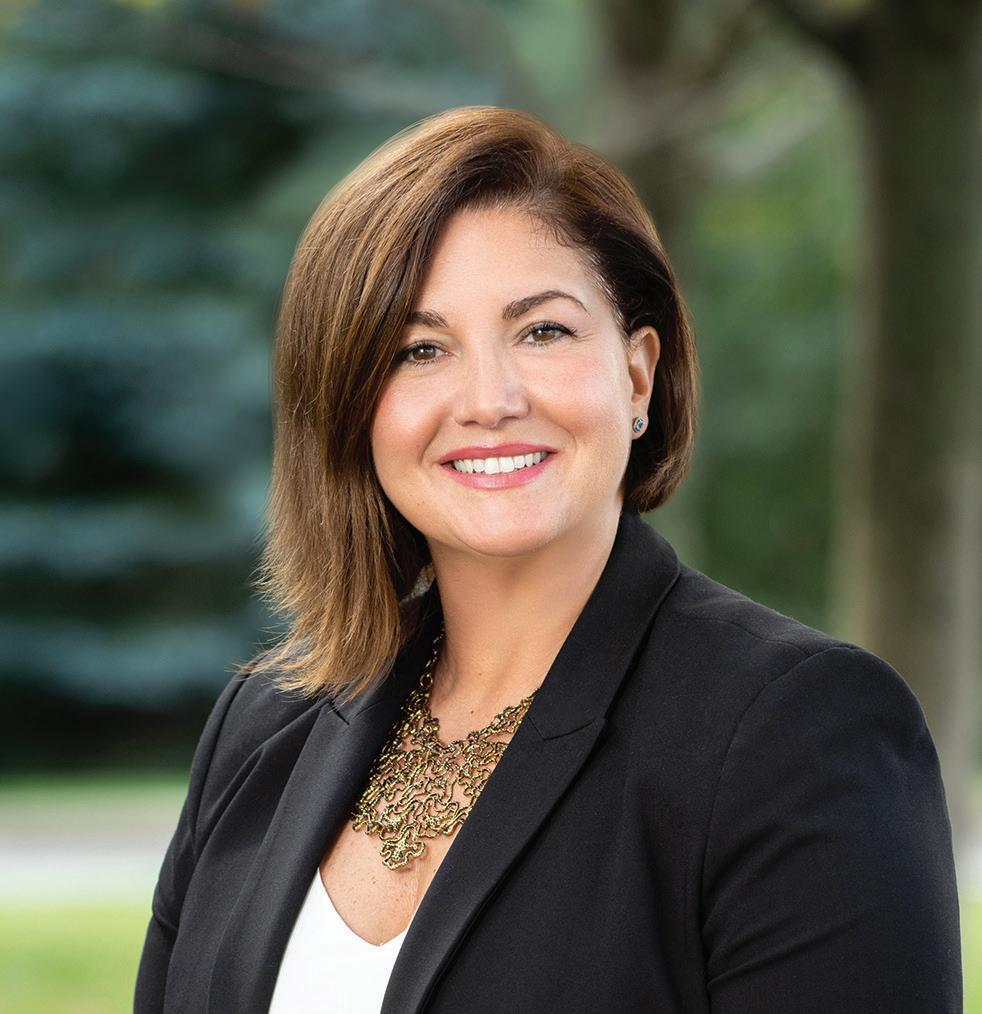
When we reflect on the human experience of learning, we often paint a picture in our mind of the final products – the piece that has a grade on it, the product that was submitted or put on display. In fact, learning is a process that happens along the way. Learning is the journey – the challenges one faces in the process of achieving a goal, the multiple attempts or revisions and, most important, the acquisition of knowledge and skills along the way.
What does success look like?
This edition of Corridors shares stories from all areas of our school that honour the process of working towards success. From our Board of Governors to families, students, educators and alumni, we are all achieving success in our own ways. Our successes reflect our personal pursuits, passions and goals. They are testaments to all the practice, progress, improvement and growth made along the way. If we only ever identify the big achievements as success, we fail to recognize all the characteristics and qualities of what it takes to be successful.
When we focus only on the end result, we fail to communicate to learners the importance of sharing ideas early, getting feedback and revising for improvement. Grade 12 student and Head Prefect Demi Pallas says it best in her article on page 15: “A high mark on a test is a success. However, success is not only the high mark. Success is all the practice, progress, learning and growth the student made along the way.”
By honouring the learning process, we can help build each learners’ confidence, creativity and investment in their own learning and growth. Learning is a process, and it takes time, effort and growth to achieve success, even when we don’t see it. If we want young people to be lifelong learners, we need to show them that success is not about ticking the boxes. Success is about belonging, feeling valued and making connections – to the world, to their families, to their communities and to each other.
As you read through this issue, pay attention to the journey and the dedication our school is working towards as we build a culture that honours the personal success of each learner. In doing so, we honour every person in this community for who they are and who they aspire to be. As Grade 7 student Michael Caruso says, “How can we decide what success means if every person is different and success means something different to different people?” Success is learning along the way and improving throughout the process – start where you are, but don’t stay there. After all, a rapidly evolving world needs confident, driven, intellectually agile and empathetic citizens. The world needs more learners who are invested not only in their personal success but also in the success of their peers, their communities and our global commons.
Sincerely,
Helen Pereira-Raso Head of School
“IN A TIME OF DRASTIC CHANGE, IT IS THE LEARNERS WHO INHERIT THE FUTURE.”
– ERIC HOFFER
"IF WE WANT YOUNG PEOPLE TO BE LIFELONG LEARNERS, WE NEED TO SHOW THEM THAT SUCCESS IS NOT ABOUT TICKING THE BOXES. SUCCESS IS ABOUT BELONGING, FEELING VALUED AND MAKING CONNECTIONS - TO THE WORLD, TO THEIR FAMILIES, TO THEIR COMMUNITIES AND TO EACH OTHER."
"THE WORLD NEEDS MORE LEARNERS WHO ARE INVESTED NOT ONLY IN THEIR PERSONAL SUCCESS BUT ALSO IN THE SUCCESS OF THEIR PEERS, THEIR COMMUNITIES AND OUR GLOBAL COMMONS."
How does successful governance translate into the success of the school?
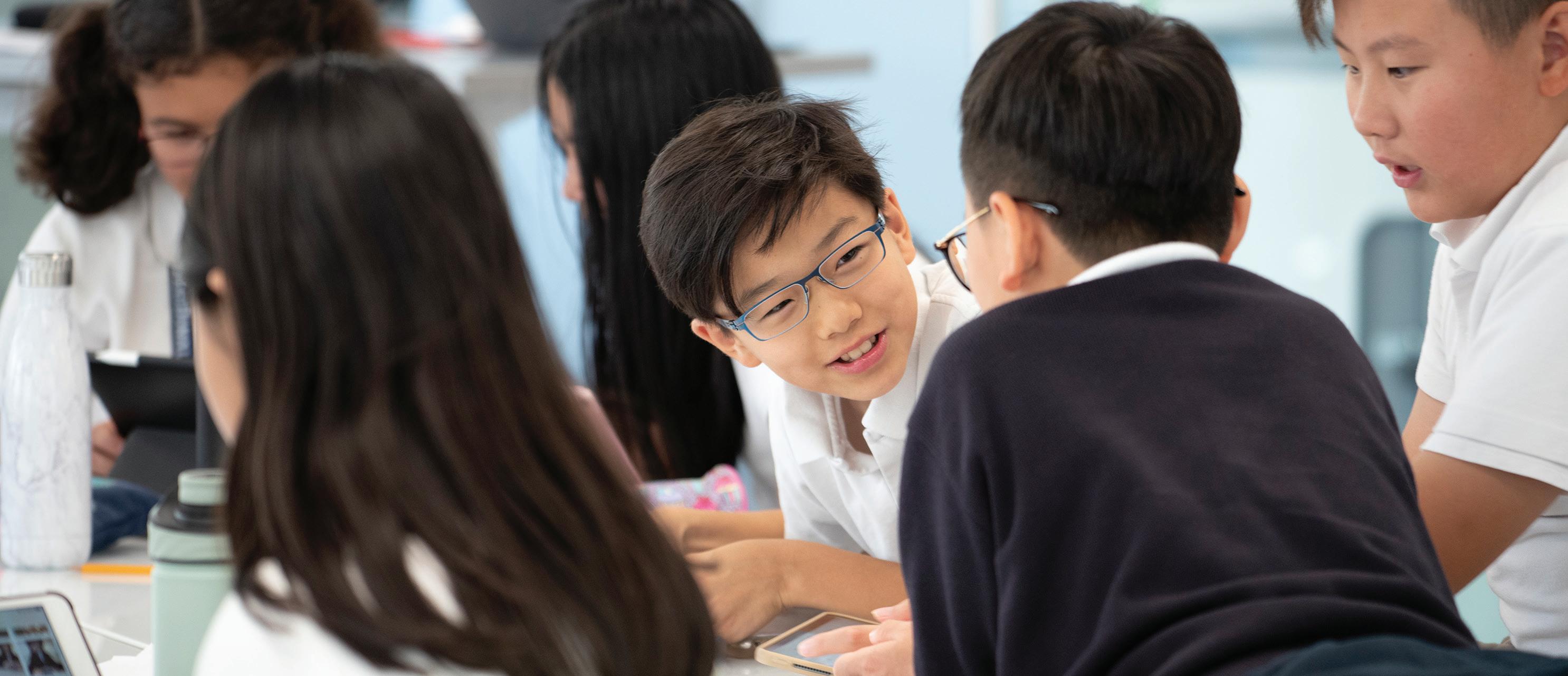 BY ROB WITTMANN, CHAIR OF THE BOARD OF GOVERNORS
BY ROB WITTMANN, CHAIR OF THE BOARD OF GOVERNORS
At Holy Trinity School, the Board of Governors’ membership, structure and processes advance the school’s mission, vision, values and strategic goals. The Board’s fiduciary responsibilities include establishing and reviewing on a regular basis the school’s strategic direction, providing financial stewardship of operating budgets to ensure the long-term financial viability of the school, and implementing sound governance processes, including establishing policies and procedures consistent with those objectives.
The Board annually reviews the major strategic priorities of HTS, and it is working with the Head of School and her leadership team on the development and implementation of the school’s next strategic plan, with a focus on the long-term impact of those decisions. The Board’s annual priorities are derived from these strategic plans.
So how does one know if a Board of Governors has been successful in executing on its mandate? Are there certain indicators? How is it measured? How does successful governance translate into the success of the school?
There are a number of markers and tools for doing so. At its very foundation, the relationship between the Board and Head of School is critical. A healthy, productive, cooperative relationship between the Board Chair and Head of School also plays a very strong role in strategic effectiveness. It is the Chair’s responsibility to maintain a strategic oversight perspective with the Board of Governors and ensure that the Board refrains from operational or tactical decision making. Once the Board has ensured the leadership capacity of the school through the hire of its only employee – the Head of School – then the Head and her team can get on with the tactical execution of their goals.
“GOOD GOVERNANCE IS AN ESSENTIAL PART OF THE FOUNDATION OF PERMANENT AND STRONG INDEPENDENT SCHOOLS.”
– CAIS GOVERNANCE GUIDE
Having the right people on a Board is also critical. Strategically effective Boards are intentional about cultivating, recruiting, orienting and onboarding new Governors. Just as important as selecting the right people, continuously “centring” Governors by orienting them to the nature of the work, with an eye to nurturing mindsets that prioritize effectiveness and generative discussion, is key to a Board’s effectiveness. Finally, proper and intentional succession planning of the Board Chair, the Vice Chair, and the Board Committee Chairs and Vice Chairs ensures continuity.
the Board to consider. The relationship between the use of these Committees and strategic effectiveness is an important structural component of Board governance.
The purposeful use of Committees is associated with increased strategic effectiveness as well as the identification of future Governors. The Board of Governors at HTS currently utilize six Committees – Executive, Governance and Nominations, Finance and Operational Risk, Strategy, Construction and Site, and Advancement. These Committees are comprised of Governors, volunteers and senior leaders of the school working collaboratively to identify for the Board both strategic and in most cases more immediate, tactical concerns within its longer-term focus, and ultimately develop motions for
An ongoing commitment to evaluations, self-assessments and peer review indicates a desire of the Board for continuous improvement in governance practices and effectiveness and ensures depth of leadership on the Board and Committees. These conversations shape school leadership culture in ways that enhance the Head’s and Board’s capacity to identify and respond to threats and enhance our institutional strengths.
Finally, the most important indicator of whether the Board of Governors has been successful in executing on its mandate is evidenced through our students. If our school is living its mission, vision and values and nurturing our children to grow into successful, happy, compassionate and contributing members of society, then we as a community have collectively done our job well.
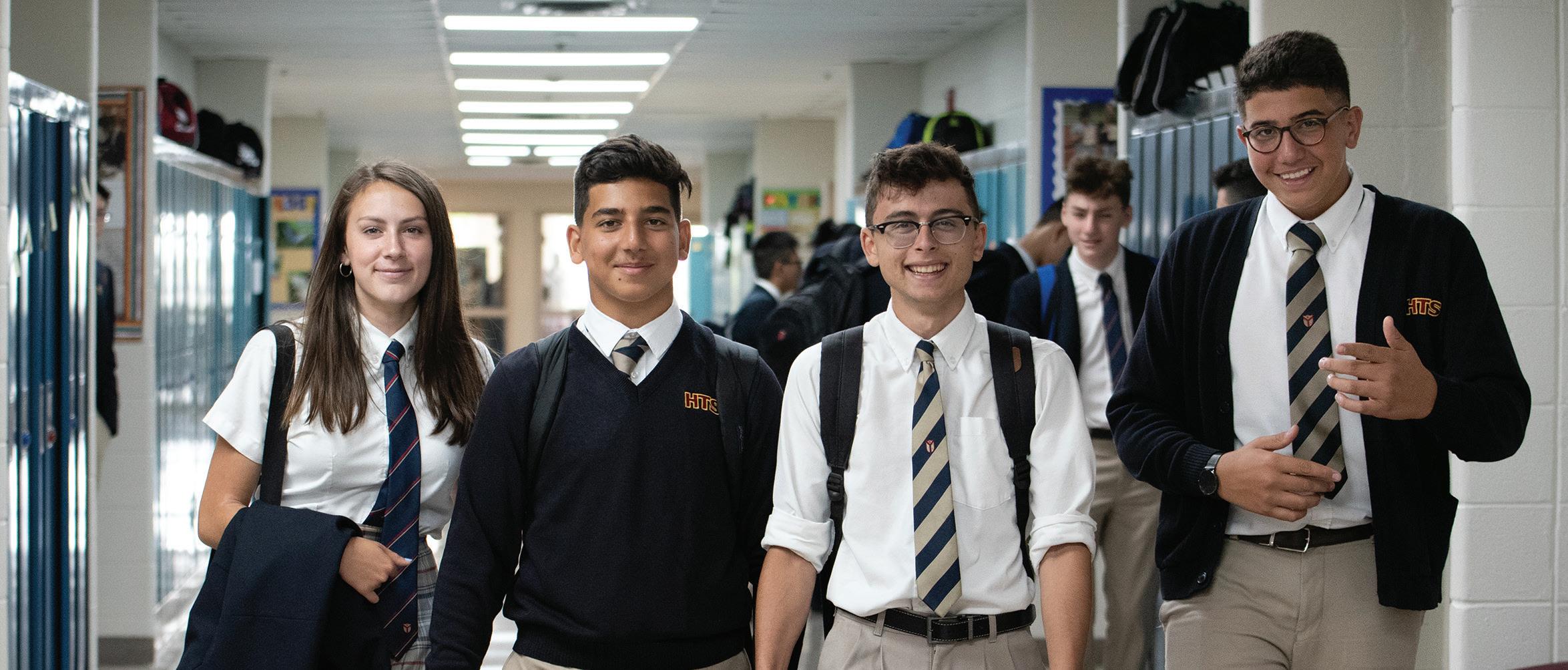

"IF OUR SCHOOL IS LIVING ITS MISSION, VISION AND VALUES AND NURTURING OUR CHILDREN TO GROW INTO SUCCESSFUL, HAPPY, COMPASSIONATE AND CONTRIBUTING MEMBERS OF SOCIETY, THEN WE AS A COMMUNITY HAVE COLLECTIVELY DONE OUR JOB WELL."
Paving Their Own Path to Success
BY RON CARUSO AND ANTOINETTE DESIMINI-CARUSO, HTS PARENTS
Like many siblings, our boys, Michael (age 12) and Andrew (age 8), are similar in many ways: each loves to curl up with a good book, bake delicious treats in the kitchen and belt out his favourite songs at the top of his lungs. However, in other ways they could not be more different. Michael is outgoing, keeps us abreast of all
things pop culture, loves the performing arts and is at home in the spotlight. Andrew lives and breathes all things hockey, loves to draw and is our family technology whiz. Both boys love and look forward to going to school, and each is finding success at HTS in his own way.
In our journey of selecting a school for our family, we wanted a place that would challenge our children academically. More importantly, though, we wanted them to spend their days in an environment that would help shape their character through their most formative years in a way that aligns with the beliefs and values we hold as a family. The boys feel cared for and valued at school. Every morning, they are greeted at the doors of the school by the Senior School Prefects, the Head of School or Heads of Division, and with a warm smile or fist bump from their homeroom teachers. In our tight-knit community, with faculty who genuinely care for each student, our boys can be vulnerable, make mistakes and grow.
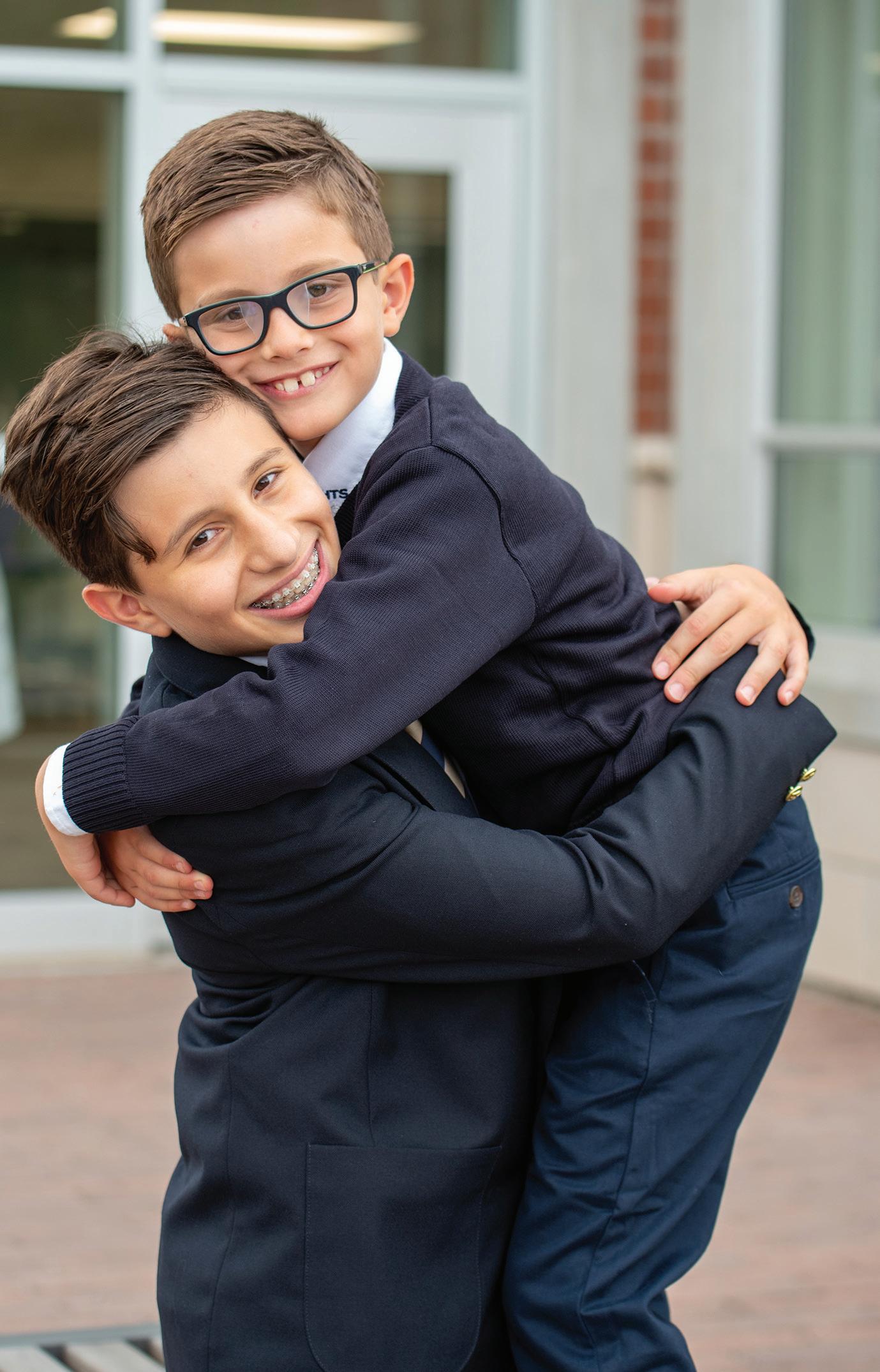
Michael and Andrew have taken advantage of the varied cocurricular offerings at HTS and have both pushed themselves to try a club or team that is outside of their comfort zone. From Glee Club to soccer, cross-country to the Rube Goldberg Club, these activities broaden their horizons and encourage them to connect with students in different grades and with faculty from all parts of the school.
We both look back fondly on memories of overnight trips we took when we were in school, and we encourage the boys to make the most of these experiences. Michael’s trip to Camp Wanakita in Grade 4 was his first time away from home in a camp setting, and we were all apprehensive. Would he miss us? Would we be asked to drive up to the camp in the middle of the night to pick him up? He was nervous, but he overcame that bit of homesickness and returned with a huge grin on his face and a feeling of accomplishment and pride. We’ve found that breakaway and other overnight trips are a wonderful way to build self-esteem and form bonds with classmates and teachers, and we are grateful that they can have these experiences with the security of caring teachers and student leaders.
Being part of a school committed to character development, we find common ground with the values of empathy, respect and inclusion that are core beliefs at HTS. Through the Parent Speaker Series, we hear from leading parenting experts and engage in dialogue with other HTS parents about the successes and challenges we face in raising our children. In the Lower School, Mrs. Heather MacDonald shares a list of parenting books and resources – many of which have helped guide us as we navigate the different stages of our parenting journey.
We follow our boys’ adventures at school on Twitter and use this as a springboard to discuss what they’ve been learning throughout the day. Following their teachers and other faculty and staff gives us insight into trends in education, the future of work and resources we might wish to tap into. As we chat with faculty in the halls, we hear tidbits about their interactions with our boys and have a window into their days. We’re grateful for the open communication and an environment that is welcoming to families at HTS.
Being active in the HTS community connects us to the school and to other families. It offers us the opportunity to model service for our boys in a way that they can see and experience first-hand. Ron was a member of the strategy subcommittee of the Board of Governors, and he’s joined the Board this year. Antoinette has participated on various learning teams and working groups, she’s volunteered as a Grade Parent and at Parents’ Guild events, and she’s a member of the Parents’ Guild
"IN OUR TIGHT-KNIT COMMUNITY, WITH FACULTY WHO GENUINELY CARE FOR EACH STUDENT, OUR BOYS CAN BE VULNERABLE, MAKE MISTAKES AND GROW."
Executive. We also try to attend social events put on by the school or Guild throughout the year that offer opportunities for families to come together.
One of our favourite events of the school year is the Father Bob Run. It’s so wonderful to see the entire student body, alongside teachers, administrators and parents, enjoying an afternoon of school spirit and community building. Neither of us considers ourselves runners, but for the last few years, we’ve donned our House T-shirts (Go, Langton!) and joined in the parent run. We often encourage our boys to put themselves out there and try something new, and participating in the parent run is one way we can walk that talk. We both vouch that we didn’t think we’d make it in our first outing, and neither of us has come in with a spectacular time – but we’ve had so much fun meeting other parents, collecting House points and cheering each other on.
Our boys also strive to give back to our HTS community, and they develop stronger leadership skills in doing so. Both have served as ambassadors at school open houses and orientation days for new students, and Michael was a Lower School Prefect last year. In this role, he developed leadership skills by helping with supervision of the Kindergarten students during lunch, leading Chapel with his peers and making announcements. HTS also offers many opportunities to give back to our local community, such as volunteering at Martha’s Table, participating in food and clothing drives, and various fundraising activities during Connections week. As Michael and Andrew progress into Middle and Senior School, and later as alumni, opportunities such as these will continue to deepen and strengthen their connection to HTS and their community.

As leaders in education, HTS embraces new ways of working for teachers and new ways of learning for students. From the stateof-the-art innovation labs, to applying design-thinking principles to solve real-world problems, to entrepreneurial Dragons’ Den–type competitions, our sons are thriving in this environment. HTS offers unique ways for students to show mastery of the topics they study. Last year, we were invited to the innovation lab to witness how the Grade 2 students used what they learned about simple machines during science class to create Santa’s Workshop. They presented their work to visitors and explained how they used simple machines to create new ways for Santa and his elves to build, wrap and prepare toys for shipping. Throughout the hallways of HTS, student work and evidence of learning is on full display. This sparks conversation about what students are working on and also gives younger students a window into what they might expect in future grades.
As parents, we hope our children will grow up to be wellrounded, empathetic, hard-working members of society who give back to their community. Earlier this summer, we sat with the boys and asked them how they’d define success (admittedly a big question for their ages). We talked for a while about grades, character and career – and then Michael turned to us and said, “Wait, how can we decide what success means if every person is different and success means something different to different people?” HTS is a valued partner in our journey as a family, and we are grateful that Michael and Andrew are paving their individual paths to success in this environment.
In 2006, the graduating class initiated the Graduating Class of 2006 Endowment Fund, now known as the Graduation Endowment Fund. Twelve years ago, the students and their parents were asked to consider pledging their $500 working capital (collected at the time of enrollment) as well as an additional $500 to top up their donation to $1,000. The Class of 2006 students created a steering group that made recommendations on how the income generated by the endowment fund would be used, and it was decided that the funds would be given to a student with a financial need. HTS alumni and families will agree that every child should be given a chance to experience HTS, irrespective of household financial ability.
The generosity of the Class of 2006, along with their families and of subsequent classes has provided financial assistance to students since 2012. In 2016, the first student to receive financial assistance from the Graduation Endowment Fund graduated.
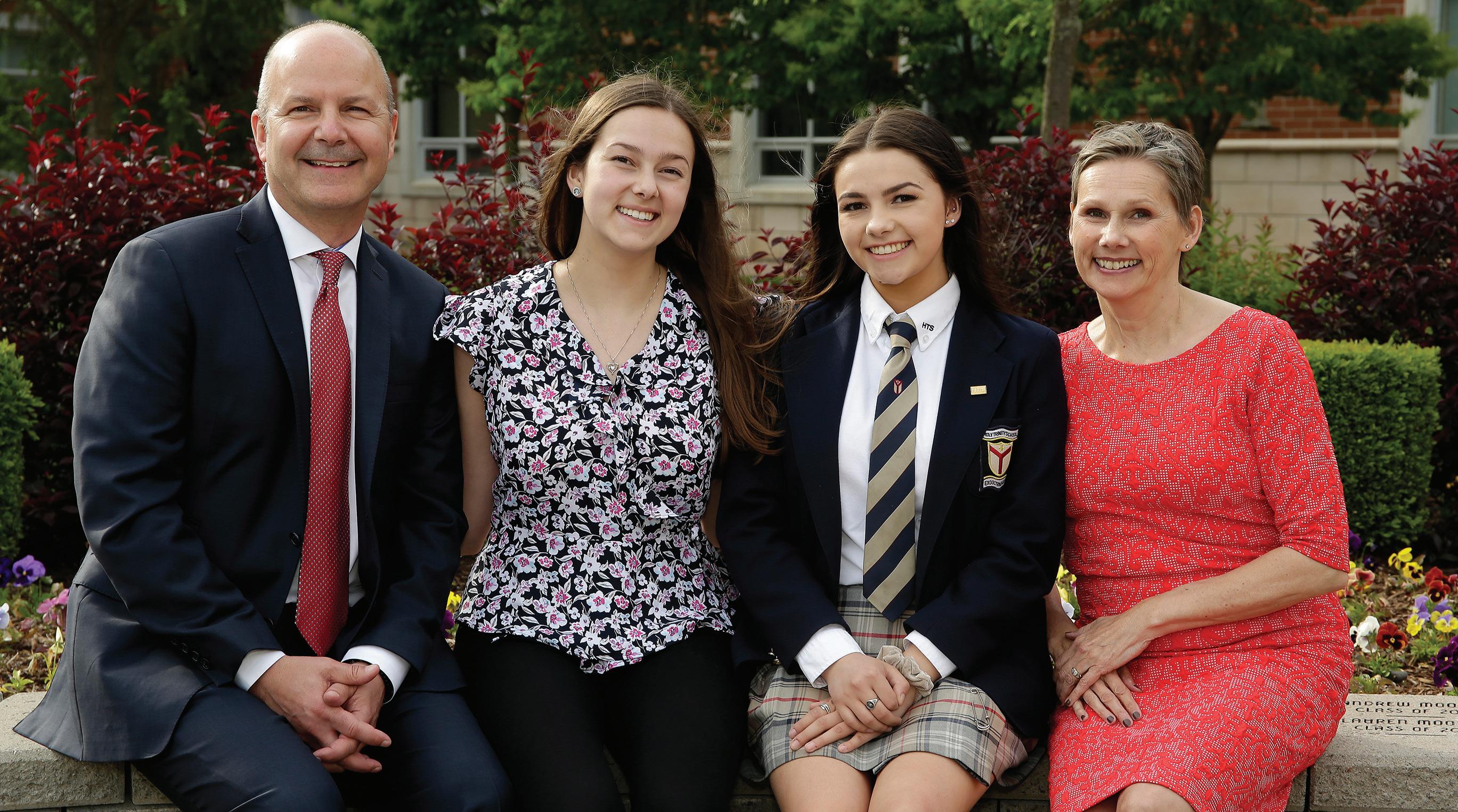
On behalf of all past, current and future beneficiaries of the Graduation Endowment Fund, thank you to the graduating families who have supported the fund. HTS is grateful to all the Chairs over the years, for taking the lead in reaching out and asking peers to support future students through financial aid.
Thank you to Mr. Stewart Priddle and Ms Marta Hill, the Class of 2019 Graduation Endowment Chairs.
This incredible legacy – initiated by the Class of 2006, and built upon by hundreds of HTS families – will continue to benefit students for many years to come.
Mr. Stewart Priddle and Ms Marta Hill with their daughters Charlotte ’16 and Sophie ’19 (not pictured Madeleine ’13).Continuous Learning Is Fundamental in Education
BY SANDRA HERBST, GLOBAL LEADER IN LEARNING AND LEADERSHIP DEVELOPMENTFor some people, air travel is a way to get to their holiday destinations; for others, it’s how they get to their next place of work. As a business traveller, I spend a lot of time in the air, and thankfully I’ve experienced only a couple of emergency landings. You may be wondering why I begin this piece with such a reference, so allow me to make the connection. Advancements in aviation do not negate the fundamentals of flight, but they do make certain past procedures and protocols obsolete. As a result, I recognize that the experience a pilot and co-pilot bring is crucial, but continuous training and upgrading is equally important. In other words, a successful experience for me is directly connected to the expertise the crew brings to each flight.
Research in education is also unequivocal in this area. School improvement and student achievement “is built on adult learning, which changes over time and can be encouraged and supported by savvy school leaders. Moreover, [teacher practice] develops in complex ways as teachers grow and learn, and is dependent on critical support from colleagues and principals” [Fahey and Ippolito, "How to Build Schools Where Adults Learn," Journal of Staff Development, Vol. 35, No. 2 (April 2014)]. Just like pilots, educators rely on their deep experience, which is refined and revised over time through processes of professional renewal and development.
That brings us to the work unfolding at HTS. For the past five years, the faculty have focused on gaining a deeper understanding of effective classroom assessment, evaluation and reporting practices, to better support high levels of student learning and achievement, communicate meaningfully with parents and fulfil required legal and regulatory responsibilities. What they have come to know is that there is no single right answer to the questions they are collectively asking, but rather multiple pathways
Sandra Herbst, Global Leader in Learning and Leadership Development
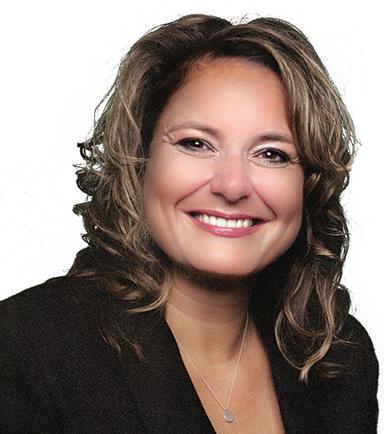
Sandra Herbst is a noted system leader, author, speaker, coach, consultant and educator with extensive experience in leadership development, adult learning, change management, system alignment and assessment. Sandra’s roles as teacher (Elementary, Secondary and specialist), school leader, assistant superintendent, and advisor to Ministries of Education contribute to a broad range of practical insights that serve to enhance her vast theoretical knowledge.
Sandra has worked with the HTS staff over the past five years and continues to help them further their development of effective classroom assessment, evaluation and reporting practices as well as led the Senior Leadership Team to evolve their leadership skills.
As Sandra works with schools, systems and organizations, whether in person or online, she tailors her work to meet the learners’ needs. At the core, Sandra is an educator and she is committed to seeing the educational system contribute to the success of all learners.
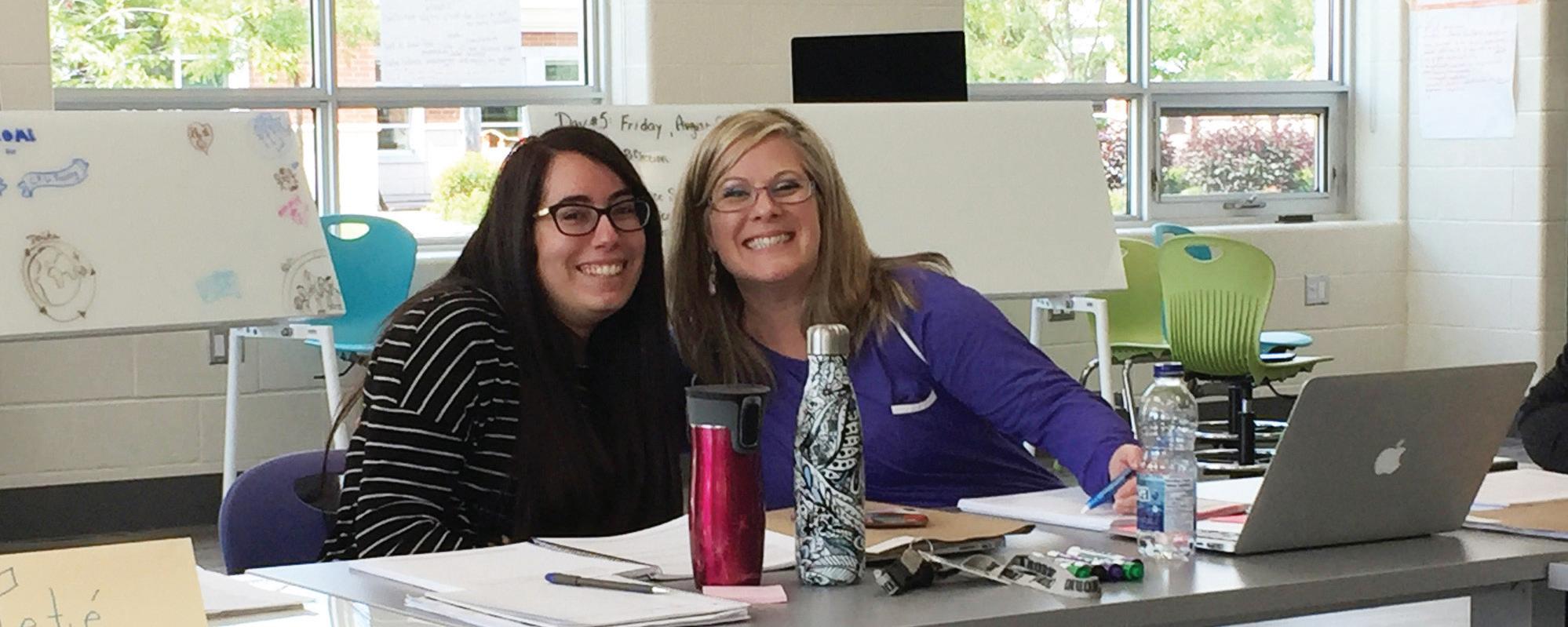
that respect the structure of each unique subject area and the different ways that students learn and demonstrate that learning.
Today, assessment, evaluation and reporting are different from the practices that educators used during the 20th century, whether the issue is about assigning zeros, what counts as reliable and valid evidence and data, or equity vs. equality. It is no wonder that teachers, students and parents alike may experience some cognitive dissonance in this area. However, the HTS faculty have tackled these issues by looking both to research and to their own experiences. This is what makes HTS a leading educational organization. Like the pilots mentioned earlier, HTS staff are building on what they already know and revising their understanding based on research and evidencecentred practices.
Let me share with you a couple of aspects of assessment, evaluation and reporting that have been transformed in the last 15 years or so.
When I began my teaching career, the mark that I put on the report card was the result of a deceptively simple algorithm. More specifically, I added up all of the scores that my students had received on tests, quizzes and assignments and calculated the average. This seemed to make sense at the time, but since then, what students need to be able to know, do and articulate in any subject area has become increasingly complex; my simple algorithm would no longer serve to uncover the truth about my students’ learning. From a 21st-century perspective, our curricular documents expect students to engage in far more complex learning – for example, critical thinking, democratic discourse, environmental stewardship, cross-cultural respect, scientific inquiry, entrepreneurial spirit, and the list goes on and on. No single test, quiz or exam can allow students to demonstrate their rich and multi-faceted understanding. Students are observed by their teachers to determine levels of achievement. Are they supporting their viewpoints in a discussion with credible evidence? Do they engage in ethical research practices? Can they ask questions to probe for specificity when they do not understand what another classmate is proposing? Can they describe their mathematical thinking to someone else? This means that grade books cannot be filled only with marks or scores from tests, quizzes and assignments. The marks and scores must be accompanied by evidence from observing students in process and having conversations with them about their thinking processes.
I don’t want to oversimplify things, but in the past, teachers engaged in a significant amount of direct teaching, assigning work and adjudicating a score on that assigned work. Often, successful students were the ones who could “read between the lines” in relation to what was expected. A scoring guide might have been distributed, but the refrain “I don’t understand what the teacher wants in this project/assignment”
was often heard from students. We can’t just tell students what they need to learn and what their learning needs to look like. Students need to know for themselves what they know, can do and can articulate. Therefore, we need strategies for teachers to use that are simple, practical and possible in the personalized classroom. Students need to deeply understand what quality and proficiency look like, to give and receive specific and descriptive feedback, and to create and have a role in providing evidence of their learning. Teachers who involve students in classroom assessment engage students in the following ways:
• Co-constructing success criteria
• Analyzing samples of student work
• Undertaking self and peer feedback
• Setting meaningful goals
• Collecting evidence of learning from multiple sources In fact, decades of research states over and over again that the more students are involved in exactly these ways, the higher their achievement.
Jurisdictions and systems across Canada and the globe are prioritizing and focusing on assessment practices and examining their practice in areas just like the ones described above. In fact, I am finalizing this article while in Singapore, where I have spent the last week working with leaders as they look more deeply into quality classroom assessment – and this in a country that generally is rated among the highestperforming countries in the world against Programme for International Student Assessment (PISA) measures.
The faculty of HTS are, in many ways, ahead of the proverbial curve in assessment, evaluation and reporting practices. This is because they are asking themselves crucial questions: What does classroom assessment look like in a personalized environment? How else can I measure evidence of student learning in relation to competencies like creativity, critical thinking, collaboration, communication and citizenship?
In what ways can students become designers of learning experiences? In what ways can students have a significant hand in creating a body of evidence that truthfully demonstrates what they know, can do and can articulate? These questions provide you as parents and the HTS community proof that the teachers are, not unlike airline pilots, continuously engaged in the act of renewal. They want to learn more, so that their students can be more successful than ever. As an HTS student said to me last October, “I need to be a partner with my teacher in figuring out what I know, because who knows that better than I do?” Apt words, don’t you think?
"WE CAN’T JUST TELL STUDENTS WHAT THEY NEED TO LEARN AND WHAT THEIR LEARNING NEEDS TO LOOK LIKE. STUDENTS NEED TO KNOW FOR THEMSELVES WHAT THEY KNOW, CAN DO AND CAN ARTICULATE."
The Heart of Assessment
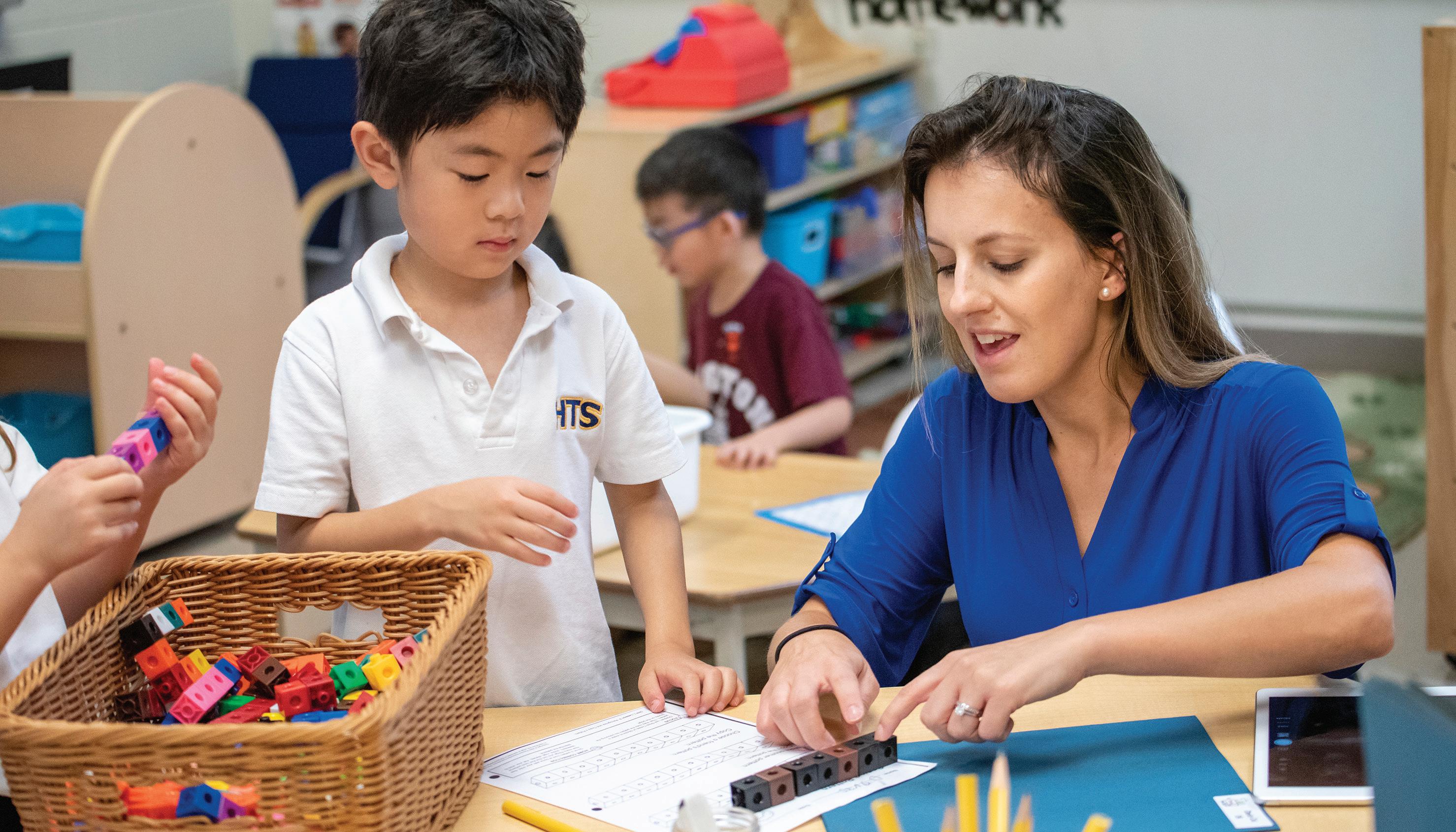 BY KATIE YOUNG, ENGLISH TEACHER
BY KATIE YOUNG, ENGLISH TEACHER
We live in a continuously changing cultural and employment landscape, and we have a new generation of learners who –with limitless information at the tips of their fingers – have no need for a sage at the centre of the classroom pontificating about his or her expertise. How then can we, as educators, create assessments that are rigorous but also meaningful in providing opportunities for students to explore topics that matter to their place within our world? If we place relationships first in our classroom, what should be at the heart of our assessment practices?
The nature of assessment – what it means and how to create meaningful ways to assess student learning – has been under continuous renewal by educators and stakeholders who care deeply about student learning. For several years now, HTS has been evolving our pedagogical practices to meet the often varied and complex needs of today’s modern learner. As we mould, change and polish this moving target, we have encountered many opportunities for growth and reflection.
I recently read a quote that stood out to me and spoke to what is at the heart of this assessment journey: “Assessment is an act of love.” I spent some time digesting and making sense of these words, but they resonated with the seminal work Pedagogy of the Oppressed by Paulo Freire. Though we may be uncomfortable with the term “love” being used about teaching and our relationships in the classroom, when simplified, what this means is that educators can intentionally choose to value and present care and compassion for their students within the pedagogical process. The pedagogy of love humanizes
"WHEN WE PERSONALIZE THE PROCESS OF ASSESSMENT BY THINKING FIRST OF THE STUDENTS - THEIR NEEDS, THEIR INTERESTS AND WHAT MOTIVATES THEM - THE LEARNING IS MORE PROFOUND, MORE VIBRANT AND LIFE-CHANGING."
learning by engaging students in an ongoing process of selfexploration.
For educators, placing relationships first and at the forefront of classroom instruction is imperative, as is relinquishing the role of “purveyor of all knowledge.” My teaching partners and our Grade 11 classes recently embarked on such a journey with their Personal Inquiry Project. In a major culminating evaluation beginning in September and ending in May, the Personal Inquiry Project (affectionately known as PIP) tasked the students with creating a research-based presentation in the style of a TED Talk. Students could choose any topic of interest to them that would offer (as the TED Talk motto goes) “ideas worth spreading.” Though the project was curriculumdriven, the students were at the helm of their own learning. Topics chosen ranged widely from “Why We Should Not Fear Death” to “Living with a Learning Disability” and “Concussion Prevention.” Throughout the year, we “scaffolded” the work and set out curriculum expectations that the students needed to meet, and we also had many conversations about their progress throughout the learning process. In particular, these steps allowed me to learn about my students, their passions and fears, and how they learn best in a way that I had not experienced before. Carving out this time in the classroom had multiple rewards: we not only developed the students’ research, organization, reading and communication skills but also fostered and strengthened relationships built on trust, enabling students to take more significant academic risks.
As we worked through this process, some students were clearly craving a deeper understanding of their topics. Because HTS encourages learning beyond the four walls of the classroom, our next step was to provide opportunities for several students to seek experts both in and outside of our building. Kevin, a student who has a deep interest in issues of social justice and equity, was eager to explore new territory with his topic “Ableism and Accessibility in Education.” He opted to participate in a field study, helping and engaging with students in a local Autism Spectrum Disorder (ASD) class, where he describes his experience as “life-changing.” For Kevin, meeting individuals with ASD put faces to those who experience discrimination, motivating him further to advocate for equity in education. Another student, a relentlessly curious individual named Sarah, took her frustration from a personal experience and turned it into an investigation on the topic of curiosity – why we seem to have lost it and how our education system has a role to play in this. Sarah sought an expert in our own building, Ms Tracy Faucher, Deputy Head, to enrich her understanding, bringing a dynamic perspective to her final product about the untapped potential for teenagers to answer some of our world’s most compelling problems.
In her book about changing the traditional norms of assessment, Hacking Assessment, Starr Sackstein writes that focusing on their passions “will keep students motivated and working toward mastery.” Though this is undoubtedly imperative, our assessments need to go beyond providing choice to students. Our assessments should allow for an expression of who they are as individuals, to empower them not only to make choices but also to seek other sources of knowledge beyond the teacher at the front of the room. We need to show our students that a classroom is a space full of learners, not where one individual dispenses knowledge. As author bell hooks writes, “When teachers teach with love, combining care, commitment, knowledge, responsibility, respect, and trust, we are often able to enter the classroom and go straight to the heart of the matter, which is knowing what to do on any given day to create the best climate for learning.”

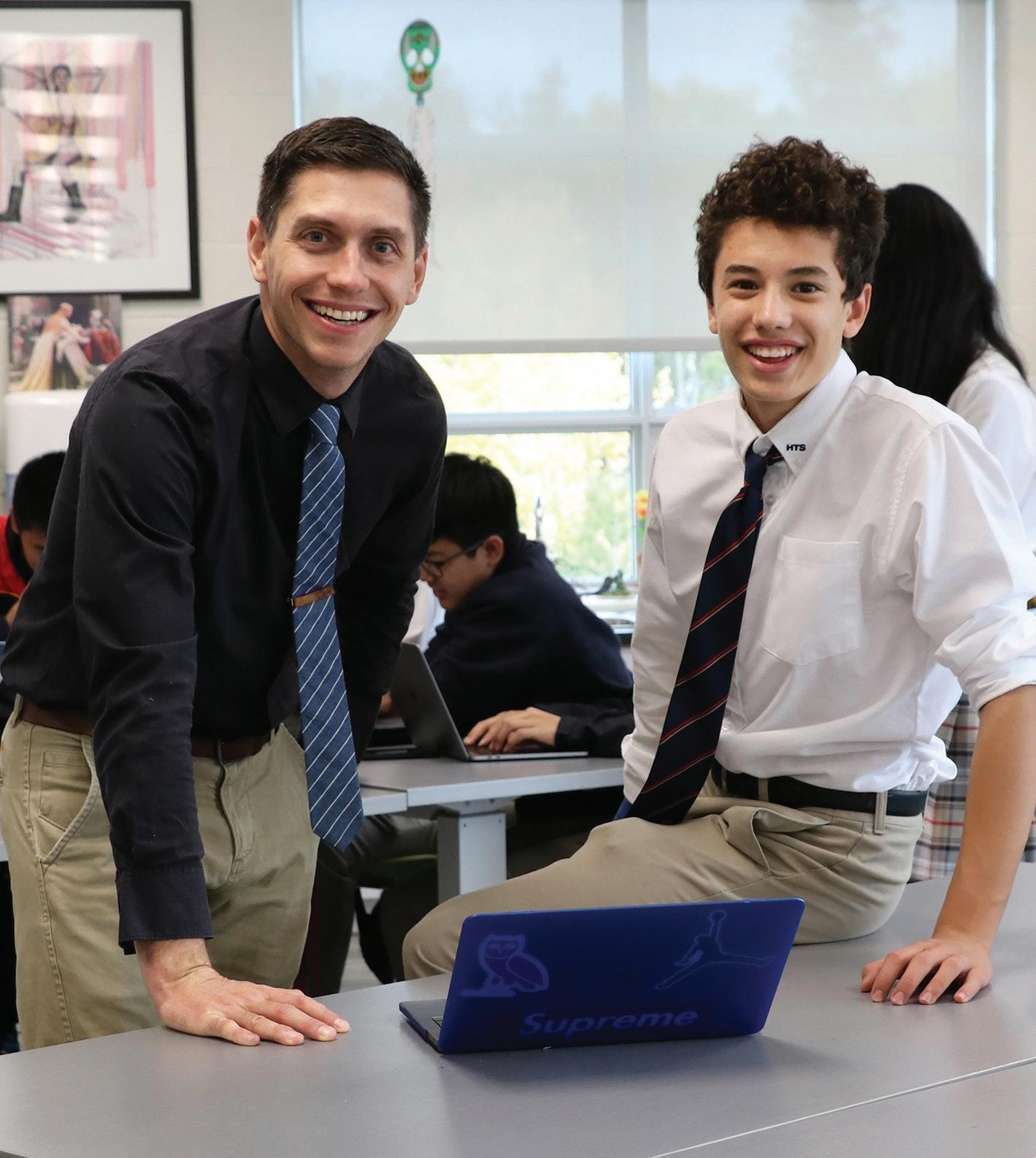
Be Your Own Cartographer: Student Choice & Voice in the classroom
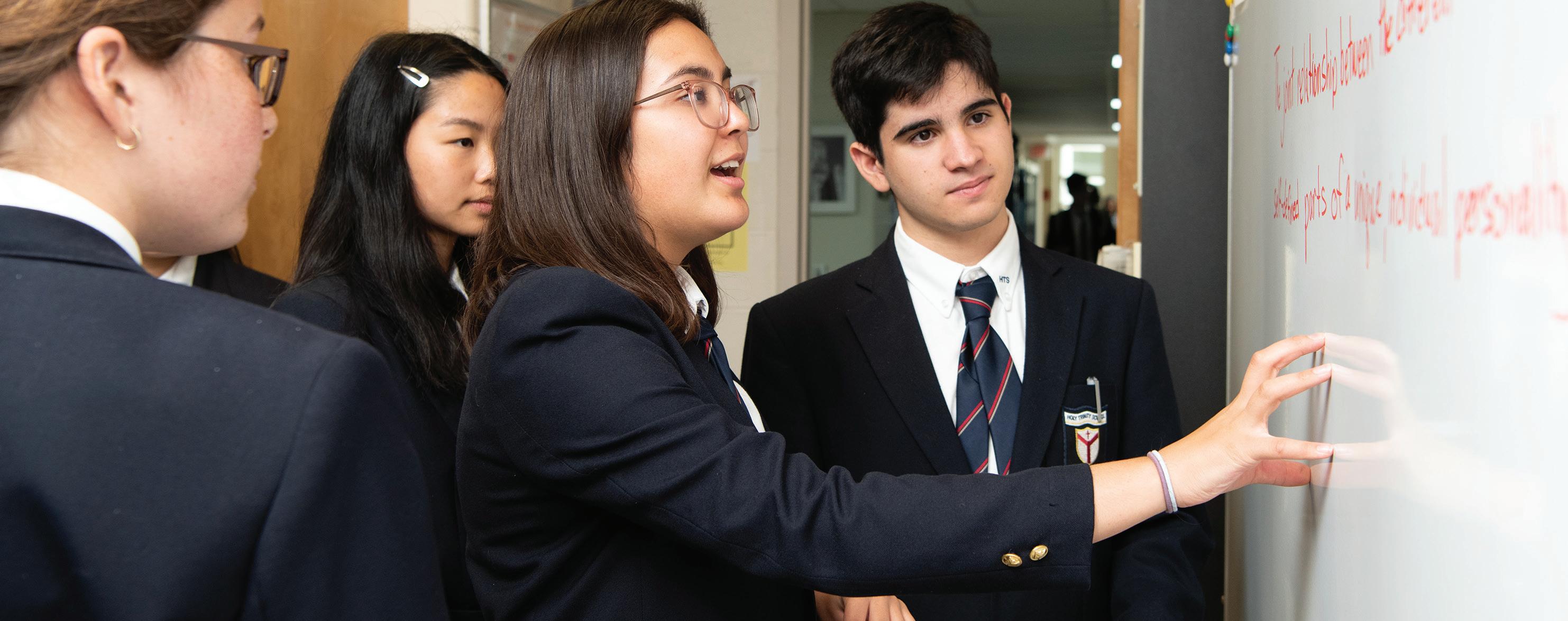 BY DANIELLE GANLEY, ENGLISH TEACHER AND DEPARTMENT HEAD
BY DANIELLE GANLEY, ENGLISH TEACHER AND DEPARTMENT HEAD
I recently came across an article with an interesting provocation in the title: “Are cartographers relevant in the 21st century?” I read this and wondered whether those who draw painstakingly beautiful tangled lines that criss-cross rivers, oceans, invisible borders and mountains had a place in our increasingly digital world. Is there still room for those who create maps of the world, to lead us to new lands or buried pirate treasure? In a world where everything lives online or on our GPS, is there still room for those who help us become un-lost? In the article, the author argues that the role still exists but cartography itself has been transformed. He notes that there are now more interesting ways to tell a story than there were hundreds of years ago. Education feels a lot like that these days too. There are so many new ways to learn that help us find our way through the world, allowing us to draw our own maps to lifelong learning and success.
One of the biggest ways we navigate new territory in our English classrooms at HTS involves encouraging student choice. Gone are the days when we all draw the same map of the same lands using the same three colours. In these words from the Buck Institute for Education’s Project Design Rubric, our classrooms now offer students “opportunities to express voice and choice on important matters [such as] questions asked, texts and resources used, people to work with, products to be created, use of time, [and] organization of tasks.” Choice allows the students to show their learning in ways that are meaningful, differentiated and powerful for them. Heather Wolpert-Gawron, an author and advocate for this “choice and voice,” spends her days in Middle School classrooms, encouraging educators to offer a deeply personalized and choice-driven curriculum. This pedagogical shift reminds us all that the map of learning is being re-envisioned and drawn
“MAPS ENCOURAGE BOLDNESS. THEY'RE LIKE CRYPTIC LOVE LETTERS. THEY MAKE ANYTHING SEEM POSSIBLE.”
MATT JENKINS
by our students themselves. “In terms of creating evidence of knowledge,” Heather writes, “the intense structure of ‘do this, like this’ is not as effective as ‘what way would best work for you?’” This powerful question of how to navigate learning offers the students a way to chart their own paths.
The first way that students are offered choice is through their own selection of reading material, with topics, genres and forms that appeal to them as learners. As noted by scholars Richard Allington and Rachael Gabriel, we know that “students read more, understand more, and are more likely to continue reading when they have the opportunity to choose what they read.” When our students choose their own books, they’re helping to build their reading identities. Who are they as readers? What do they love? What interests them? What books will they ultimately abandon? Even the choice to stop reading a book is powerful – this act can move them closer to finding the right book that will open them to new worlds, ideas and experiences. We also offer students different ways to share their book choices. Whether it’s through book talks, conversations with classmates and teachers, or sharing online videos using Flipgrid (a tool that allows teachers to facilitate video discussions with their students), all work to celebrate and affirm the students’ reading choices. Our book clubs provide another opportunity at HTS for exploring a wide range of topics, genres and authors. Books about social issues, dystopian literature, memoir, historical fiction and Canadian literature all find a place in our classrooms with plenty of choice at each grade level, and with options for how students can respond and interact with their books. At the heart of all of this, we believe that offering choice is critical to creating lifelong readers.
We also know that choice in how our students reveal their learning should be deeply personalized, and our workflow and final products reflect that belief. Last year, our Grade 8 students finished the term with an interdisciplinary project involving
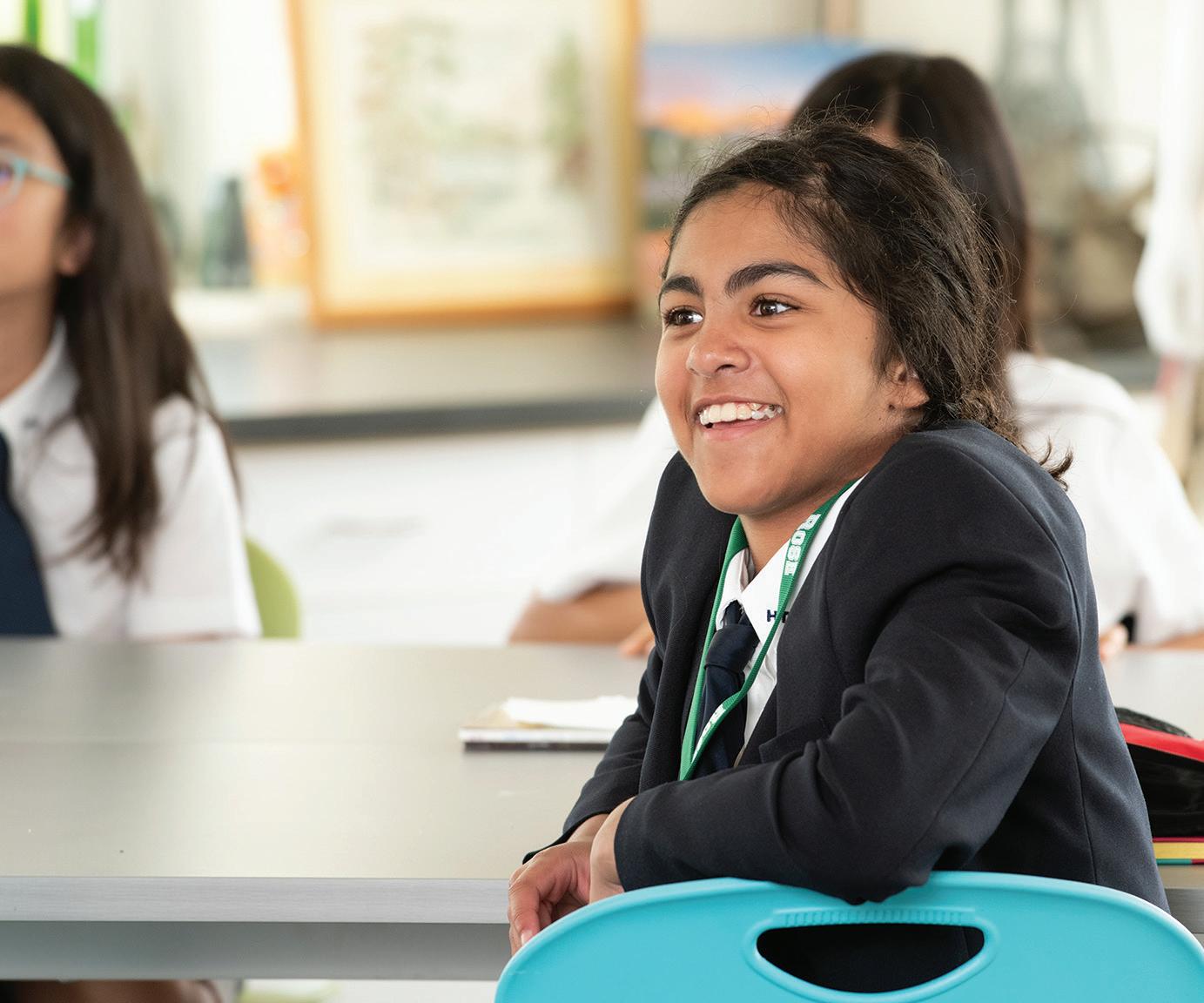

social studies and English. The students looked at historically marginalized groups of people with the purpose of finding a way to offer a voice to the voiceless, in a medium and message of their own choosing. Students were faced with charting their own learning from beginning to end. After deciding which group to explore, students were tasked with building their own inquiry question to drive research, as well as how to present this learning to others. The range of final products included 60-second documentaries, public service announcements, podcasts, websites, newscasts and advertising campaigns. Students also reflected on their own strengths and areas for growth to build on their self-awareness. Some students spoke about their love of design or art, leading them to advertising campaigns for Indigenous peoples or voting rights for women in the early 20th century. Others found that creating an iMovie or podcast made good use of their technology skills or someone’s particularly powerful voice. Every step of this interdisciplinary work involved choice and voice. Similarly, Grade 11 English students were given the opportunity to select a focus of interest to research over the course of several months, culminating in TED Talk-style presentations on their topics of interest or expertise.
At HTS, choice is a guiding principle of learning at every grade level. By offering students a way to draw their own maps to learning, we are helping them to navigate choice as they move closer to adulthood. Our classrooms offer an opportunity for students to become cartographers of their own maps and stories. Those choices involve everything from where to sit in a classroom to how they will be assessed, the creation of their own learning goals, what they read and write, and how they choose to share it all. Famous astronomer and author Carl Sagan once asked, “Where are the cartographers of human purpose?” The answer to that question sits in our classrooms every day. Our students find their own path and purpose with each choice they make.
A Student’s Perspective
BY DEMI PALLAS, GRADE 12 STUDENT AND HEAD PREFECTBehind every test is a story, and sometimes the story looks like this: You’re pacing up and down the halls in your room, reciting, and repeating, and reciting and repeating lists of key information to remember. You spend the hour before the test copying down formulas on a piece of paper, just so you can write them on the back of the test as soon as you get it. You stay up late much of the night before the test, trying to cram everything into your head.
This situation is too real for so many students, especially when preparing for assessments, but this shouldn’t be the way we learn. Short-term retention and regurgitation of knowledge shouldn’t be the way learning is assessed. Assessment should reflect understanding, not memorization. Learners must be able to explore their passions, expand the horizons of what qualifies as a typical assessment and establish a healthy mindset around stress and grades.
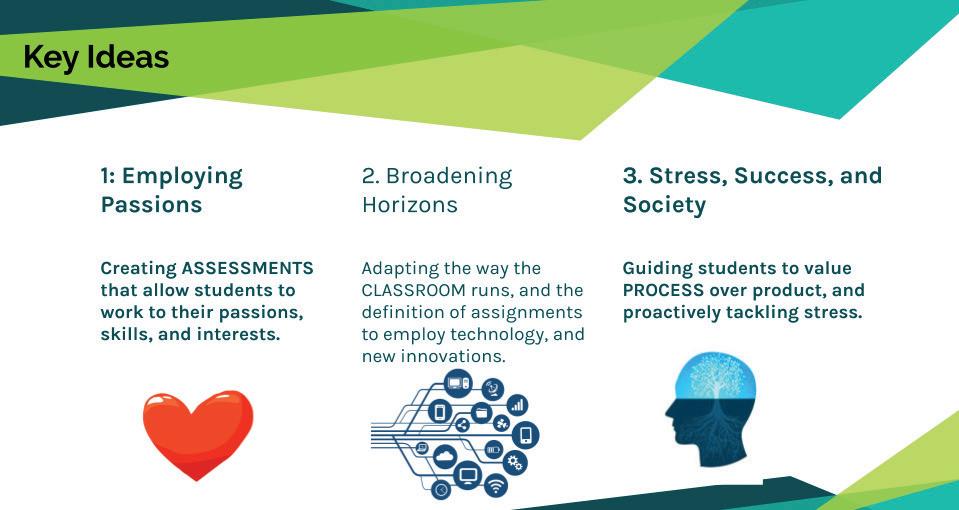
After being approached by her Head of School, Helen PereiraRaso, Head Prefect Demi Pallas crafted a message to deliver to the attendees of the second annual HTS Assessment Summit.

A few weeks later, Demi delivered the same moving speech to 120+ HTS staff members during their Professional Development Day in October.
This is an excerpt of her speech.
When I think about projects that I remember well, I think back to my Grade 7 French class. To learn the different verbs and adjectives, we were handed zero worksheets, and we didn’t have a test. What our teacher had us do instead was invent our own way to learn the material and present it in class. My friends and I were so excited, because we had the perfect idea – we were going to star in a music video… about French verbs! As silly as it sounds, I still remember those irregular verb conjugations from the song and video we made. In this project and many more in that class, I had the opportunity to express my passions, and turn it in for marks! I love performing, so I was thrilled. Every group in the class turned in a different form of learning, and we all learned the material. Students retain what they can truly connect with. And what they are able to connect with is very often things that they are passionate about. In Middle School, I started a band that practised after school, and one of our band’s pieces got used as a test piece for our music class. In my Grade 11 biology class, I made a 30-minute CSI-style movie as an end-of-year project to connect the units of genetics, animal systems and biodiversity. Truly, I feel very lucky to be at this school. I could tell countless stories about projects, assignments and tests that have meant so much to me. An assessment could be just a test, or it could be something more – it has the capacity to shape not only what a student
learns but how a student learns, and it can spark a lifelong passion. The mindsets students have around assessments are shaped by how every test, quiz and project goes.
example, here at Holy Trinity School, the Fashion Forward club and art students could be assessed on what they see as visions for fashion in the future. In learning through these questions, students use the innovation labs to imagine how the world could be.
Evolving the possibilities of what an assessment can look like is vital too. In 30 years, students won’t learn how they learn now, thanks to innovations not yet even conceived. Progress is inevitable and beyond our perceptions. Change to the classroom is happening at an exponential rate. It’s thought that in 10 years, new technology will be arriving faster than our ability to comprehend its effects. It really is challenging to stay up-to-date on all the new innovations, trends and methods students are using.
In our social sciences classes, we use a “questions chart” when exploring a new topic. One colour is used to indicate the “factual” questions, the questions with answers that students today have easy access to. Students are always going to have a calculator on their person, and they are always going to be able to tell you that the capital of Hungary is Budapest. Going into life, they have this information literally in their pocket, just a smartphone search away. So it makes sense that assessment should focus somewhere beyond, on questions of other colours. “What could…? How might…? Why would…?”
These are the kinds of questions we need to be striving to ask and assess. When students develop and reinforce these skills through assessment, that’s what gives them a leg up in life. For
Imagine kids in one class coding a game to test kids in a younger class. Imagine students teaching to the class about molecular chemistry through their passion for cooking. Working with each class and school to craft uniquely specialized assessments is what truly unlocks a group’s potential. Through these kinds of experiences, a classroom can evolve to reflect the group it serves. It’s a risk to change a wellestablished system. It’s a risk to turn away from a lesson plan mapped out years ago. It’s a risk and an effort – but an effort that makes such a difference and is so appreciated. When students feel free to explore the topic through angles that interest them, and through teaching each other, the impact is immeasurable.
Regardless of the results they achieve, students generally feel a certain pressure to attain a high academic average. A study published in 2017 found that there was a 33 per cent spike in two types of perfectionism among college students in Canada, the US and the UK: “self-oriented,” or having high expectations of yourself, and “other-oriented,” where you have rigorous standards for others. While the grade system is beneficial as a way to track progress and understanding, it’s the relationship that teens have with the system that is troubling. Grades are all too often the topic of unhealthy conversations that lead to feelings of self-doubt. When students hear that their friends performed “better” than they did on a test, no matter the progress they might have made, they feel bad. This culture of valuing and comparing marks
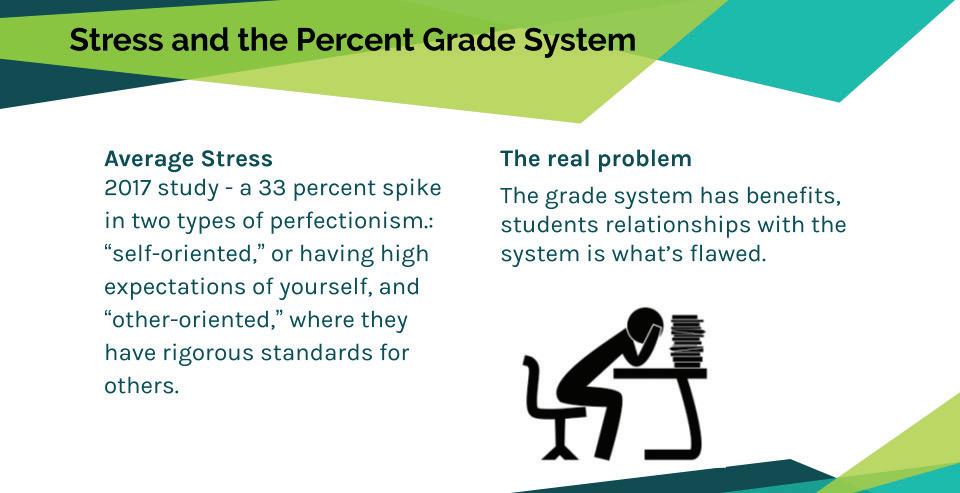
"SUCCESS IS NOT ONLY THE HIGH MARK. SUCCESS IS ALL THE PRACTICE, PROGRESS, LEARNING AND GROWTH THE STUDENT MADE ALONG THE WAY."Slide from Demi's speech initiating the change needed in the mindset of students.
exists between students in person and online, and students often underestimate how it makes their peers feel. Feeling like you need to do better leads to pushing too hard. It’s a pressure I know all too well. An example of this happened last year – in the same week, I had a math test, then a physics test and then a chemistry test, all one day after another. I studied so hard. I opted out of performing at a school concert I would usually attend, I stayed home from my brother’s birthday dinner, and I didn’t go to my friend’s party. I aced every test that week – so in my mind, I had achieved success. This is the first problem with the typical unit assessment as it relates to stress. Within student conversations, the idea is still that success is a high grade. This is further reinforced when students achieving these grades are rewarded by parents, siblings and teachers.
But I couldn’t perform as I did before. I tried to convince myself that I could study as hard as I had that one week, but I was under even more pressure now and getting less sleep. A simple “Are you okay?” from a friend ended up with me in tears. I was pushing myself too hard. For the first time that week, I paused to reflect and thought, “This can’t be how I define success anymore. This cannot be what I expect of myself.”
A high mark on a test is a success. However, success is not only the high mark. Success is all the practice, progress, learning and growth the student made along the way. To understand this model of success, here’s an analogy. Imagine you and your friend climb a mountain, and the next day the newspaper headline congratulates your friend – she got all the way to the top of the mountain! Your friend shows you the article, and your heart sinks. You might think, “Oh… but I climbed the mountain too! I climbed so many steps, but I guess it wasn’t good enough.” The truth is that you had success here too –but with conversations focused on the percentage grading system, maybe you weren’t celebrated for your progress and accomplishments. When students achieve lower grades on assessments, it leads to discouragement. Their enthusiasm for learning goes down when they feel like the work they did is not of value, even when so often it is. It’s vital that teachers value process work too. Comparing grades starts young, and this can lead to unhealthy competition and perfectionism later in life. So another model of success can be formed, where teachers, parents and students alike honour each student for his or her progress. The grades system is not the problem. What is the problem is the conversations and mindsets that it shapes. As the HTS community, we must work towards this new success model.
After my week of tests, I remember feeling this incredible pride, and every time I faced another lineup of assessments, I remembered how I had worked so hard that week. To motivate myself, I thought, “If I could do so well then, I could do it again.” Towards the end of the year though, I found myself in a similar situation with tests lined up day after day.
There’s an integral quote from the story The Little Prince by Antoine de Saint-Exupéry: “It is only with the heart that one can see rightly; what is essential is invisible to the eye.” To me, this applies to everything. As students, it’s not the results we can see or the marks we get that make us who we are. That’s a message we hear frequently, but it’s not one that has really sunk into the subconscious of the students of this generation yet. Each educator has the opportunity to make us believe that. Each educator has the power to change lives. It’s the greatest power there is. It takes work to commit to a better future, and Holy Trinity School is working towards it every day. It’s a future where students can be assessed through their passions, through creative outlets and through ways that honour their journey, not just the destination. In this future, students have a healthier relationship with stress and seeking help, and they have a stronger connection to the material they learn. It takes dedication, failures, setbacks, time and love. Teachers, know that the impact of your hard work is so valued by the students. Truly, we are so grateful to have you in our lives. While the real effects you have on us may be invisible to the eye, they are never invisible to the heart.
"WHILE THE REAL EFFECTS YOU HAVE ON US MAY BE INVISIBLE TO THE EYE, THEY ARE NEVER INVISIBLE TO THE HEART."
"TRULY, I FEEL VERY LUCKY TO BE AT THIS SCHOOL. I COULD TELL COUNTLESS STORIES ABOUT PROJECTS, ASSIGNMENTS AND TESTS THAT HAVE MEANT SO MUCH TO ME. AN ASSESSMENT COULD BE JUST A TEST, OR IT COULD BE SOMETHING MORE - IT HAS THE CAPACITY TO SHAPE NOT ONLY WHAT A STUDENT LEARNS BUT HOW A STUDENT LEARNS, AND IT CAN SPARK A LIFELONG PASSION."
ALUMNI SPOTLIGHT
Hoda Gray, Class of 2007
It isn’t unusual to hear that someone with a long professional career has decided their true calling is to be of service to others. What’s particularly striking about Hoda Gray’s path is how early she felt that pull. She first heard the call when she was a student in the Senior School and has been saying yes to it ever since.
“I don’t think I could live a life without having service be a big aspect of it,” she says.
Hoda ’07 is an Indigenous Relations Advisor for Parks Canada, a federal agency under the leadership of the Minister of Environment and Climate Change. She grew up hearing about Indigenous issues, policy and context, in part through high school classes and in part through her father, who was born in northern Newfoundland.
Wanting to work in an outreach capacity, and to “learn more about how this country is run,” Hoda decided to pursue a joint undergraduate degree in global development studies and political science at Queen’s University. Her development degree included an exchange component, where she could choose to spend a term at a school in France or do a development-related project within Canada. To the bafflement of many of her fellow students, she chose Canada.
“It allowed me to fulfill my desire to help in my own backyard,” she says. “I ended up living and volunteering in Nunavut, in a very small town named Arviat.” There, she learned about how Canada’s policy decisions affected communities, both in current practice and through intergenerational effects. She realized that she wanted to continue learning about Canadian policy.
“I said to myself, maybe that’s a route to being able to help out more.”
Upon her return, she researched Arctic and Indigenous policy programs and chose to continue her studies at Queen’s. Toward the end of her MPA program (Master of Public Administration, which she describes as “the professional degree for policy people”), she did a co-op term with Environment Canada.
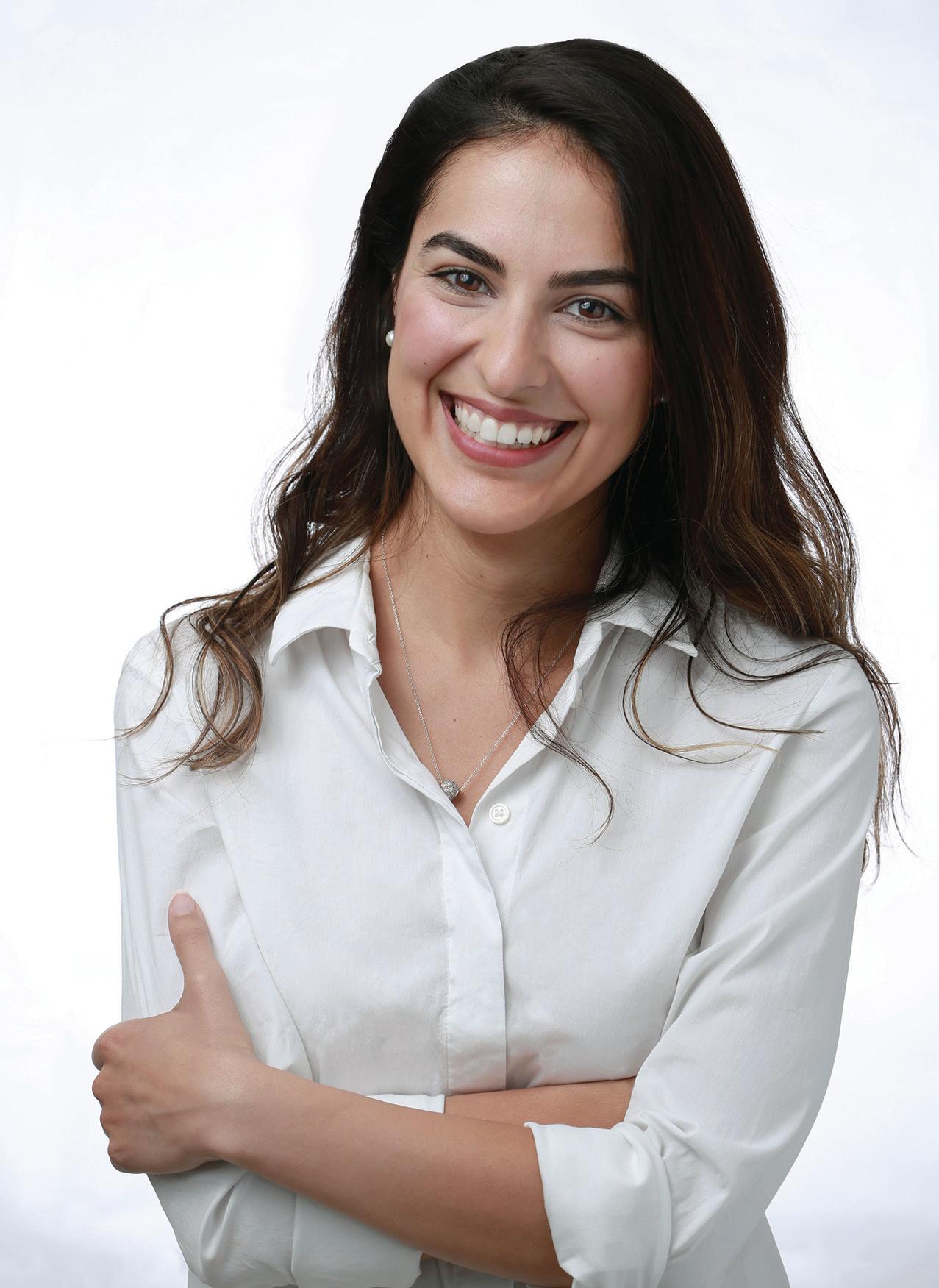
“That was my first gig with the government, in their Arctic policy group.”
Right out of the gate, her clarity of vision and her wish to be of service helped her land where she most hoped to be – and then it continued to propel her into further success.
“I fell in love with the work of Environment Canada, and the way that the team was trying to innovate and work on policy matters that I really cared about. And next thing you know, they hired me on with their team.” As part of this strategic policy group, Hoda provided advice to the Minister and the Deputy Minister on various important policy decisions.
And from there? “I went from Arctic policy to working on national Indigenous environmental policy in Ottawa, providing advice on land claims, negotiations, treaties and governance, as it related to environmental issues. After a few years of that, I ended up getting the call to return home to work for Parks Canada, leading the Indigenous engagement work the Rouge National Urban Park team is doing.”
That’s where Hoda finds herself now: heading a team that works with 10 First Nations that have a connection to the lands within Canada’s first national urban park. She also provides policy advice on issues related to the work she does at the Rouge.
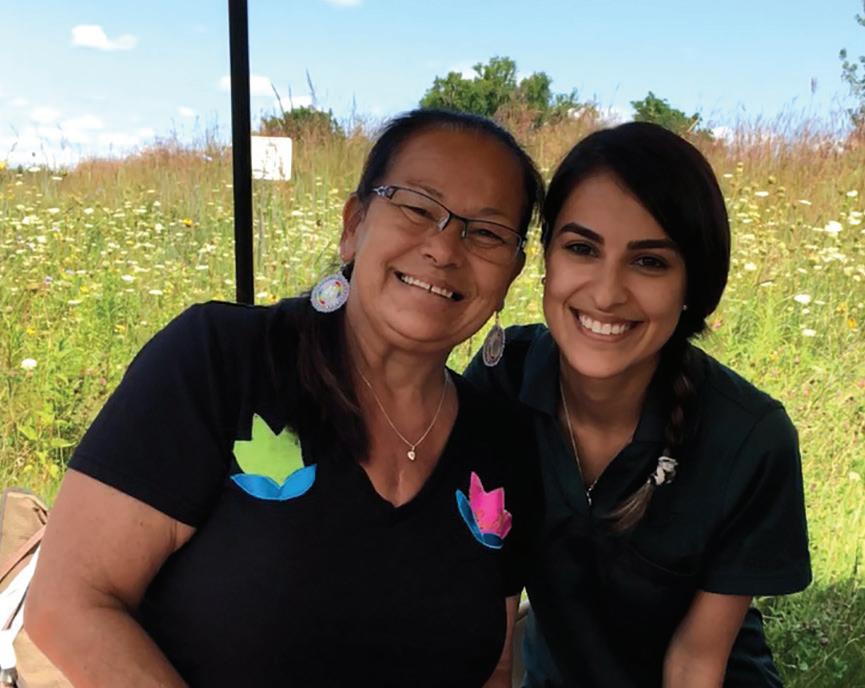
Rouge National Urban Park is a swath of land of almost 80 square kilometres extending from Lake Ontario to the areas of Uxbridge, Markham and Stouffville. The park officially opened in 2015, with further development continuing until 2022.
“It was about giving back to the community, and finding empathy and respect for not only those in your immediate surroundings, but beyond. When you grow up with that around you, it affects the way that you approach the world. We were encouraged to think that way, and motivated to make sure those were a part of our personal pillars and our guiding compass. I don’t doubt that that kind of thinking and ethos influenced why I decided to work in the reconciliation field and make my life about it.”
Having attended six other schools before arriving at HTS, Hoda found a sense of stability here and “a great place to nurture and be nurtured. Once you find that stability and that foundation, it allows you to open your mind and your heart to what exists out there.”
These days, in addition to continuing her work leading the Rouge team, she’s also enjoying her time in the UK to the fullest.
She says, “I have a lot of things that I love doing. I just recently got back into pottery. My partner and I go to a lot of concerts together. I really love travelling. That probably goes back to some of the opportunities that we had at Holy Trinity School – the great trips travelling all over North America and beyond. It plants that seed, and you just want to keep exploring and expanding your horizons. So next thing you know, you’re living in the UK.”
She’s grateful for the foundations laid by HTS during her formative years, and for where they have led her – to the chance to work remotely from abroad, and to the opportunity to be a civil servant.
Hoda says, “When they began the conversations in 2012 for Rouge National Urban Park, they brought in Indigenous partners right from the start. Indigenous considerations and interests are threaded through all the work that we do. My job is to facilitate that, and to make sure we’re building good relationships with Indigenous partners.”
While she is currently working remotely from the United Kingdom, her Senior School dream of being of service “in her own backyard” has come true.
“The Rouge is literally in my backyard,” she says, having grown up in Richmond Hill and Markham. “It’s rewarding and fulfilling to come back and learn all about the significance of the landscape that I lived on for so many years.”
She also feels fortunate to have had such a clear career trajectory in a field she loves. She credits the communitycentred approach of the faculty and the programming at HTS, where she was a student from Grades 7 through 12.
"I'm able to serve my fellow citizens and my community every day through the work that I do, whatever that task is. That gives me a sense of pride. Even when the going gets tough, you know that you’re trying your best to give back to your community. Really, what could be better than that?"
“I'm able to serve my fellow citizens and my community every day through the work that I do, whatever that task is. That gives me a sense of pride. Even when the going gets tough, you know that you’re trying your best to give back to your community. Really, what could be better than that?"
GillianMartin
After 10 years as a school administrator, including stints as VicePrincipal and Head of Senior School, Gillian Martin had been thinking about making a change. For a while, she was unsure which direction would be best – but then in 2017 she came to Holy Trinity School to attend the CIS Student Life Conference and lead her school’s team in a presentation about proactive strategies for student wellness and success. Suddenly, she saw the direction she wanted to take next.

While she had known a little about the school at the time, experiencing it first-hand made a powerfully positive impression. When an opportunity came up to teach at HTS, she leapt at it. Her career path, as she says, “took a right turn.”
Gillian now teaches Grade 7 and 8 English at HTS, and she’s “just absolutely loving it.”
To her great delight, she still finds that her first impression of the school – that it is infused with warmth and joy – was entirely correct.
Where does that joy come from? How does warmth permeate an entire school community? “In my opinion, it absolutely has to start with the person leading the school. So that is Helen Pereira-Raso [Head of School]. Helen emanates warmth, support and love.”
HTS is a “loving, innovative and compassionate environment,” Gillian says, “and it makes all the difference in the world. Schools that tend to be very high-achieving can be very tense, intense places. I’ve tried to lead with humour and compassion, being on the lookout for burnout. At some schools, that’s not really embraced, whereas Helen leaves room for people to lead with humanity. And I think that attracts like-minded people and families to HTS.”
There’s no doubt that Gillian is one of the like-minded. “I’m an optimistic person; I’m a loving person; I’m a creative person. I just love that I found a school that puts those same things at the centre of their thinking. This school embodies who I am and what I value as a person.”
That alignment is even clearer to Gillian now, in her second year of teaching here. “My understanding of what HTS values is more nuanced, and I have a much better understanding of our approach, which is based around personalization.”
She explains that personalization is something of a buzzword these days, but it’s much more than that at HTS – the school prioritizes this “layered, complicated teaching philosophy” through its systems and expectations. “I see it in our professional growth plan as teachers. I hear about it in our faculty meetings. It’s at the forefront of our conversations."
“Being personalized very much expects teachers to know that if you have 23 little faces looking at you, that’s 23 sets of experiences, needs, definitions of success and family situations. It requires us to adjust the lesson or provide more options if that’s where the kids are at right now.”
Gillian notes that at the core of personalization lies another HTS value: dignity. “For me, that means respect, compassion, humanity. Never shame, never guilt. I think that’s a value we need more of in our world. So I find it personally rewarding to work in a place where that’s the centre of what we do.”
One of the ways Gillian supports the school’s cherished values is through her contributions to the Annual Fund.
“When you look through a school’s balance sheet, if you are not investing in those things that you’re talking about, and if you’re not encouraging others by role-modelling that, you really don’t have
a leg to stand on. It’s not about the amount of money you invest. My personal amount is not huge, but I think it’s really important to invest in what you believe in.”
Gillian designates her gift to the Head’s Discretionary Fund. “That speaks to my confidence in Helen’s leadership. Her job is to be thinking of the right now, but also five weeks in the future, five years in the future, 15 years in the future. The Head’s Discretionary Fund gives the leader of the school a green light to spend my money where she feels it needs to go.”
Ideally, Gillian would like to see everyone in the school community donate.
“The thing that I’m most excited about is that we’re putting students at the centre of our planning. We’re building a twostorey Dining Hall so that more of us can be together and share a meal; we can collaborate and have social time. We’re building a learning commons that will be one-stop shopping for kids who need academic support or counselling, books, a quiet place to study. It’s easy for construction plans to become about the adults in the building, but this plan is about the kids in the building and the kids who will come in the next 20 years. That’s really, really exciting for me. I can’t wait to see it.”
Next year, those students may very well include Gillian's own kids, who hope to be attending Grades 7 and 9 at HTS. “It’s wonderful to work at a school that I believe in so much that I want my children to be here.”
Clearly, the turn in Gillian’s career has proven to be deeply right for her, in so many ways – and right for her family, too.
She smiles when asked what the future holds for HTS. “The construction of the school is literally right outside my window. It’s on our minds in this classroom all the time because we’ve got bulldozers, and green fence, and construction workers doing all kinds of things.
Each year, HTS families, alumni and staff come together to further our mission by making financial contributions to the school through the HTS Annual Fund. These gifts are beyond the cost of tuition and provide additional resources that allow HTS to be extraordinary. While tuition funds our mission, annual giving inspires our vision for tomorrow – the school we aspire to be.

Annual Fund donations can be directed to either of the following initiatives:
Head’s Discretionary Fund
Supports special projects that enable us to respond to critical needs and capitalize on new opportunities throughout the year.
Student Financial Aid
Directed to our endowment in support of scholarships, bursaries and awards.
All gifts are 100% tax deductible. Charitable registration #122397417RR0001
"I WOULD LOVE TO BE ABLE TO SAY TO MY STUDENTS, WHETHER IT’S FIVE DOLLARS OR FIVE HUNDRED, WE’RE ALL DONATING WHAT WE CAN BECAUSE WE BELIEVE IN WHO WE ARE AND ALL THE GOOD THINGS WE’RE DOING. WE’RE A SCHOOL THAT EMBRACES GENEROSITY AND INNOVATION AND THAT IS LOOKING TOWARDS THE FUTURE."
"IT’S EASY FOR CONSTRUCTION PLANS TO BECOME ABOUT THE ADULTS IN THE BUILDING, BUT THIS PLAN IS ABOUT THE KIDS IN THE BUILDING AND THE KIDS WHO WILL COME IN THE NEXT 20 YEARS. "
The Pallas Family
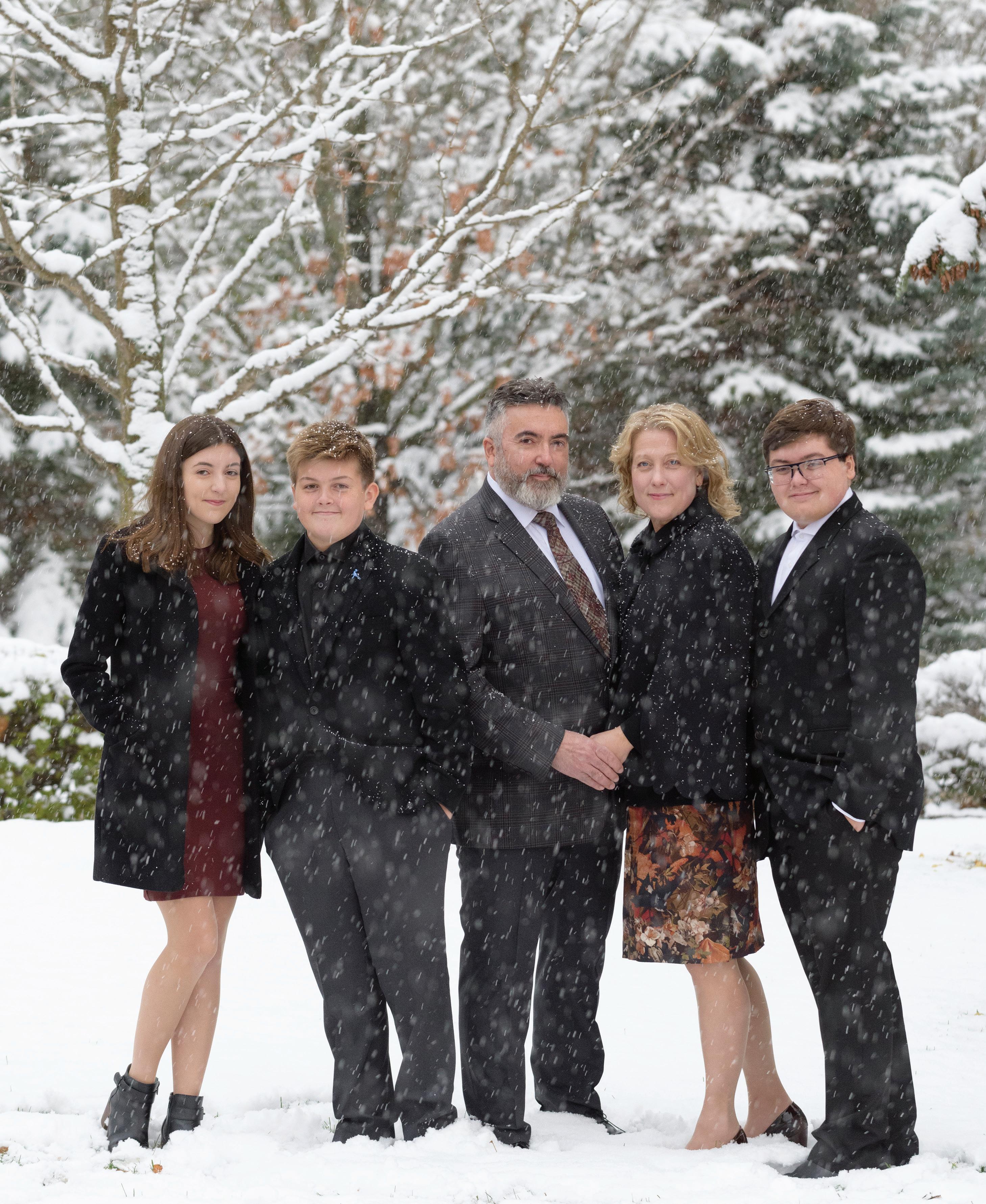
Gregory and Christine Pallas remember when Junior Kindergarten was first offered at HTS. That was the year their children Demi (now age 17) and Constantine (now age 16) began their learning journey in a joint Senior/Junior Kindergarten classroom. Their youngest child, Jacob (now age 13), started Junior Kindergarten at HTS three years later.
At that time, “It was hard to imagine where it would take them,” reminisces Christine. “But we wanted them to find a passion for learning, and HTS set them on that path right away.”
It’s a path the family and HTS have travelled together for a number of years now – long enough that the eldest Pallas child is in her final year at the school. Gregory and Christine firmly believe that choosing HTS has been one of the best decisions they have made for their children.
“We have never had cause to doubt it,” says Gregory. “When we first started researching schools, we were attracted to HTS for the high academic standards, and we also appreciated the Christian ethos. On visiting the campus, we found it was very beautiful. It felt safe. I was impressed by the students and faculty that we met. There was a very strong sense of community, and it felt real.”
Christine describes an HTS education as “a great foundation,” one that has given all of the Pallas children innumerable opportunities to develop and grow. It gives the couple comfort to know their children will be well prepared when they step into life after graduation, which is fast approaching for Demi.
Gregory says, “You know, there’s always a bit of trepidation when your child goes off to university, but I think that these opportunities assuage that trepidation for parents. Sending them off to space camp, or to France, gives you a little immunization. We’re still having a difficult time of it – but maybe less so because of the way that HTS has helped Demi develop into a young woman.”
Seeing all three children mature has been a thrill for their parents. Gregory says, “I really do think HTS played a very big part in it, especially the people at HTS. Our children each have different interests and the teachers really offer an individual approach.”
Christine agrees. “Over the years they’ve challenged our children individually, giving them so many different opportunities in and out of the classroom. Their interests have spanned from academics, to the arts, science, music, athletics, robotics and hackathons. The boys are thrilled with the new learning spaces, like the new innovation labs. It’s been a great experience to see all our children so engaged in their learning.”
He notes that finding the right school wasn’t something they took lightly. “This was of utmost importance to us. We put a great deal of time and effort into researching their school. You want to give them everything that they need to meet their potential.”
Christine adds, “We were looking to find a school that would guide our children and give them the space to nourish their curiosity. I felt like HTS was a place to help them build their confidence.”
It has proven to be that and so much more. “It has exceeded our expectations,” says Gregory. “We are so very happy with HTS. We’ve recommended it to others.”
With Demi graduating this year, the couple has found themselves reflecting on the ways HTS has helped shape their children into the young people they are today. Demi will be completing her HTS years as a well-rounded, confident student with a wide range of interests, from music and theatre to the sciences.
“And she has built great friendships,” says Christine. “All this collectively has made her really balanced. I think that she’s going to be ready for any challenge.”
To honour those who created this climate of individualized learning and exceptional experiences, and to make it possible for others to flourish at the school as the Pallas children have, Gregory and Christine are ardent supporters of the Annual Fund. Gregory describes it as a “shared inheritance” that must include future generations. “That’s why it’s very important to support and continue to develop the school. Anything that you can do to contribute to the community benefits not only your own children but all children.”
Christine, too, sees exciting potential for the future in the ongoing changes at HTS. “It’s really great to see students in the amazing new spaces and different programs. This allows them to be so creative and dream big. I love that.”
So does Gregory. “One of the most rewarding experiences that I’ve had is seeing how intuitive and creative the children are in their thinking and their insight.” He notes that the key to HTS’s success is the community – including the teachers who are outstanding.
It’s clear that Gregory speaks for both himself and Christine when he says, “It’s good to know that you made the right choice when it has to do with shaping your children. It’s a good feeling.”
“I REALLY DO THINK HTS PLAYED A VERY BIG PART IN IT, ESPECIALLY THE PEOPLE AT HTS. OUR CHILDREN EACH HAVE DIFFERENT INTERESTS AND THE TEACHERS REALLY OFFER AN INDIVIDUAL APPROACH.”
The Power of Lasting Relationships
BY MELANIE VAN DE WATER, DEAN OF STUDENTSIt takes a village to raise a child. And at HTS, the development of the whole child involves our entire community – teachers, parents and peers. At graduation this past June, HTS saw 73 Grade 12 graduates walk across the stage. For many, this was the culmination of years of growth at our school. Whether they were “Lifers” who experienced their entire education at HTS or they joined our community a few years prior, these students clearly left a personal, indelible mark on HTS – as evidenced by the heartfelt speeches from their teacher advisors. The relationships between students and the HTS community last long after the graduates have crossed the stage. Most importantly, students move on to future opportunities feeling tied to a place where they have learned the value of compassion and connection. The longevity of these relationships comes from years of supporting each student’s growth.
Striving for balance is paramount in today’s world. Young people are faced with a plethora of choices at any given point in their lives, facing many options in just a single day. With support from their teachers and advisors, HTS students learn how to be agile and confident thinkers. HTS students grow and develop by taking risks in a safe and understanding environment. Teachers and advisors are witnesses to this journey, encouraging and supporting our students as they grow from children into young adults. This is evident from engagement both inside and outside the classroom, supported by teachers who care.
The support from HTS teachers is unwavering in every aspect of a child’s school experience and goes far beyond classroom instruction. Outside the classroom, HTS teachers coach teams, instruct clubs and travel with students on school sports and
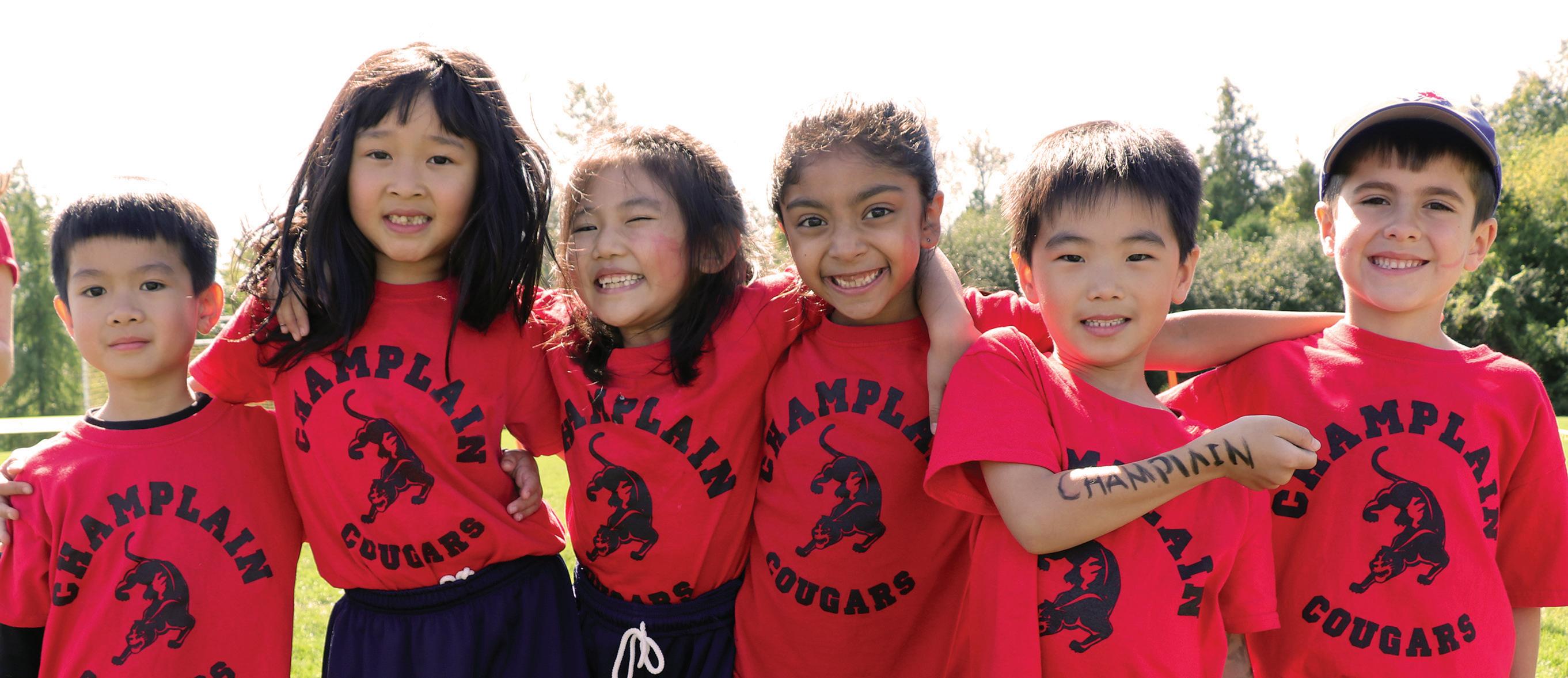
cultural trips. With the majority of HTS teachers serving as homeroom teachers or advisors, they are privileged to walk alongside our students as they grow and learn, passing many milestones along the way. It is through these experiences that relationships develop, giving teachers a chance to be a part of their students’ successes and challenges. HTS teachers are consistently encouraging students to try something a different way and make choices that fit their goals and ethos.
Teachers work alongside students, fostering an attitude that values empathy, compassion, integrity and determination above all else. A student may spend countless hours trying to figure out how to get an Arduino robot to move, exploring different pathways to achieve success. Similarly, a science teacher will teach physics in the classroom but may spend hours after school developing lesson plans to best suit the needs of all students. These experiences, where teachers and students are learning side by side, foster connectedness, collaboration and respect for developing new skills and talents. Teachers promote a healthy sense of self by demonstrating that success is not always achieved on the first try, and persistence and grit go a long way on the road to success.
In a continuously changing world, one can no longer determine success by academic achievement alone. An HTS education contributes to a student’s knowledge of the world far beyond graduation. For our students, knowing their place in their community and the impact they can make on the world are key factors to their future success. These opportunities are seen throughout the school year, such as during our Student Life Days, which are designed to reinforce HTS core values of compassion, respect, empathy, courage and collaboration. Twice per year, students of all ages gather together to focus on these values, experiencing life with each other through activities outside the classroom. Recognizing themselves as global citizens requires students to see beyond their own
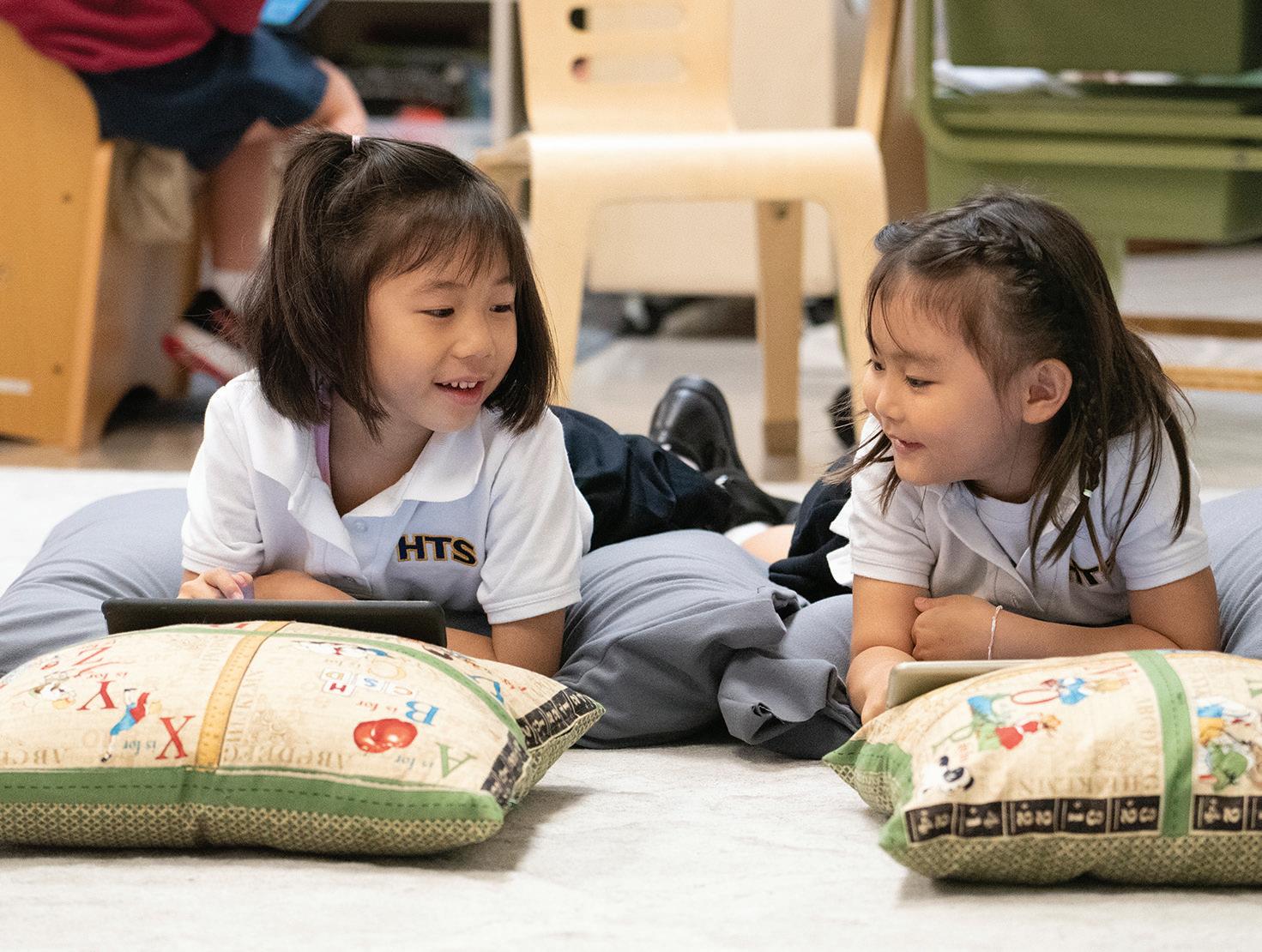
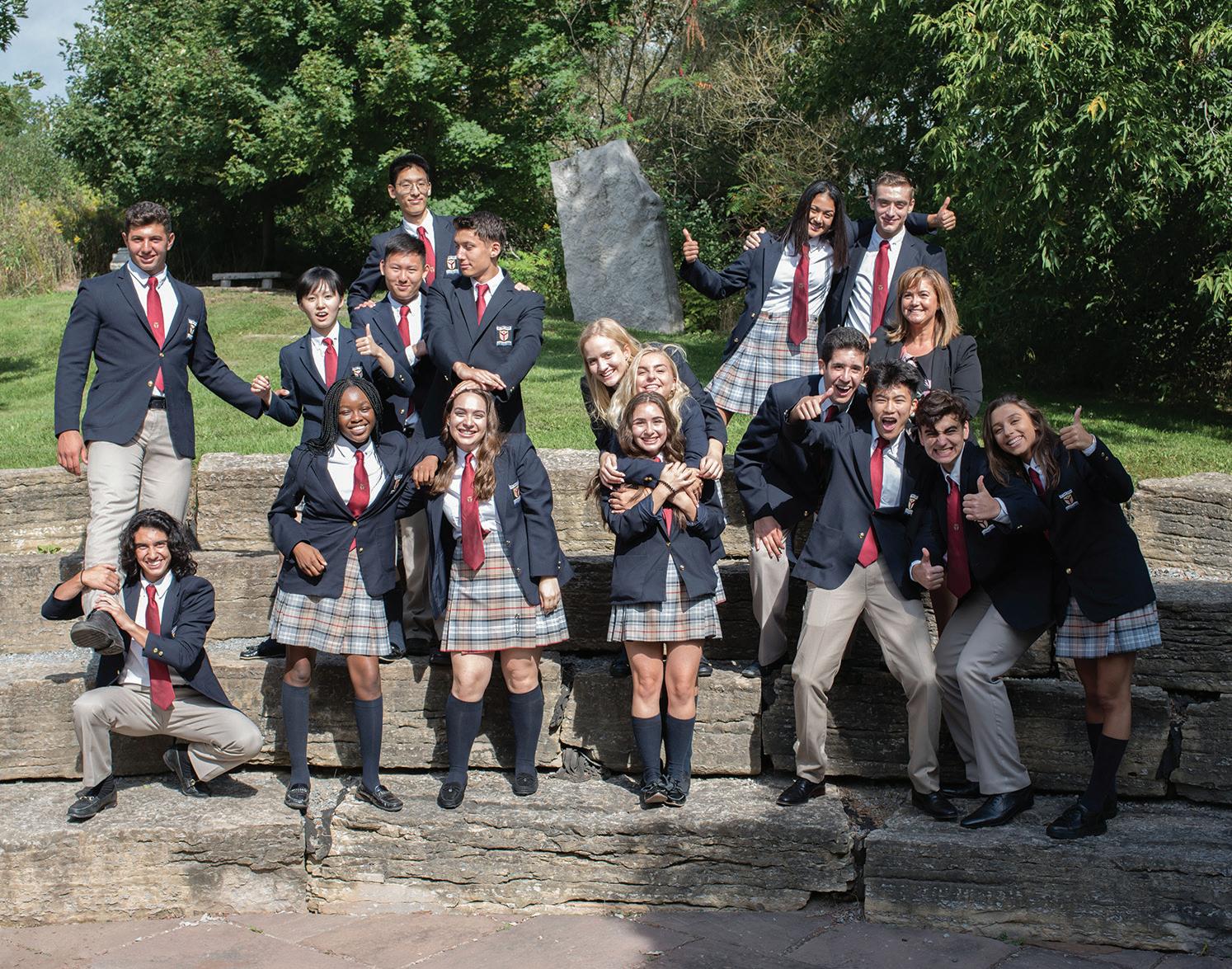
walls. Clubs such as Amnesty International and the Law Society promote social justice. Model United Nations students travel all over the world, discussing and presenting solutions to global affairs. Our ongoing partnership with Colegio Tilatá, a school in Bogotá, Colombia, allows our students to create friendships with students across the globe and welcome our exchange partners from Colombia into their homes as guests. Connections at HTS and beyond are made by these experiences, and they help HTS students believe in their values and strengths and feel confident about the contributions they can make to the world.
The feeling of belonging comes from beginning each day as a community. Twice per week, all students and teachers in Kindergarten through Grade 12 gather for Chapel. Led by our school Chaplain, Father Stephen Crowther, students experience stories and songs and celebrate achievements all together. It is just as likely for a graduating student to celebrate the success of a Grade 2 eco-challenge initiative as it is for our Lower School students to applaud a Senior student’s success on the field as a member of the soccer or field hockey team. These celebrations at HTS are heartfelt. You can feel the energy during our fullschool assemblies for Spirit Days, House competitions and annual events such as the traditional Christmas assembly. It is during these times when HTS gathers as a community that memories are made and a sense of place is found.
It is no coincidence that an HTS journey ends at graduation in the same place where students spend much of their time during the school year. When our graduates cross the stage, they leave with a network of supporters who continue to cheer them on from the sidelines. The HTS experience allows students to develop relationships with teachers and peers that encourage them to become their best selves, and the effect of these relationships remains with graduates for life.
Navigating Success As a High-Performance Athlete
BY ELIZABETH WILKINSON, MARKETING AND COMMUNICATIONS COORDINATORAt HTS, we believe that experiences beyond the classroom are just as integral to students’ learning and growth as experiences in the classroom. For Anthony Argyropoulos, Jacinta Arnold and Mariola Garcia, HTS graduates from the Class of 2019, being enrolled in competitive athletic programs was (and continues to be) a key component of their lives. These student-athletes achieved prestigious rankings in their sports and had many
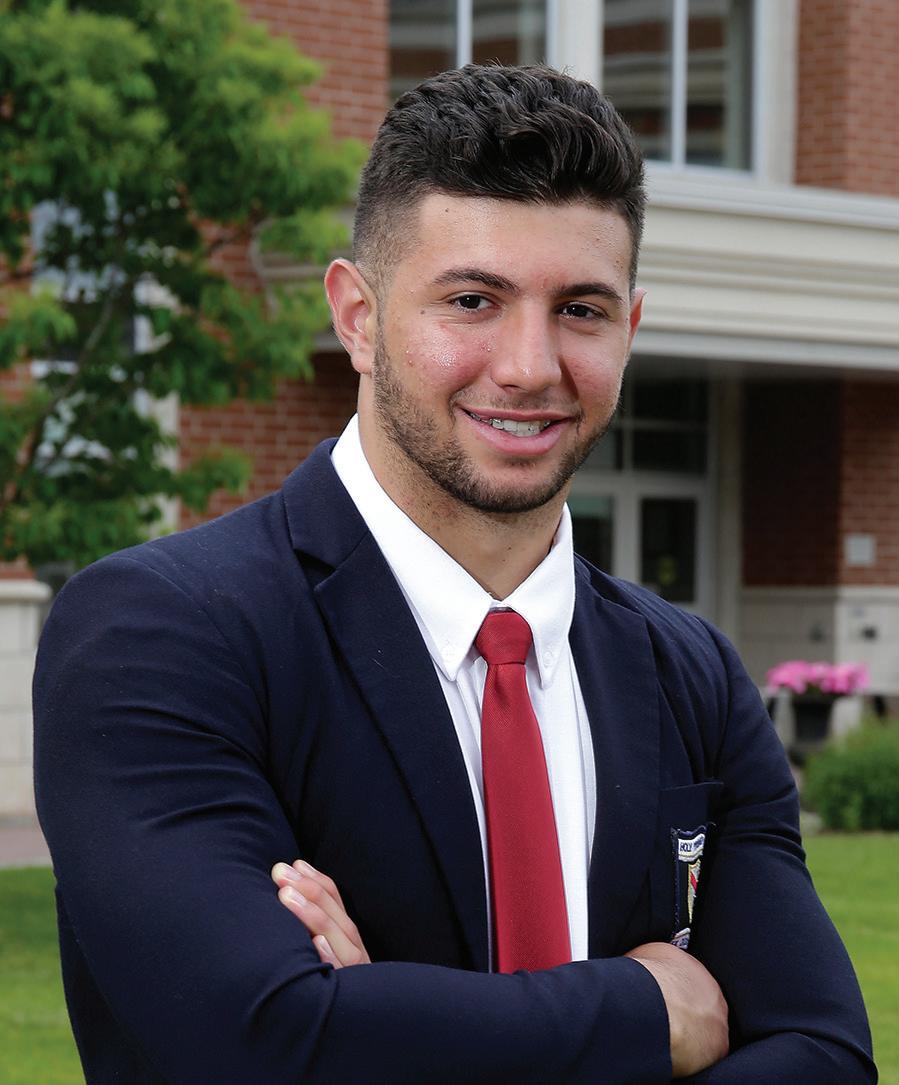
tremendous accomplishments along the way. What stands out, however, is their dedication to balancing academics, student life and athletics in pursuit of reaching their goals. A personalized learning environment provided them with the support to find this balance and help them succeed in their endeavours.
ANTHONY ARGYROPOULOS
Anthony Argyropoulos ’19 is a track and field athlete, competing in shot put, discus and weight throw at both the national and international level. Anthony is currently ranked first in discus and second in shot put in Canada, and 23rd in discus and 43rd in shot put in the world. Anthony found many successes throughout his time at HTS, but he especially excelled in his graduating year through participation in the DECA International Career Development Conference (ICDC), OFSAA Metro Regionals and the Ontario Federation of School Athletic Associations (OFSAA) Track and Field Championships. This past summer, Anthony competed at the 2019 Pan American U20 Championships.
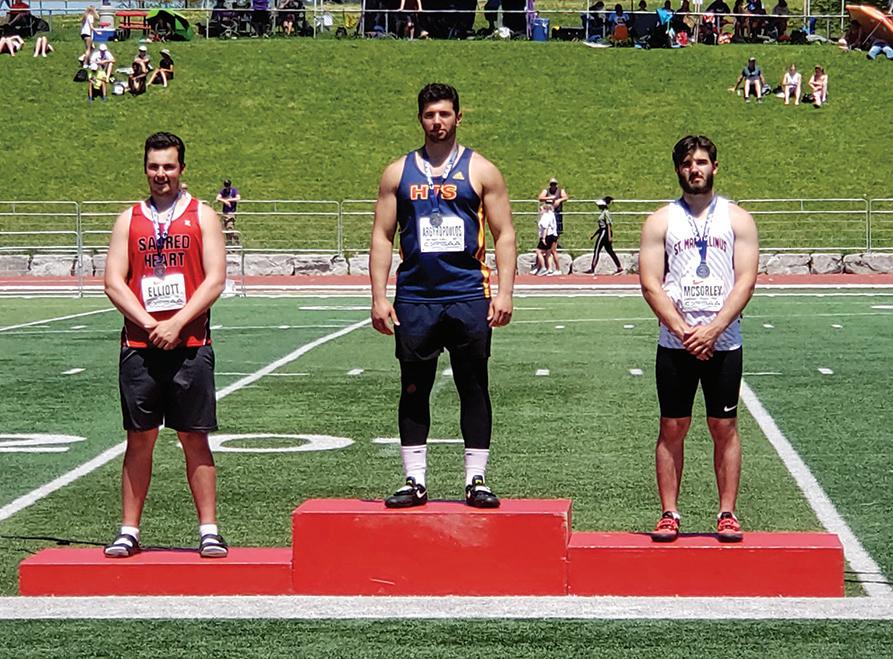
Having the opportunity to participate in both athletics and school clubs while balancing academics has been part of Anthony’s life since he joined HTS in Grade 1. “For me, afterschool practices and games offered the perfect break between the school day and studying in the evening,” says Anthony. “It’s a strong belief of mine that an active body translates to a high-functioning brain. The athletic program challenged me to manage my time and work more efficiently.” He says that HTS was very accommodating with his schedule. “I could always count on my teachers to help me plan a schedule that was realistic for me,” he adds. “My teachers always offered to provide extra help sessions outside of class time to ensure I was caught up.”
Anthony encountered obstacles along his journey, including suffering a hamstring injury at the beginning of his outdoor track and field season and having to prepare for the OFSAA Championships during exam season. Learning how to manage his time was an important skill he developed during this time. “I’ve learned that my success comes from my drive to be better,” he says. “You cannot mask underperforming in a track and field meet. A number is a number, and I love the process of improving and bettering myself. I was able to improve drastically in less than a year and a half because of my persistence and faith in the process.”
"I LOVE THE PROCESS OF IMPROVING AND BETTERING MYSELF."
JACINTA ARNOLD
Previously a competitive gymnast and a now triple jump athlete, Jacinta Arnold ’19 has been breaking personal bests since she started her sport in Grade 10. Training every weekday in her Senior School years both at school and outside of school, Jacinta currently has a personal best distance of 11.62 metres.
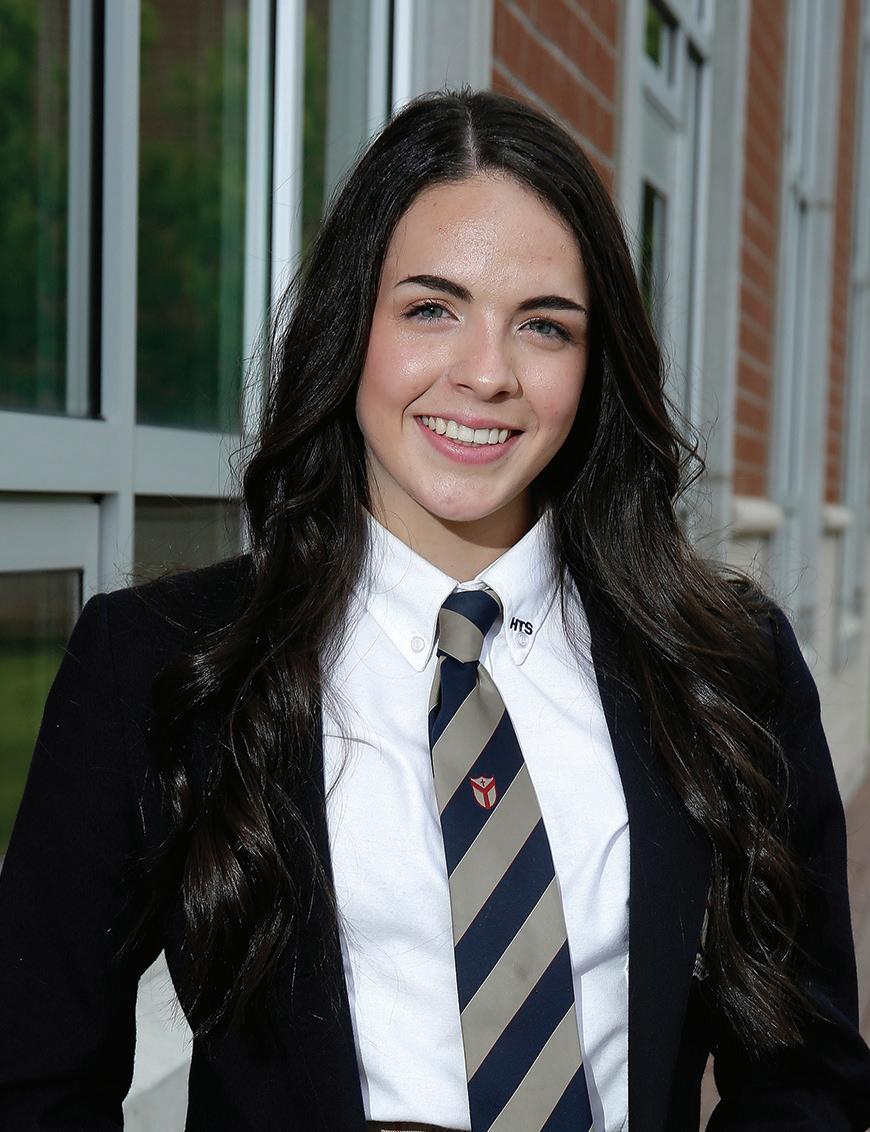

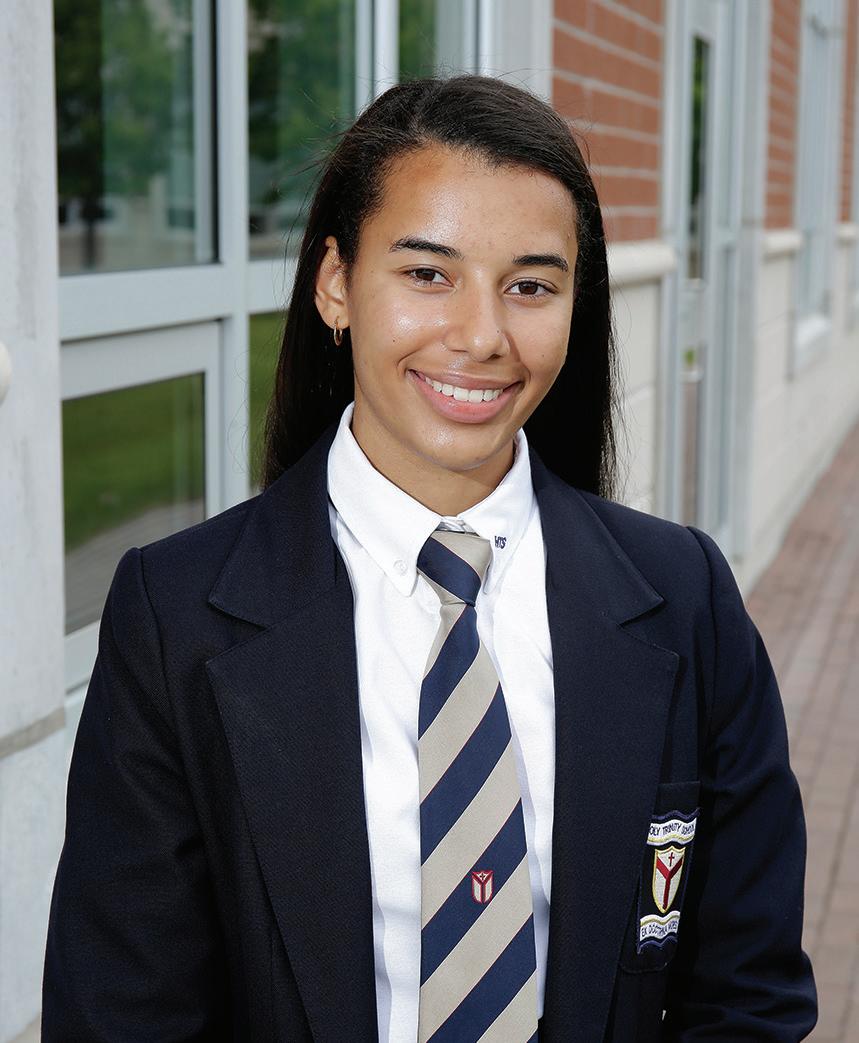
Growing up an athlete, Jacinta always found the balance of academics and athletics to be part of her life. “It’s important to learn how to balance your time instead of giving up on one or the other,” she says. “Even though it can be frustrating, it’s always better to focus on your goal and try to work toward it.” Jacinta was able to find support in her academic and athletics journey through the school’s High-Performance Athlete Program, which allowed her to focus on her athletic goals while managing her academic workload.
Open to students in Grades 9 to 11, our High-Performance Athlete Program (HPAP) provides students involved in an elite-level sport the support and flexibility that they require. “The program offers students the opportunity to grow as a student as well as an athlete. They are able to learn valuable skills such as time management, communication and dedication,” says Ms Nickie Thompson, HPAP Advisor and Head of Health and Physical Education. “Students receive support from their teachers and organize their academics prior to leaving for competitions.” In place of a physical education course, student-athletes training 15 or more hours per week complete a learning portfolio throughout the year with support from their external coach, where they log their training, challenges and successes. “I found this program to be really helpful in managing my academics and athletics,” Jacinta says. “The flexibility of the program allowed me to complete homework and any class assignments that I would be missing due to competitions.”
Jacinta faced an injury during a critical time in her training. Tendonitis forced her to change the pace of her training, and she focused on conditioning exercises and building her strength for when she would be able to start jumping again. Because of this injury, she was not able to meet the jumping distance of post-secondary schools’ recruitment standards. The support from her track and field coaches and Student Success Counsellor allowed her to focus on ways to heal and come back stronger than ever. After recovering, Jacinta was able to jump past the University of Pennsylvania’s standards and was offered to participate in a trial period on their track and field team.
MARIOLA GARCIA
A Pan American Champion, ranked second nationally and fifth in the world, Mariola Garcia ’19 is a force to be reckoned with in trampoline gymnastics. Growing up in Mexico, Mariola had dreamed of moving to Canada to train with David Ross, Canada’s Trampoline Gymnastics Olympic Team Coach. Happy to support her in her endeavours, Mariola’s family decided that HTS would be the perfect fit for her. Smaller class sizes and a personalized approach would provide Mariola with extra support during her training and competition season. Mariola moved to Canada in Grade 10 to attend HTS and take her training to the next level. Since then, she has made her name known as a junior trampoline gymnast.
Mariola says her parents sacrificed a lot for her to be training in Canada, and they are proud of everything she has accomplished – one of those accomplishments being
"EVEN THOUGH IT CAN BE FRUSTRATING, IT’S ALWAYS BETTER TO FOCUS ON YOUR GOAL AND TRY TO WORK TOWARD IT."
completing high school while balancing her heavy training schedule. “My teachers were accommodating of my training and competition schedules as well as my wellness,” she says. Prior to competitions, Mariola met with her teachers to discuss what she would miss during her time away from school. Receiving homework and assignments ahead of time allowed her to complete them during her downtime at competitions, or to adjust her evaluation schedule if needed. Mariola notes her advisor, Ms Kristy McGowan, and her Student Success Counsellor, Dr. Steve Poplar, made her balancing act between athletics and academics manageable with their constant support. “They always looked out for me and my best interest, which was very helpful to both me and my family.”
Mariola has loved the opportunity to compete on the world stage. “It’s nerve-racking and can stop my heart sometimes, but it is such a great environment. Being surrounded by representatives from countries around the world cheering you on creates a great environment.”
She has also been faced with her own set of obstacles – studying in a second language was certainly one of them at the beginning of her journey. Through constant support from her teachers and peers, Mariola saw this challenge become easier over her time at HTS. She says her friends played a tremendous role in her journey. Having her friends to take notes for her, study with or even simply being there to help her through a hard day made everything much easier.
From pursuing a dream to become a doctor, to competing in the 2024 Summer Olympics, Anthony, Jacinta and Mariola each have big aspirations when it comes to what’s next for them.
Anthony is currently studying economics at his dream school, the University of Pennsylvania. Anthony wants to have a significant impact on his track and field team. He also has his mind set on earning a medal at the International Association of Athletics Federations World U20 Championships in Kenya next summer.
Jacinta is currently studying biological basis of behaviour at the University of Pennsylvania. She is training to make her school’s track and field team and hopefully, one day, compete at the world level. After completing her undergraduate degree, she hopes to attend medical school to later become a doctor.
Mariola has recently begun studying kinesiology at York University, beginning her path toward law school as she hopes to one day become a sports lawyer. During her undergraduate degree, she will continue training and competing to make herself known as a senior trampoline gymnast. Her eyes are set on competing in the 2024 Summer Olympics in Paris, France.
All of these student-athletes have come to know themselves better throughout their journey at HTS – each defining success in their own way. Anthony, Jacinta and Mariola all agree that being a student-athlete has taught them unparalleled life lessons. “The skills that I’ve learned are transferable to all areas of life, and they have served me well in my academic career,” Anthony says. When balancing passions and academics, students are challenged to learn the competencies of time management, organization and responsibility. A personalized learning approach allows students to be supported in ways that are most suitable to them while having the opportunity to follow their passions. Anthony, Jacinta and Mariola have been empowered to find success in their athletic and academic journeys from their advisors, counsellors and coaches, which has made them unstoppable in pursuit of their goals.
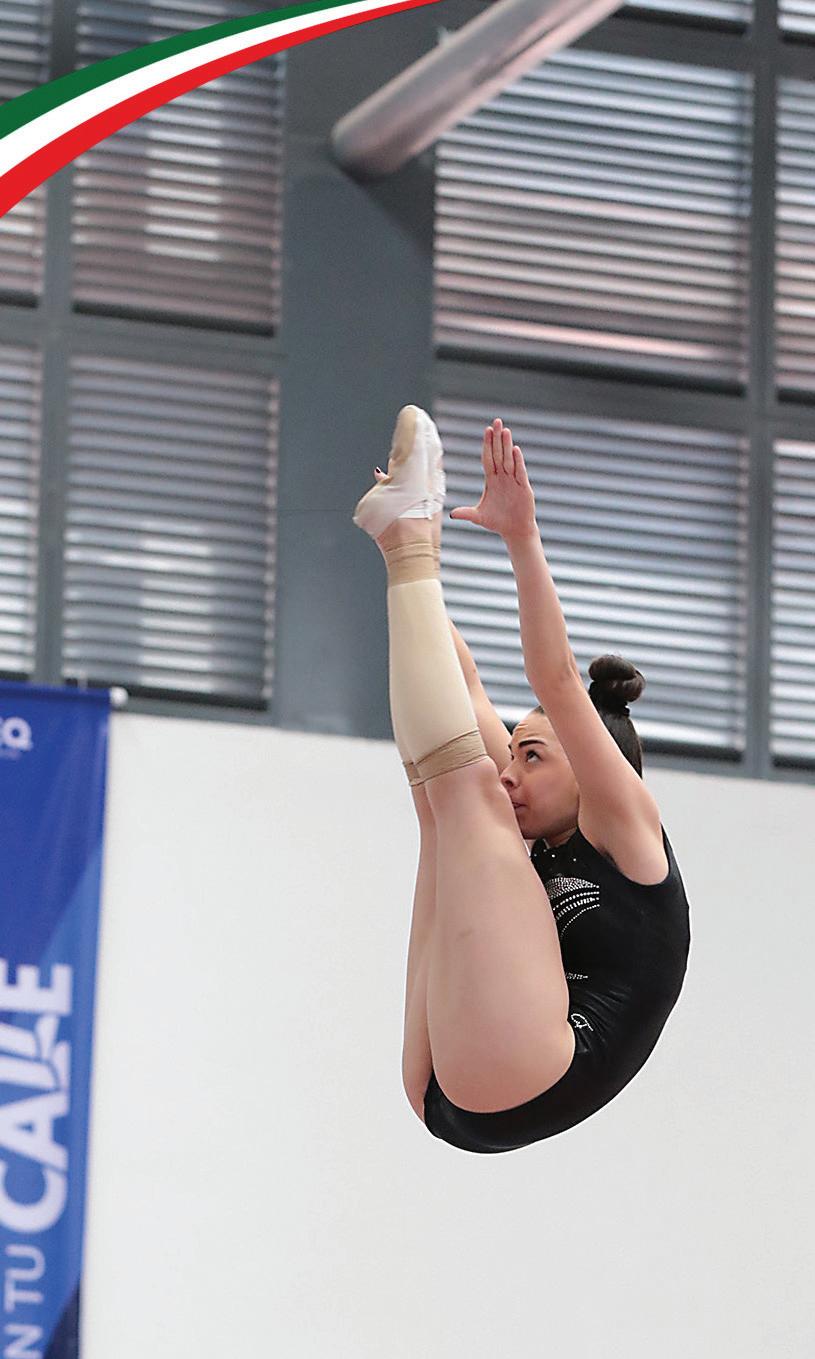
"THEY ALWAYS LOOKED OUT FOR ME AND MY BEST INTEREST, WHICH WAS VERY HELPFUL TO BOTH ME AND MY FAMILY.”Campeonato Nacional de Gimnasia de Trampolin 2019
"THE SKILLS THAT I’VE LEARNED ARE TRANSFERABLE TO ALL AREAS OF LIFE.”
Many Paths to Growth
BY STEPHANIE STEPHENS, EXECUTIVE DIRECTOR OF LEARNING INNOVATIONAND TECHNOLOGY
At HTS, our vision for learning recognizes that what constitutes success is different for every individual. In support of this vision, we have implemented a wide variety of programming and opportunities that embrace individual interests, strengths and ways of learning.
These active, meaningful initiatives are designed around our goal of personalizing experiences. Even within a specific area of focus – such as the realm of design and technology covered here – students find themselves exposed to a breadth of opportunities, challenges and possibilities. Bringing their own unique strengths to collaborative, hands-on and real-life situations, they learn to use tools, hone skills and prepare for life beyond HTS.
Here are some of the programs through which we are preparing our students to make a difference in the world. Within this range of innovative opportunities, there truly is something exciting, inspiring and eye-opening for every HTS student.
You can hear it in the voices of our students themselves. They are not just learning about design and technology. At all ages and stages, they are expanding their horizons, deepening their learning and becoming confident, agile thinkers.
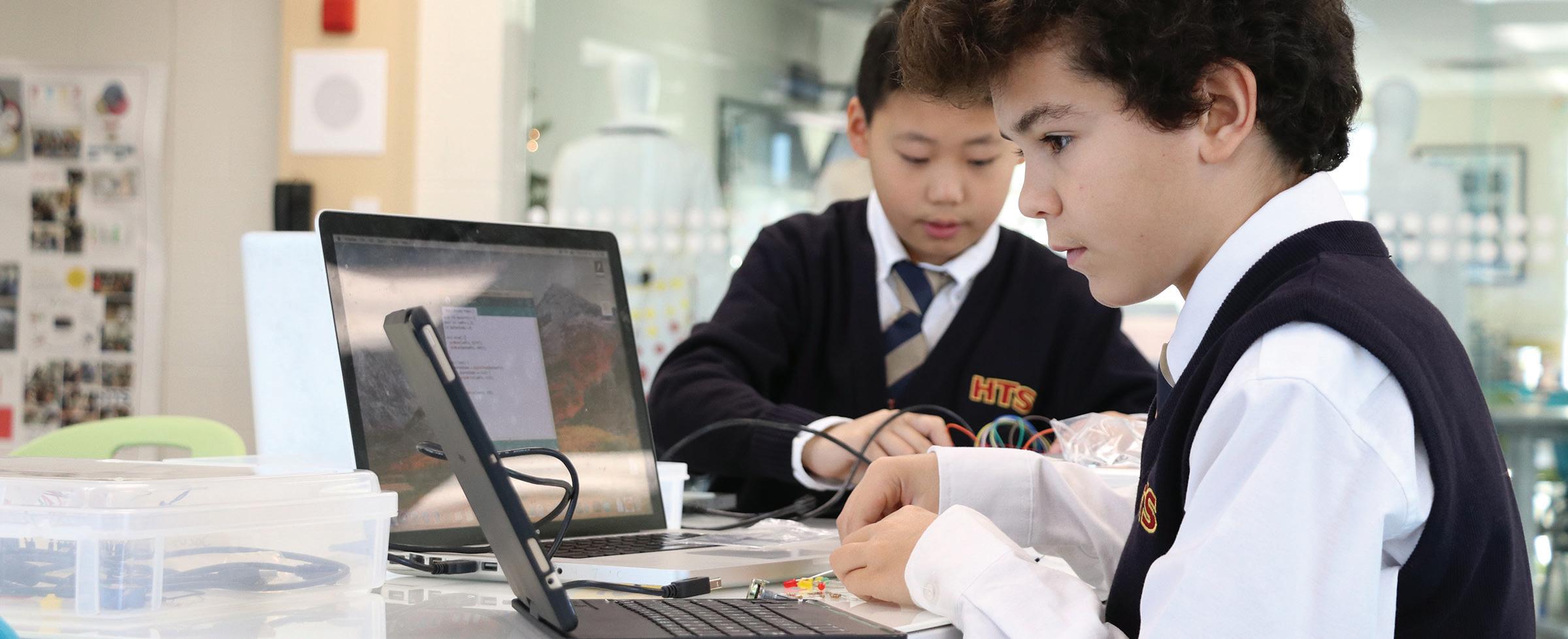
EXPLORING DESIGN TECHNOLOGIES
A different mindset
The Exploring Design Technologies (TDJ1O) course focuses on learning to use design technologies to create prototypes and resources in order to solve real-life problems. Beginning in Grade 7, this course is offered in modules over a threeyear period. The program’s final project coincides with work students do in major Grade 9 projects such as Build-A-Gadget,
the Trade Show project or our Haute Design fashion show.
With unique scheduling and materials provided through an online framework, the course’s design is far from traditional. A variety of experts facilitate the course and coach the students to explore pathways that work best for them. “It allows you to
explore a different side of you, strengths you never knew you had. I was surprised that something so high-tech would be so enjoyable to learn and so useful,” says Angela Sun, a Grade 8 student who started the course last year.
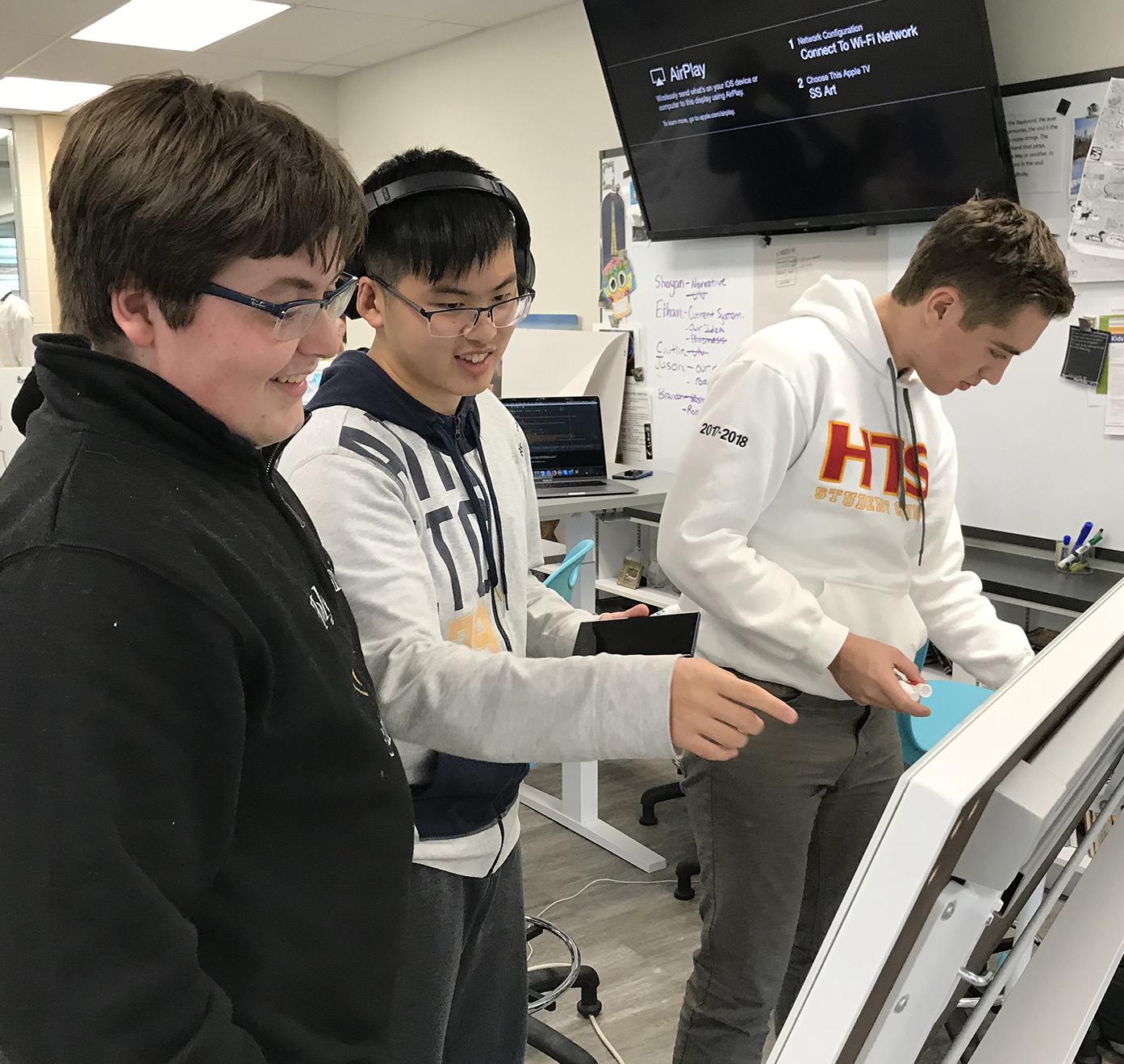
THE MODULES OFFERED INCLUDE:
• CAD Design & 3D Printing
• Basic Programming and Coding Constructs
• Programming & Design with Microcontrollers
• Vector Graphics
• Photo Editing & Digital Music
• Video Editing & Multimedia Creation
• Basic Engineering Circuitry & Soldering
• Robotics
• Capturing Media – Still Photography
• Laser Cutting
• Music Media
• Book Design & Creation
• Sewing Machine Basics
HACKATHONS
Authentic and deep learning
Hackathon is a tool to drive sustained innovation and crowdsource solutions to address the world's most pressing problems or social issues. A hackathon is typically in a time-bounded environment where participants collaborate to build proofs of concepts and create minimum viable products for a specific pre-defined problem.
There was a time when this might sound like something better left to adults. But this is no longer the case!
“Hackathons have given me a really great experience about the ideation and prototyping process that goes into realworld applications,” says Grade 11 student Justin Assing. Our students are excited about expanding their experiences through the hackathon’s interdisciplinary framework – they have consistently shown themselves to be open to learning from experts and each other to accomplish meaningful outcomes, and they’re eager to showcase their capacity to be the change this world needs.
Participation in hackathons has allowed our students to connect with experts in mental health, environmentalism and blockchain, as well as professional presenters. Next year, HTS students will be partnering with local schools and reaching out to experts in our extended community (including parents and alumni) as well as further afield. Experts such as the Education Research team at Apple and the Blockchain Learning Group are keen to partner with us and help our students make a difference.
“THE DESIGN OF THE COURSE ALLOWS YOU TO HAVE A DIFFERENT MINDSET ABOUT HOW YOU LEARN AND USE THE TECHNOLOGY. YOU HAVE THE CHOICE TO COLLABORATE AND YOU GET LOTS OF SUPPORT FROM TEACHERS.”
– DANIELLE TANG, GRADE 8
“THE OPPORTUNITY OF PUSHING YOUR LEARNING AS FAR AS POSSIBLE AND THEN ASKING EXTERNAL EXPERTS TO PROVOKE YOUR IDEA EVEN FURTHER IS AUTHENTIC AND DEEP LEARNING.”
– TRACY ZHANG, GRADE 11
THE HAUTE DESIGN FASHION SHOW
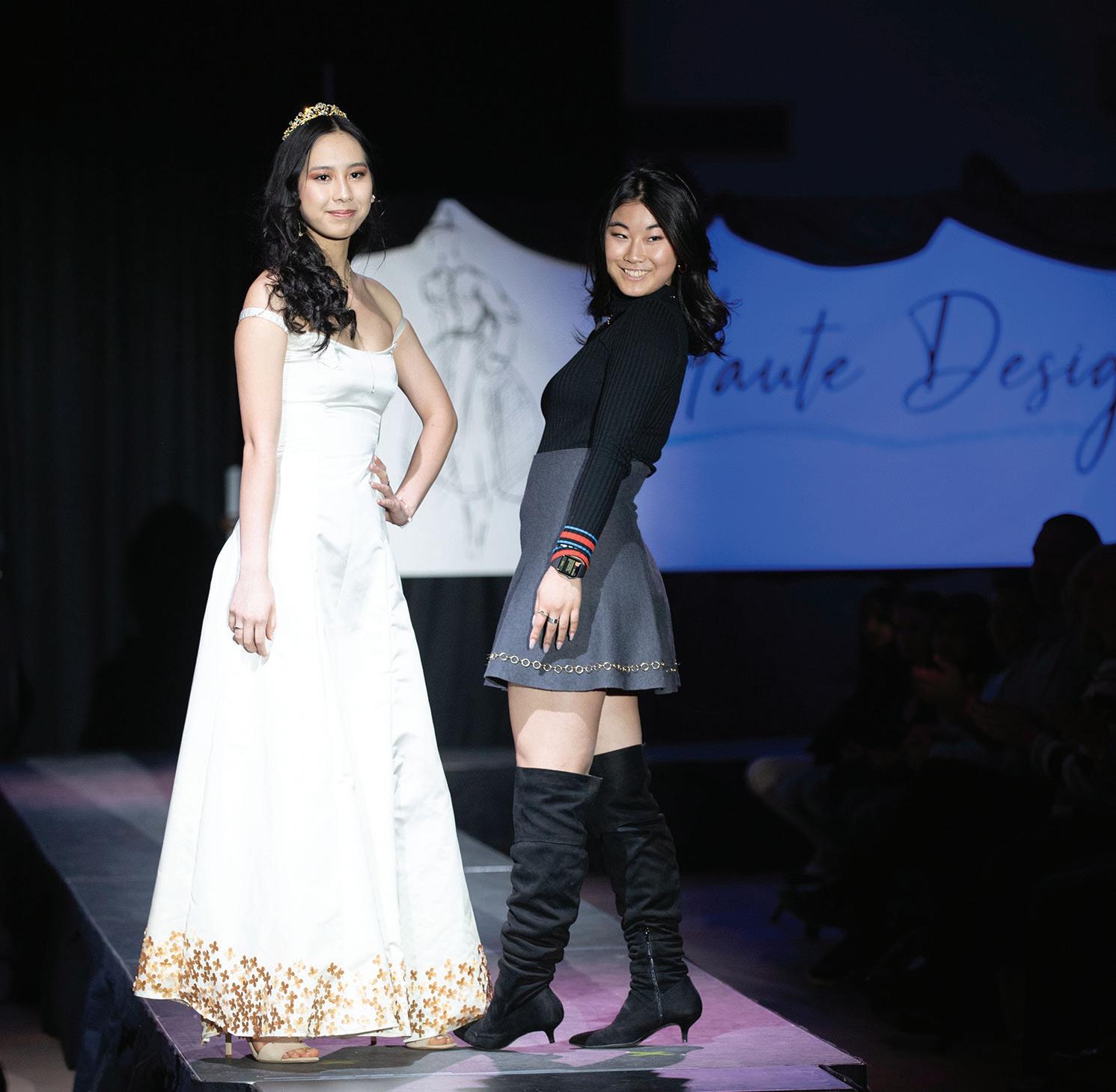
I tried something new
A massive full-school undertaking, the Haute Design fashion show is incredibly popular. This year’s show was entirely student-led and had 120 participants, including two project coordinators and 58 designers from all school levels. “I joined this program because I had designs that I had created,” says
Grade 7 student Aidan Rogers, “and I wanted to see them on shirts, not just on my iPad. I wanted them on something people could wear.” The resulting presentation of work from the 120 students was stunning and inspiring – striking evidence of what students are capable of in the context of project-based learning.
To become a designer in the show, the students participate in the co-curricular program called Fashion Forward. To design and make their garments, they learn to create designs on vector and CAD software, and to use machines like the laser cutter, 52" Roland printer/cutter and heat press, along with traditional technology such as sewing machines and irons. It’s a steep learning curve that can only be achieved with teamwork and collective expertise.
Once the garment designs have been mapped out, the participants ask their peers to model their work, collaborate with makeup and hair artists, and learn the choreography for the show, working together with a DJ. With a clear goal in sight, the students work tirelessly to make incredible garments and bring their creations to life.
AN ENGINEER’S MINDSET
I like working together
Most days after lunch, you will find our innovation labs exceptionally busy and filled with great joy as our youngest learners invest themselves in meaningful design challenges. They may be creating a new and innovative shoe prototype, reimagining the architecture of a treehouse or reinventing an outdoor toy.
These activities provoke our students to fully engage their curiosity and imagination, and to think critically. In essence, they’re learning to embrace an engineer’s mindset in ways that are aligned with our curriculum. This foundation starts in Kindergarten and is fostered and cultivated in the years that follow.
“I TRIED SOMETHING NEW AND HAD AN AMAZING EXPERIENCE. I CAN’T WAIT TO HAVE THIS OPPORTUNITY AGAIN AND CREATE SOMETHING NEW.”
– KATELYN TAO, GRADE 9
These eager, happy students are at the early stages of a continuum in which they will become ever more effective in collaborating, embracing failure and applying design-thinking principles. The valuable framework sets the foundation for them to succeed in their personal growth and confidence, their lives and their eventual careers – all that, while giving them a great deal of immediate learning and fun.

SUMMER INNOVATION AND TECHNOLOGY CAMP INTERNSHIPS
Learning from what we experienced
Once students gain a breadth of knowledge and expertise in using the tools and resources we have available in the innovation labs at HTS, we look for meaningful experiences and opportunities that can further that understanding. One such framework for expanding on that foundation is our Summer Innovation and Technology Camps.
The camps provide rich ground for students to learn resiliency along with new skills through hands-on experience, trial and error, and collaboration – and to apply that ongoing learning in real time and real life, as they interact with co-workers and campers in a structured framework.
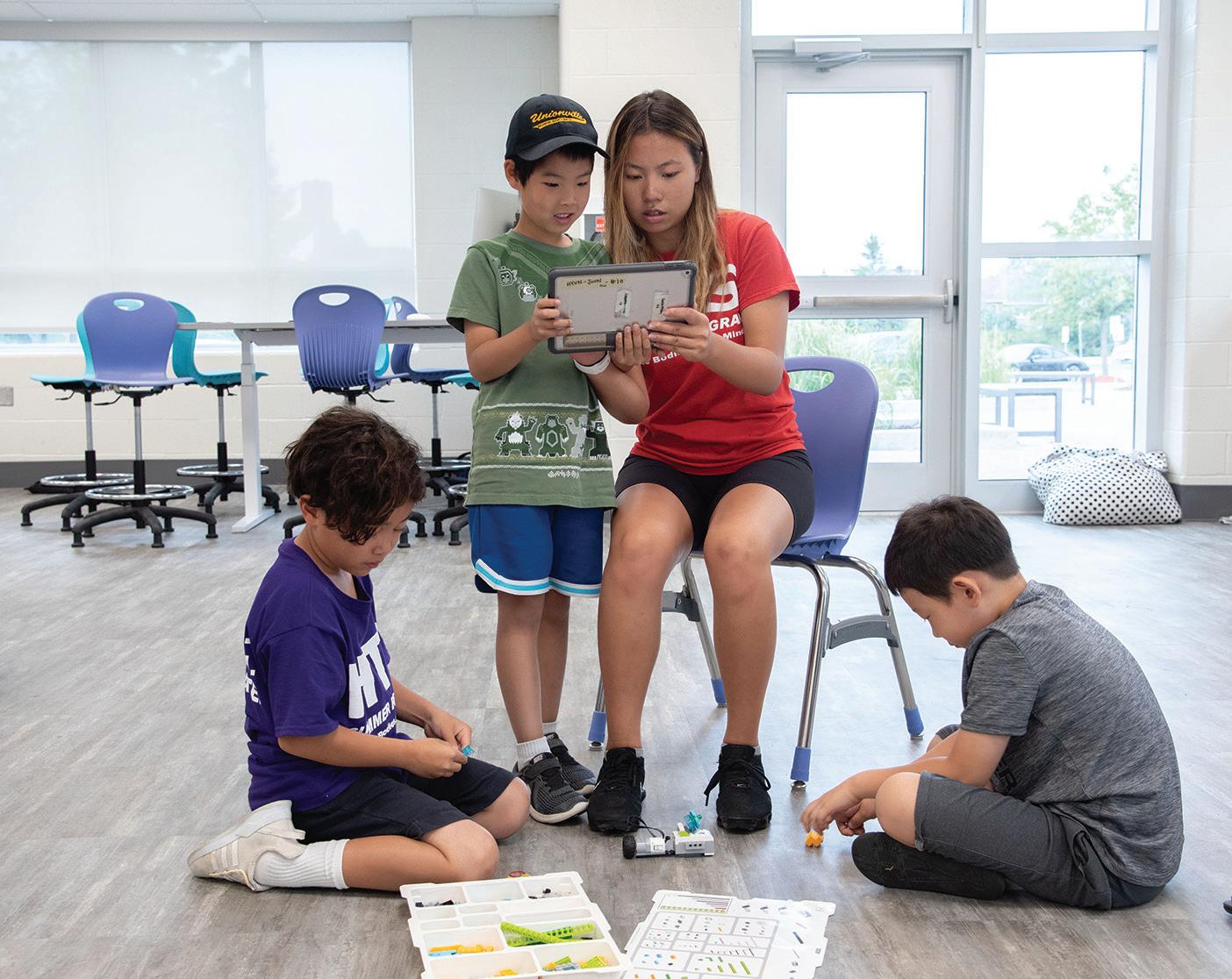
We select students to take on roles as interns, starting first as counsellors in training. They move on to program coordinator roles, which require them to assume responsibilities similar to ones they may face in their lives beyond HTS, including managing the other camp intern roles, team teaching and
planning with our technology integration team, while delivering great learning experiences for the campers in the program.
These are roles that require flexibility, responsiveness and sensitivity to professional relations – a challenge that participants complete with a whole new understanding of themselves, their strengths and the tools they have at hand to build on their framework for success in their own ways.
“I LIKE WORKING TOGETHER WITH OTHER PEOPLE TO BUILD SOMETHING HUMONGOUS AND AMAZING.”
– CHRYSSA REZVANIAN, GRADE 3
“I KEPT REVISITING AND LEARNING FROM WHAT WE EXPERIENCED AND TWEAKING THE PROGRAM TO MAKE SURE THEY LEARNED AS MUCH AS POSSIBLE... YOU RUN INTO SETBACKS AND YOU LOOK FOR CREATIVE WAYS TO SOLVE THEM. THERE IS NOBODY HOLDING YOUR HAND, AND YOU LEARN TO TAKE THOSE CHALLENGES HEAD ON.”
– CAITLIN CHEE-KIRKPATRICK, GRADE 12
Building Confidence Through a Co-Curricular Program
BY KEVIN CHOROWIEC AND ADAM MAINGOT, HTS STAFF AND DECA CO-ADVISORSThe variety of co-curricular programming at HTS provides our students with the opportunity to express themselves in ways that are meaningful to them. We know from experience that through co-curriculars, students learn how to manage their time, master new skills and develop their confidence in an enjoyable and supportive setting.
In his bestselling book Outliers: The Story of Success, Malcolm Gladwell states that “success follows a predictable course. It is not the brightest who succeed,” but those lucky enough to “have been given opportunities – and who have had the strength and presence of mind to seize them.” Joining a club at HTS is just that opportunity for our students.
Among the many clubs at HTS is DECA, a club offered around the world to high school and post-secondary students which offers practical business knowledge and experience through conferences and competitions. What started at HTS in 2016–2017 with students Christian ’18 and Anthony ’19 Argyropoulos and teacher Mr. Patrick James (now retired) has already grown to a club of over 60 students. Students have participated in regional and provincial competitions and, for the first time this past school year, an international competition. DECA’s mandate is to prepare emerging leaders and entrepreneurs in the fields of marketing, finance, hospitality, management, law and other business areas. The organization arms students with practical business knowledge and experience, as members have the opportunity to attend leadership conferences, compete in events and participate in community activities. Competitions involve real-life business scenarios in which members submit written components and participate in interactive presentations to judges.
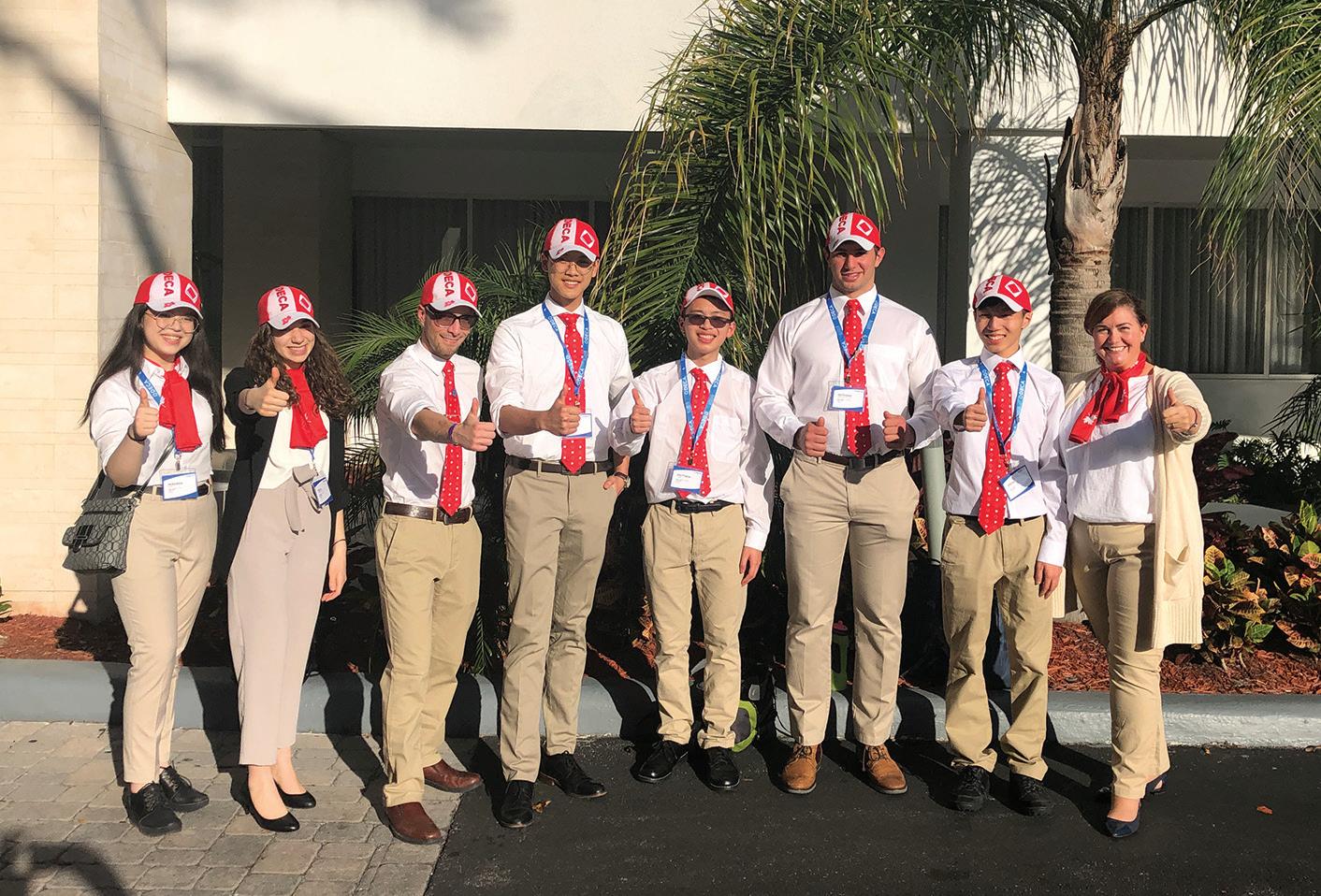
For Miranda Shen ’19, participating in DECA meant identifying an area of growth and learning how to better her skills. Even after being eliminated in the provincial competition in her first year and the regional competition in her second year, she remained undeterred. Miranda showed dedication and tenacity, never missing a club meeting even when she did not qualify to continue in the competition. Determined to make her last year in DECA her best, she and Tony Cao, now in Grade 12, presented an integrated marketing campaign for Burt’s Bees
that advanced them to the regional and then the provincial competition, followed by qualifying to attend the International Career Development Conference (ICDC) in Orlando, Florida, where they represented HTS last spring. Miranda and Tony placed in the top two in Canada and the top 10 in the world, and Miranda received awards in the Top Exam and Top Overall categories. Miranda’s story is just one great example of what students can learn from the experiences provided in our cocurricular clubs program, including perseverance, organization, being a team player and having a positive mindset.
For Mr. Adam Maingot, being new to HTS last year and becoming a co-advisor for DECA was a natural fit. He had advised a DECA chapter at his previous school and looked forward to working more closely with the HTS students. What Adam has learned is that it truly takes motivated and hardworking student leaders to run a successful co-curricular club, and he is proud of their efforts and contributions to offering valuable experiences to one another.
Participation in any co-curricular club helps focus students on developing their skills and learning a set of values that will guide them in their lives. Students learn more than a great chess move or how to program an application – they learn transferable skills that can be applied to any of their future endeavours. DECA is one of the many opportunities that provide HTS students with a chance to push their limits, learn new skills, build confidence and expand their capabilities.
We’re on the Right Path
BY JACQUELINE BUTLER, HTS TEACHER AND ENVIRONMENTAL SUSTAINABILITY COORDINATORIf success is defined as the attainment of a goal or a desired outcome, then HTS is clearly on the road to success in its commitment to becoming more environmentally sustainable.
One strong indicator of this success is the level to which our community has engaged with our vision to reduce our carbon footprint and give back to the beautiful environment that we call home. Nestled around the headwaters of the Rouge River, the HTS campus teems with natural beauty and is home to many plants and animals, some of which are currently on the endangered species list.
Our EcoTeam, with over 100 active student members across all divisions, is the foundation for all the great work that happens throughout the school year. Student leaders from Lower to Senior School run numerous campaigns and activities together, ranging from e-waste collection and used battery and marker recycling drives to harvesting honey and maintaining the worm composting on campus.
By the numbers, success looks like this: 80,000 honeybees being given a habitat for their colony to help counter the bees’ decline in the wild; 500 trees planted to further regenerate the forest on campus; 120 Atlantic salmon raised in our science
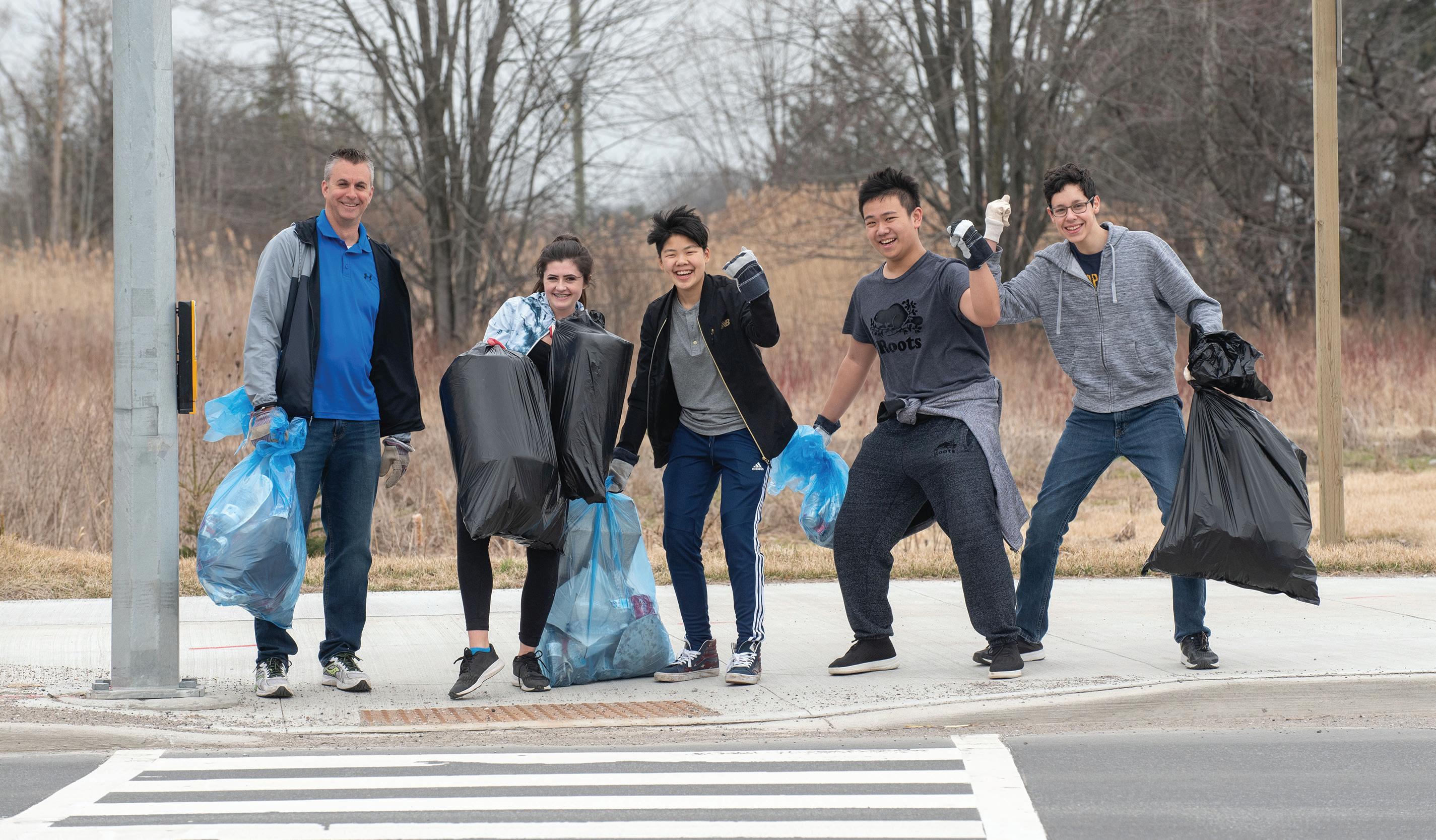
lab and released into their native habitat; 12 maple trees on campus tapped to make maple syrup in the HTS Dining Hall; four new pollinator gardens created to support native species; and three raised garden beds planted with seeds to grow vegetables. The last school year also saw us attain Platinum EcoSchool certification – the highest level of achievement in the EcoSchools program, awarded to schools that have demonstrated a significant community connection relating to their sustainability goals.
At the heart of the issue, our success is defined through engagement – particularly engagement from students, but also from staff, parents and our greater community. HTS has had strong student engagement at all levels through our EcoTeam clubs, which are student-run under the leadership of selected Grade 11 students. Our students have been instrumental in getting the attention of our policy-makers and other HTS stakeholders. After the EcoTeam presented findings from their annual waste audit during a full-school Chapel last year, our Grade 2 students had their “green conscience” activated and were motivated to write letters to the school leaders advocating for change. The Grade 2s mobilized senior EcoTeam leaders, classroom teachers, food services and administrators to “do better,” and in response to their efforts, HTS is working hard to reduce the amount of waste we produce in our daily operations. In reflecting on her experience with these students last year, Grade 2 teacher Mrs. Ashley Csinos says, “I think the success of the project was in part because the students felt like they had ownership and were given a voice. In the spring, we worked through an opinion writing unit and I always told them that their opinions matter. This became obvious to them as soon as their idea began taking shape on campus – the students naturally took the lead.”
off to a great start. We have already implemented new waste receptacles throughout the school, and we’ve reduced our single-use plastics significantly in our daily snack program and at events hosted by the school – all thanks to the graduating class of 2029.
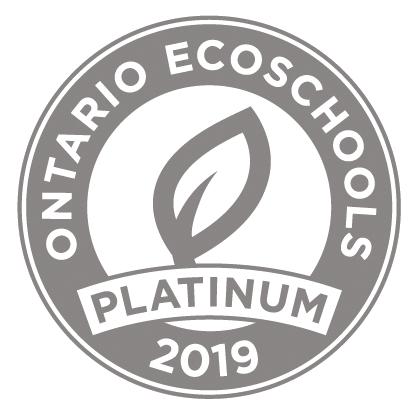
Our students will lead the way in bringing about the kind of change that we all need to participate in. Their engagement feels contagious, and we are looking forward to the support of the HTS community for this school year and in the future.
The 2018–2019 EcoTeam leaders, Helena Kulasingham and Nicole Lee, were instrumental in bringing the Grade 2 students’ call for change to key decision-makers. These young people created a presentation for the Board of Governors asking for support and guidance to further reduce our waste (with the goal of increasing our landfill diversion rate to at least 75 per cent), and also to improve energy conservation in our building operations to earn a better Energy Star rating – all in the next five years. This work has been adopted by the new Green Team, consisting of the EcoTeam leaders, faculty, administration, food services and parent volunteers. This campaign, called “75 in 5,” is
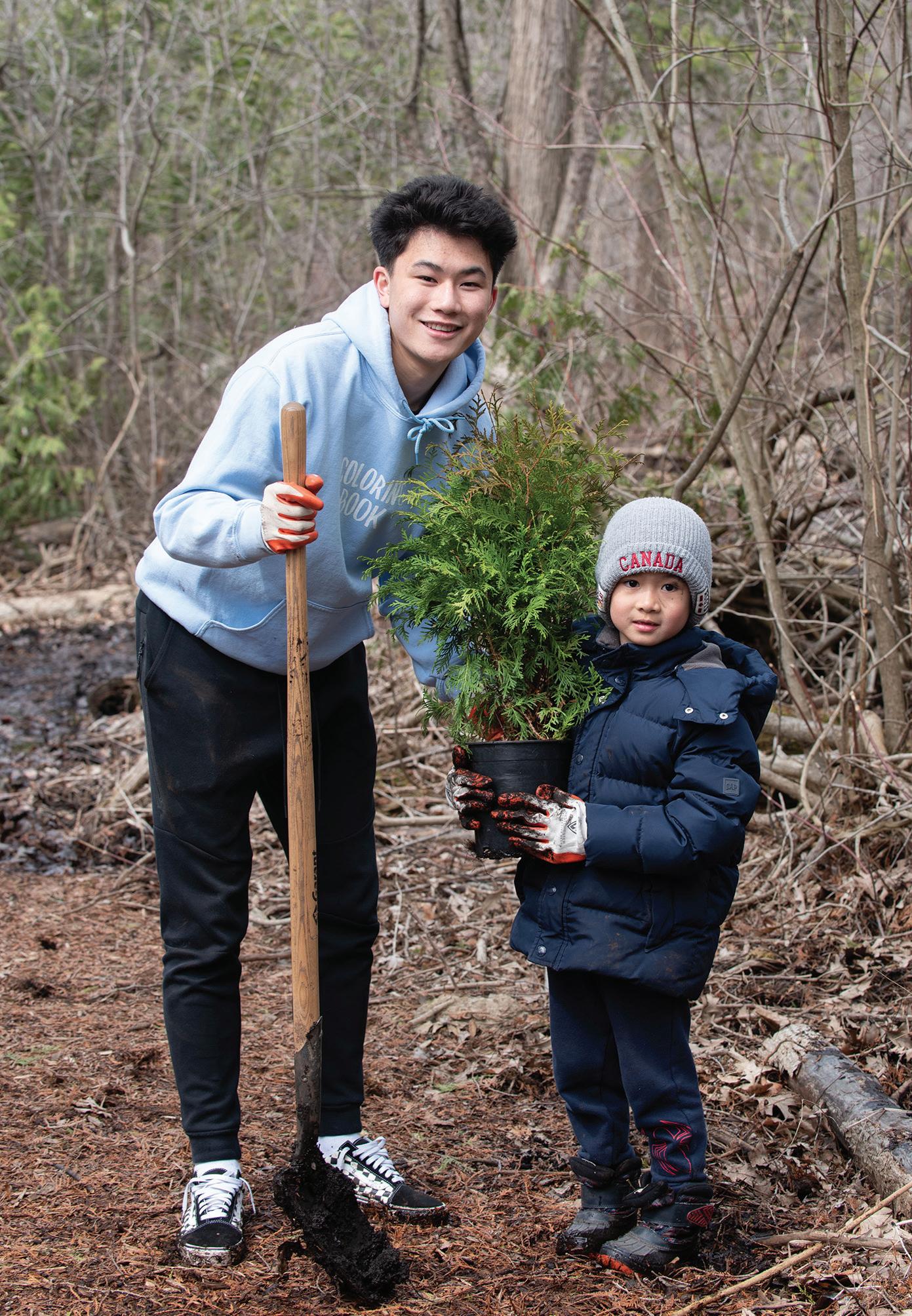 The Ontario EcoSchools Platinum award is the highest level of achievement in the EcoSchools program. The platinum award is given to schools that have demonstrated a significant community connection relating to their sustainability goals.
The Ontario EcoSchools Platinum award is the highest level of achievement in the EcoSchools program. The platinum award is given to schools that have demonstrated a significant community connection relating to their sustainability goals.
“I THINK THE SUCCESS OF THE PROJECT WAS IN PART BECAUSE THE STUDENTS FELT LIKE THEY HAD OWNERSHIP AND WERE GIVEN A VOICE.”
Viren Shastri, Class of 2013
BY MAGGIEIn 2013, Viren Shastri graduated from HTS with plans to study engineering at Queen’s University. He initially intended to combine his studies with his passion for athletics by becoming an engineer and designing golf clubs. And while he considered mechanical engineering in his early years, his interest soon shifted toward the field of mining. In contrast to the small scope of designing golf clubs, mining engineering allowed Viren to look at things on a much larger scale. By relating his studies to real-world scenarios, he was able to better understand new concepts and was excited about life after graduation.
Canadian mining company that currently has four operating gold mines around the world. After spending the summer at the mine site in Burkina Faso, Africa, he “was hooked” and returned more determined than ever to seek international work after earning his degree. Viren was also inspired by his older brother, Daven ’09, who is currently working in New York. Daven’s move to the United States set an example for his younger brother and showed him that “it’s okay to take a risk and work abroad.”
After his third year at Queen’s, Viren gained work experience abroad through a summer internship with IAMGOLD, a
After completing his program at Queen’s, Viren jumped straight into working for another Canadian mining company, Kinross Gold. Kinross is one of the top gold mining companies in the world, with projects in countries including Brazil, Chile and Russia. For the past two years, Viren has been working at “two remote mine sites in Russia located above the Arctic Circle, not far from the Russian-Alaskan border.” The cultural adjustments

“IT’S OKAY TO TAKE A RISK AND WORK ABROAD.”
were difficult at first, but he adapted quickly and has even picked up some of the language. Viren says his ability to adapt to new situations is a vital skill that he attributes to his time at HTS and his involvement in co-curricular activities.
Viren is currently stationed, with about 800 other people, at one of the most remote mines in the world. The nearest city is over three hours away by plane. Viren’s life currently operates on a 10week cycle – a “six-four fly-in, fly-out roster” in which he works six consecutive weeks followed by four weeks of vacation. During the six weeks at work, Viren lives in dormitory-style housing with housekeeping and kitchen staff on-site who ensure facilities are clean, laundry is done and everyone is fed. He describes it as being “like a military base but with hotel service; it’s not for everyone, but I love it!”
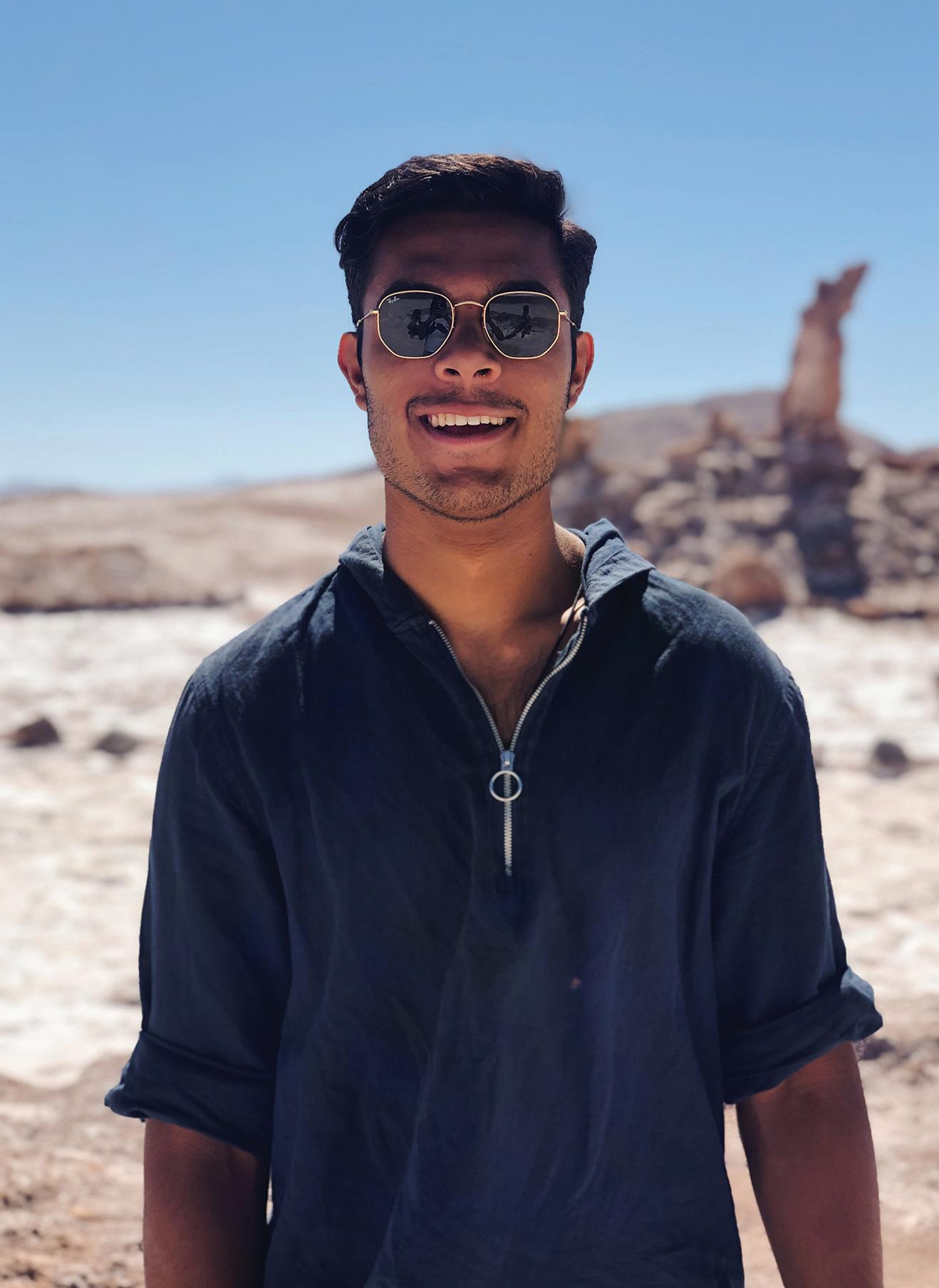
Reflecting on his current lifestyle, Viren notes that life moves quickly, especially on a 10-week cycle, but he has learned to take advantage of the four weeks he has off from work. While he spends much of his free time travelling, he does return home to Markham and wants to make more of an effort to keep in touch with old friends. He has also discovered a love of reading, which he says stems from a desire to be constantly learning and bettering himself. One book that resonated with him recently was The Defining Decade by Meg Jay, a book that he would recommend to any recent graduate. Having been inspired by the book, Viren stresses the importance of taking chances and appreciating every opportunity that presents itself. “Find what you like to do and fully commit; don’t be afraid to follow a passion or an interest,” he says. “Even if it doesn’t work out or you change your mind, at least you tried.”
At the end of the six working weeks, the excitement felt is akin to the anticipation of the school year coming to a close. While this lifestyle was an adjustment at first, Viren says “the travel and international exposure has been an incredibly rewarding aspect” of his career. After spending six weeks north of the Arctic Circle, Viren searches for the sunshine and warm weather. He has spent time in Chile, where he studied Spanish, he’s enjoyed the lifestyle and atmosphere of Bali, and he’s even developed a passion for surfing. One trip that stood out in particular for Viren was his trip to China, where he says he learned a lot from his cultural experiences.
Throughout his travels, Viren has relied on a level of selfconfidence that has only grown since his time at HTS. Viren was a House Captain, a Prefect and the captain of several sports teams. This diversity in leadership roles made him a more well-rounded student, and he believes that it has made him more adaptable to new experiences as an adult. Looking back on his time at HTS, he also remembers an emphasis on the importance of networking and building a strong community of people around you. Through his work, Viren has had the opportunity to connect with people from all over the world, and he has learned that empathy is the key to connecting with others. When asked about his favourite memories from his school years, Viren says the Prefect skits were always enjoyable. During those performances, he was pushed out of his comfort zone in transforming from an athlete into an actor. “Believing in yourself is the first hurdle,” he says, and he remembers feeling his confidence grow stronger with each performance. To Viren, learning to have confidence is one of the most vital skills for your personal, professional and academic life.
As for the future, Viren says he feels lucky to be in a field with so much potential for growth. With such a large global industry, there are many opportunities to work abroad and he would love to spend some more time working outside of Canada. Viren is excited about the possibilities for the future, but for now he will continue to stay curious and keep learning, every chance he gets.
“FIND WHAT YOU LIKE TO DO AND FULLY COMMIT; DON’T BE AFRAID TO FOLLOW A PASSION OR AN INTEREST."
CAMPAIGN AND BUILD UPDATE



Our pursuit of excellence enables our future in innovation. The next phase of this exciting new chapter on our path to greatness will see extensive and imperative improvements to the functional and physical design of the HTS campus. These changes will transform how we interact with each other and engage in the physical environment – all of which will foster inspiration and cultivate creativity while balancing health, well-being, sense of community and belonging. These changes will have a considerable impact on learning, and the structure of our school schedule will be redesigned to provide further opportunities to grow and expand our student learning and programming.
We are currently in the second phase of our development, which began with the Shaped by Experience Campaign and has now evolved into Inspiring Greatness: Designing the Future.
At a full-school Chapel this past spring, Helen Pereira-Raso shared some of the renderings for the new spaces. As she progressed through the images and explained the reasons for the new designs, the students cheered with excitement. The following day, Joey, now in Grade 4, came to school with a donation – he brought in money his grandpa had given him as a gift. This was our first student donation to the campaign. When asked what he was most excited about, Joey said the changes to the Dining Hall because they mean he’ll be able to have lunch at the same time as his younger sister.
This summer, the demolition and preparations began, which have been most noticeable just beyond the front entrance to the school. Here are the details of all the incredible new spaces:
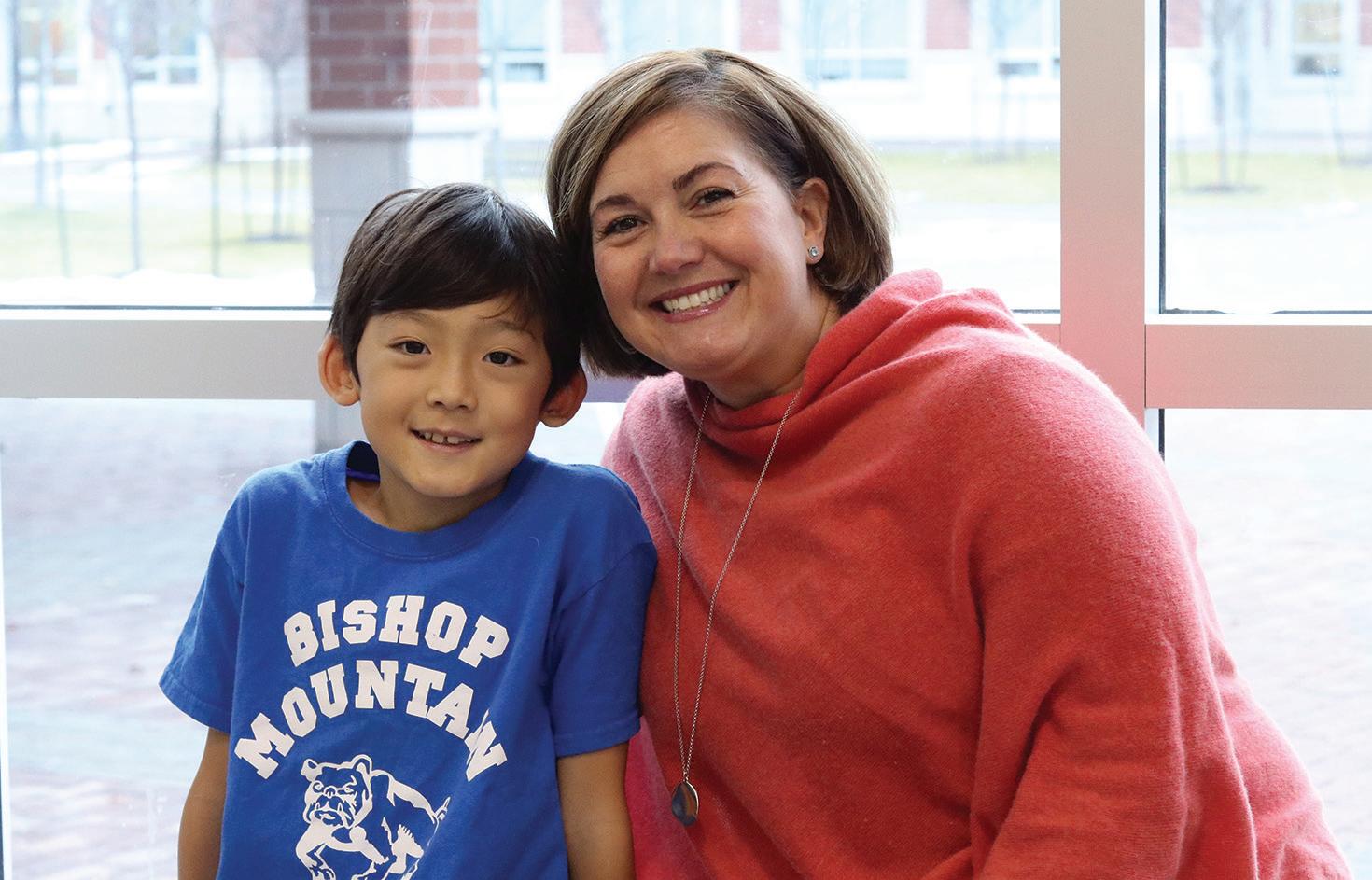

GALLERY
The Gallery will be a flexible space, offering opportunities for our community to honour student learning through exhibits, performances and storytelling. This welcoming, engaging and inspiring community hub will exemplify the sense of belonging that everyone feels when they visit or join HTS.

STUDENT SUCCESS CENTRE
To the right of the Gallery will be our new Student Success Centre, housing Student Success counsellors and coaches supporting the diverse needs of our learners – a key part of how we personalize our students’ learning. The Student Success Department will have a space to meet with families and university representatives, as well as individual areas to support our students as they begin their journey of researching and applying to post-secondary education institutions. Additionally, our Student Success coaches will have a newly renovated Learning Lab to assist students who require resources, spaces and tools to support their learning.
MIDDLE AND SENIOR SCHOOL LEARNING COMMONS
Our previous Senior School library is being transformed into a modern learning commons for student learning happening both within and beyond the walls of our school. The Learning Commons will have spaces for individual and group study, and technological enhancements so our students can connect to global partners and traditional resources along with innovative research opportunities supported by a teacher-librarian. Flexible and adaptable furnishings and spaces will maximize the use of the Learning Commons while providing students with the opportunity to use the facility in the way that suits them best.
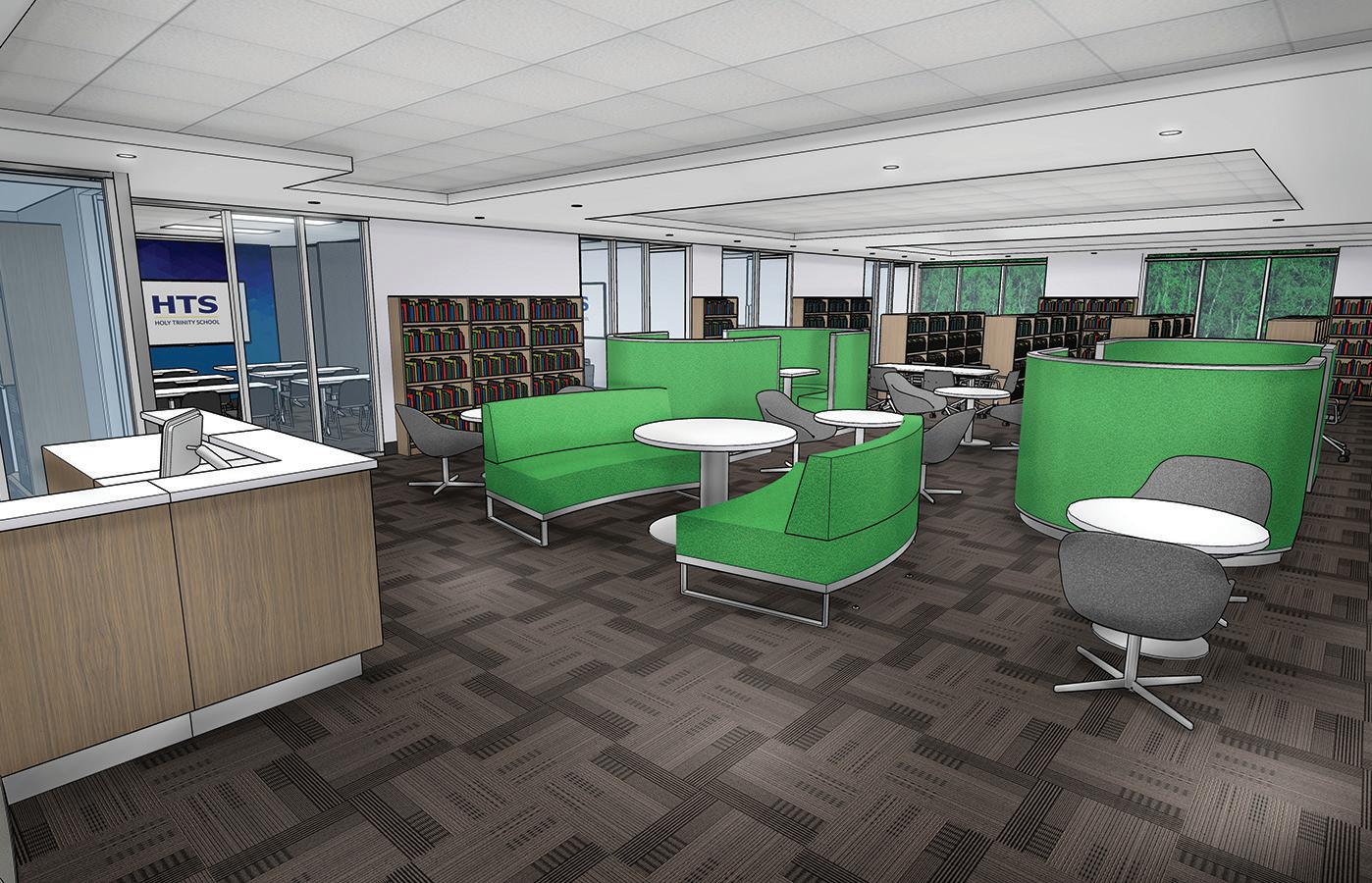
BLACK BOX THEATRE AND DRAMA STUDIO CLASSROOM
A state-of-the-art Black Box Theatre, with a 40-person viewing area and a Drama Studio classroom, will be built upstairs in the central hub of the Senior School. Our drama program has an incredible legacy in our school, and these spaces will

allow every classroom to share their learning with families, students, staff and visitors on a regular basis. These new spaces will be dedicated to drama and performance, celebrating the importance of the arts in fostering creativity, confidence, selfesteem, community and critical thinking – all skills the world demands of its citizens.
ARCHIVE ROOM
Our journey over the last 38 years necessitates a dedicated space to preserve and honour our history and pay homage to all that we have accomplished and will continue to accomplish. The Archive Room will be a space to learn, curate and share important school artifacts with the generations of students to come.

HAWK SHOP AND CAFE
The school’s Hawk Shop will be upgraded to a full-service shopping experience, becoming a gathering place for parents and students alike to purchase healthy snacks, uniform and spirit wear pieces, and any item students might need throughout their day.

DINING HALL AND MEZZANINE
The current Dining Hall will be renovated to include a brand new upper mezzanine area with additional seating and renovations to the functionality of our kitchen. These improvements will allow us to accommodate all students and staff over two lunch periods instead of three. The days of Senior School students having lunch at 1:15pm will be a thing of the past.

LOWER SCHOOL ART AND DESIGN STUDIO
HEALTH AND WELLNESS CENTRE
Healthy minds need healthy bodies. We are committed to developing even more opportunities for our students to foster a healthy mindset and healthy habits. Our Health and Wellness Centre will elevate the HTS experience to new heights, offering a holistic approach to physical, emotional and spiritual well-being.
This centre will extend beyond the footprint of our current gyms. In addition to a state-of-the-art fitness studio with exercise and weight-training equipment, we are also adding a bright multi-purpose gym space that will serve for classes such as Pilates or yoga, as well as a range of other activities.
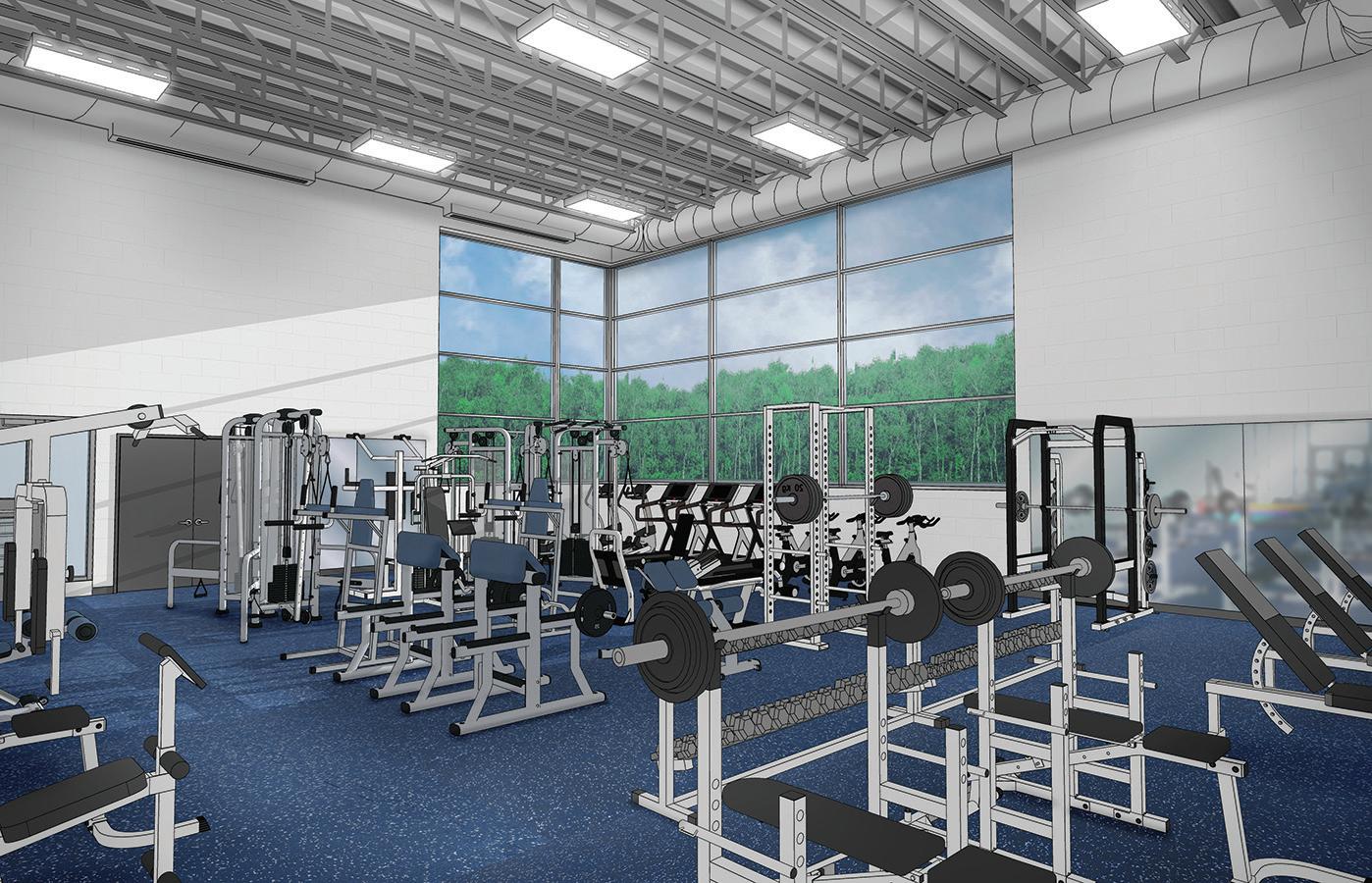
Technology is integrated into all levels of teaching at HTS and truly transforms the learning experience for each student. The creativity and imagination of our learners is what we want to cultivate each and every day. The Lower School students currently have a rich program, so by creating an inspiring space for them, we know their young minds will continue to dream, innovate, design and create all the wonderful things they want to bring to life. Enhancing our facilities to include spaces such as these prepares our young students to value creativity and creation – skills they will need to make a difference in the world as they grow into adulthood.
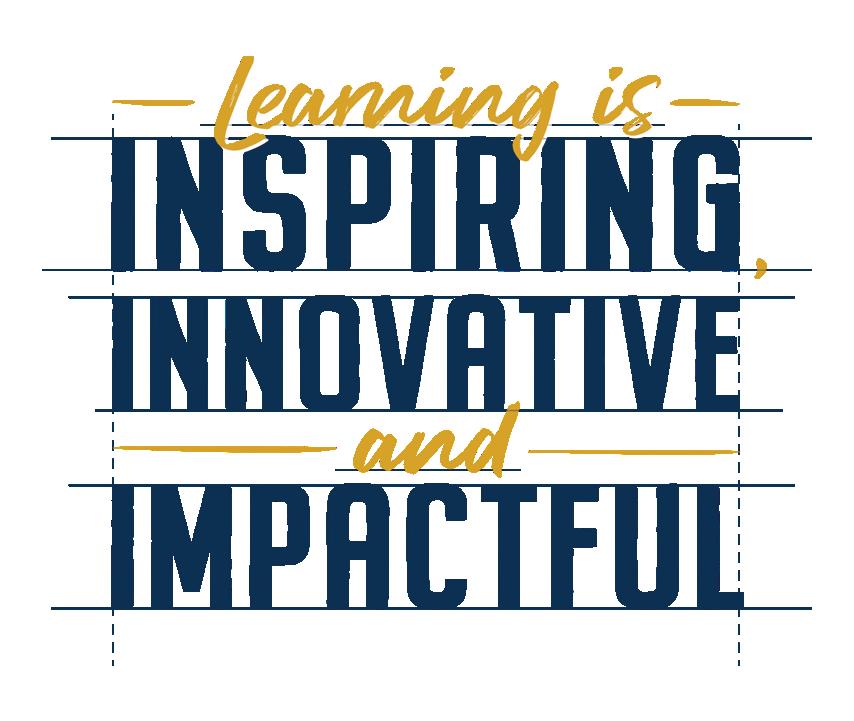
How are we funding this amazing project?
One source of funding is through the generosity of families, staff and friends of HTS who have donated or made a pledge to donate over time.
Helen Pereira-Raso allocated a significant portion of the Annual Fund Head’s Discretionary Fund towards the building of the new spaces. This is an area she is most passionate about as the spaces will directly benefit our learners.
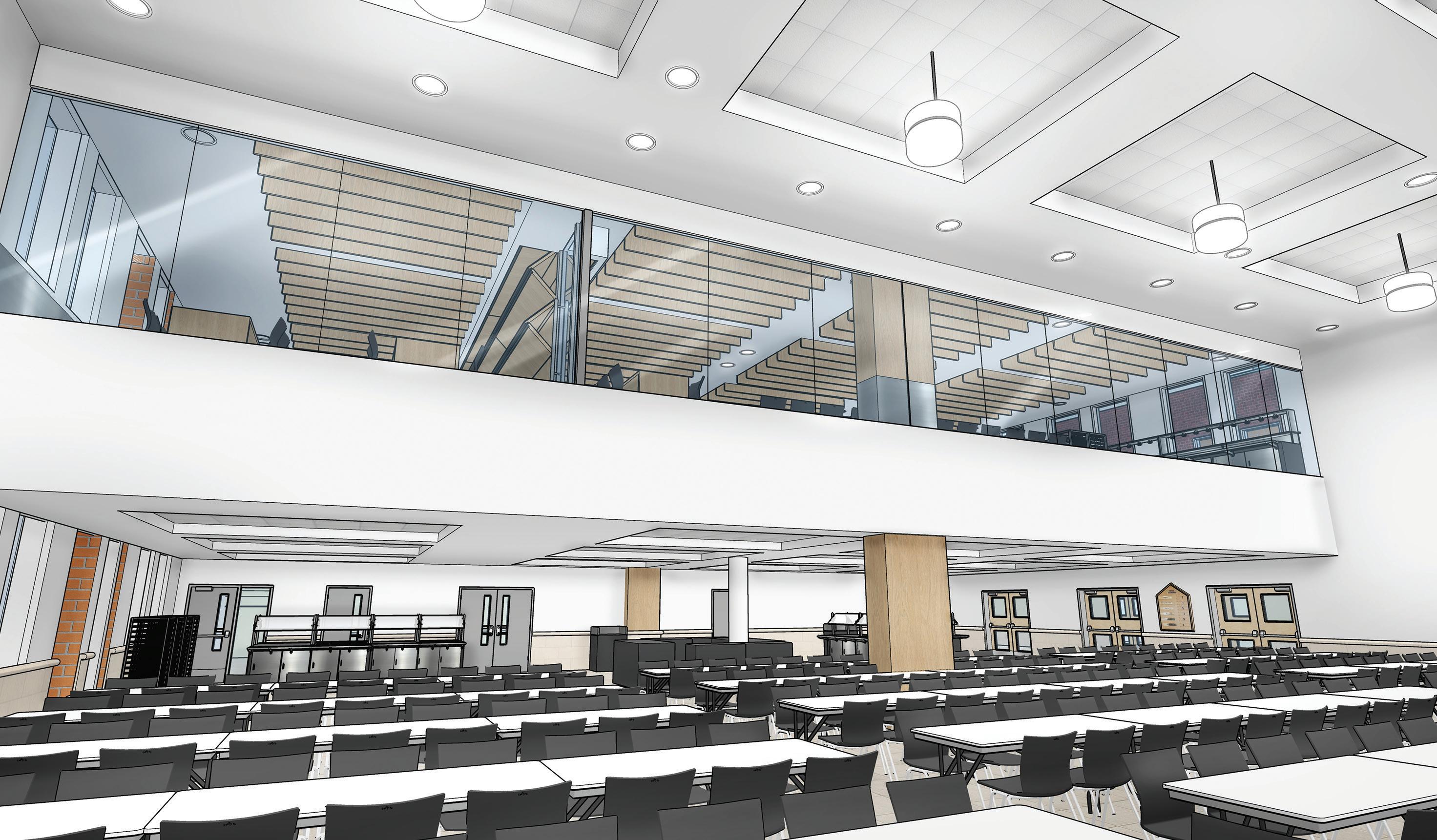
Together with the support of donors from the first phase of the campaign, as well as families who came forward to offer gifts in kind, these funds are what enabled us to start the demolition. We look forward to sharing their stories of giving throughout the year, as well as those of many other amazing donors.
In this issue of Corridors, you can read about two of our donors – a staff spotlight on Ms Gillian Martin and a spotlight on the Pallas family.
The unwavering support we have received from generous parents, staff, alumni and friends has enabled HTS to grow into the school it is today.
We’re all in this together, and that’s why we are as committed to our donors as we are to our students. You believe in us –and in return, we want to do everything possible to ensure our environment fosters leaders and great citizens who value transformational excellence just as much as our community.
Join us as we transform our school into the place that every student dreams of attending. To donate and to learn more, please go to hts.on.ca/campaign or contact Maria Locacciato, Executive Director of Community Relations and Development, at mlocacciato@hts.on.ca.
The Summer Camp at HTS is open to the public and offers a wide variety of safe, educational and fun-filled activities for children ages 3.5-16.
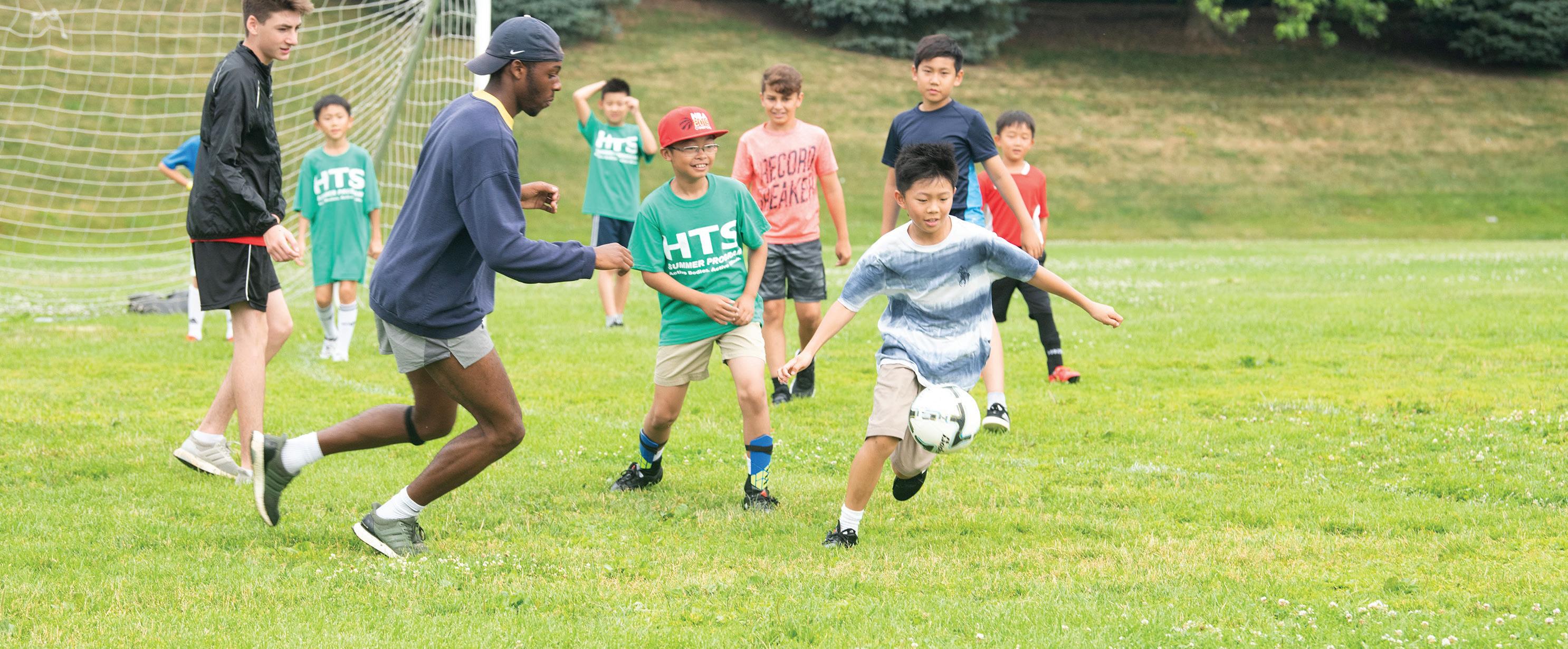
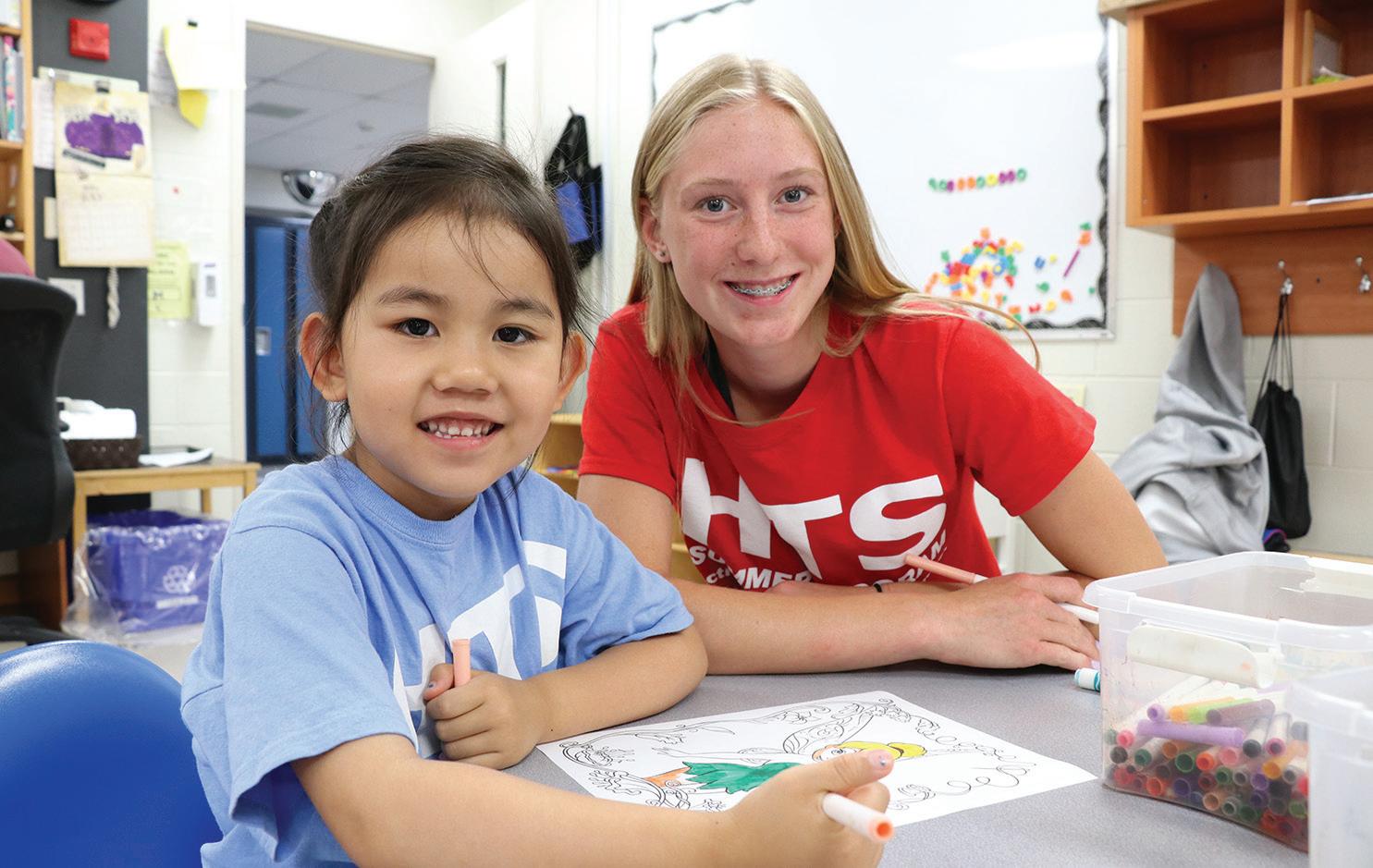
With our enthusiastic summer staff of HTS faculty, alumni and Senior Students, your child will have the chance to embrace challenges, develop skills, make new friends and build memories to last a lifetime. We encourage our campers to be
summer CAMP
enthusiastic participants, and we challenge each camper to be the best version of themselves.
In addition to providing high-quality instruction, our HTS Camp staff are passionate about teaching core values such as respect, teamwork, compassion and honour, inspiring all campers to grow as citizens in their community.
The 2020 Summer Camps will run from late June to the end of July and camp offerings will be announced in February 2020 along with the registration information.
Visit

SUMMER school
The HTS Summer School offers students a place to let their curiosity go beyond the regular academic school year. With a diverse selection of summer courses, students in Grades 8 to 11 can find one in their area of interest at the appropriate grade level. The HTS Summer School proudly offers Grade 9 to 12 credits in many subject areas.
Smaller class sizes allow students to dive into any subject with personalized support from their teacher. Having one course to focus on is a unique experience that students do not have in their regular academic year. By focusing on one subject, students are supported in deepening their understanding of the course material, absorbing difficult concepts and aims to expand their areas of interest.
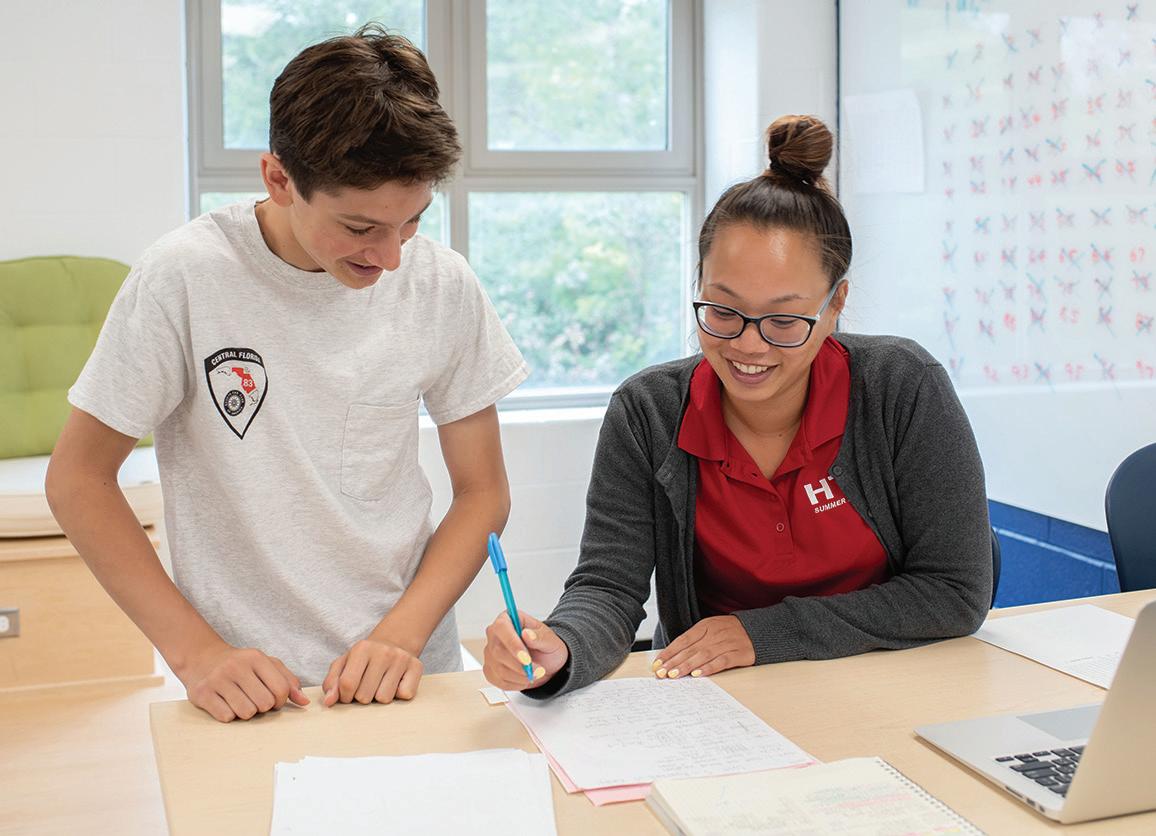
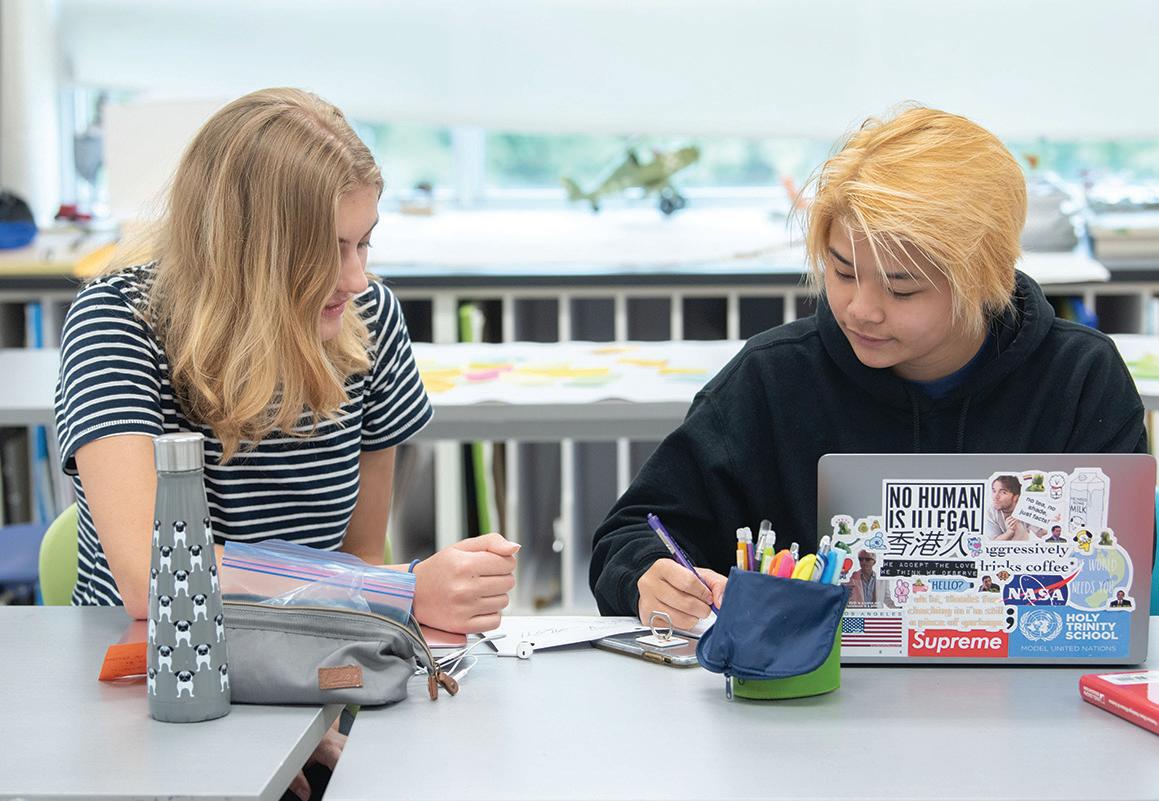
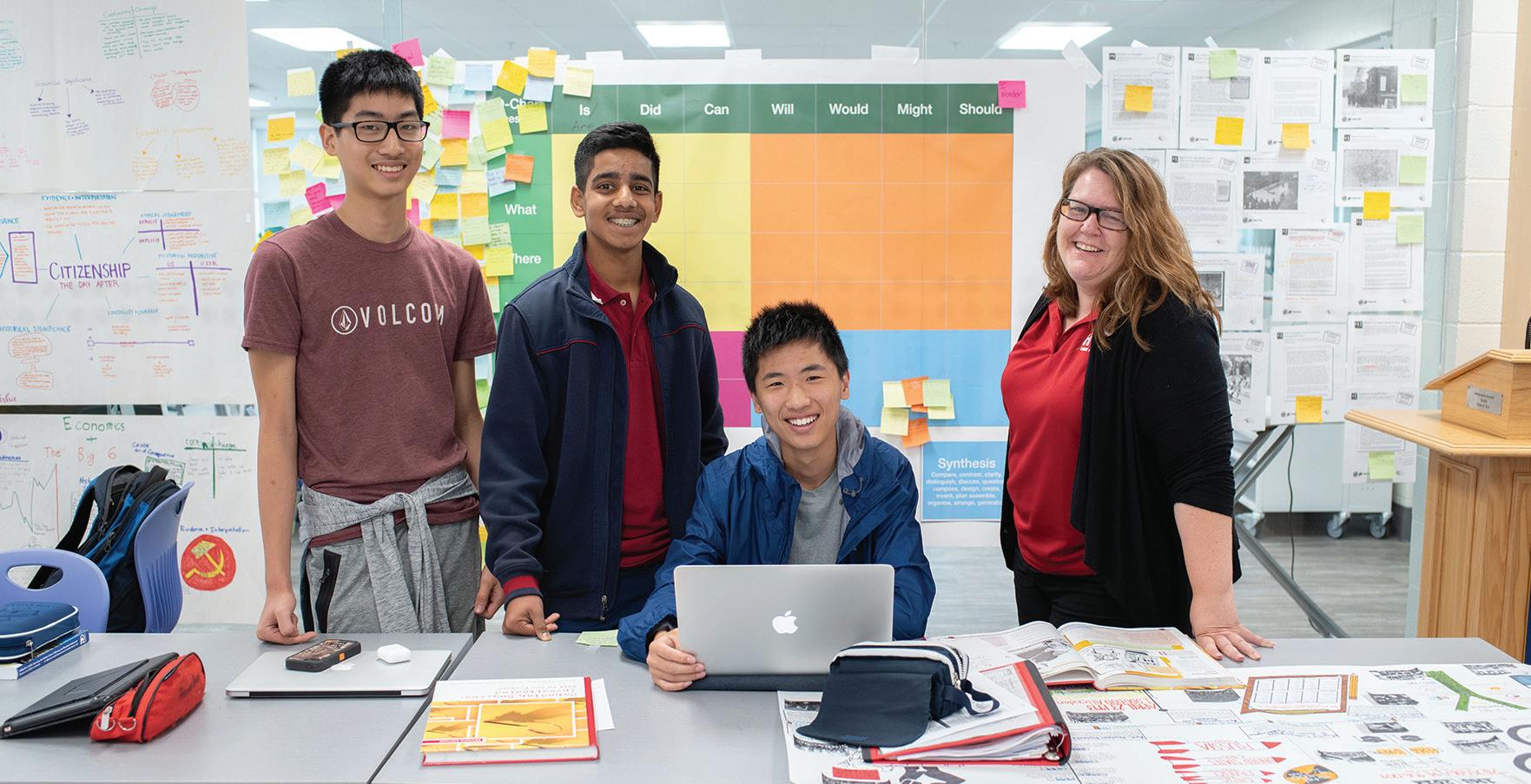
Taking a summer course is an excellent choice for students looking to reach ahead and improve their knowledge base in a particular subject. Summer courses can help students gain confidence and hone study skills, and often add flexibility to their course selection in the following years.
SUMMER SCHOOL COURSE OFFERINGS
GRADE 9
Core French, Applied — FSF1D
Exploring Technological Design — TIJ1O/TDJ1O (up to 3 modules)
Mathematics — MPM1D
GRADE 10
Civics and Citizenship/Career Studies — GLC2O/CHV2O
Computer Studies — ICS2O
Canadian History since World War I — CHC2D
Mathematics — MPM2D
GRADE 11
Biology SBI3U
Chemistry SCH3U
GRADE 12
English — ENG4U
World Issues — CGW4U (travel credit)
Holy Trinity School Proudly Presents:
Based on the novel by Jane
Austen

Sense and Sensibility Sense and Sensibility
by Kate HamillFebruary 26 - 29, 2019
hts.on.ca/events
Frank M. D’Andrea Theatre
Holy Trinity School
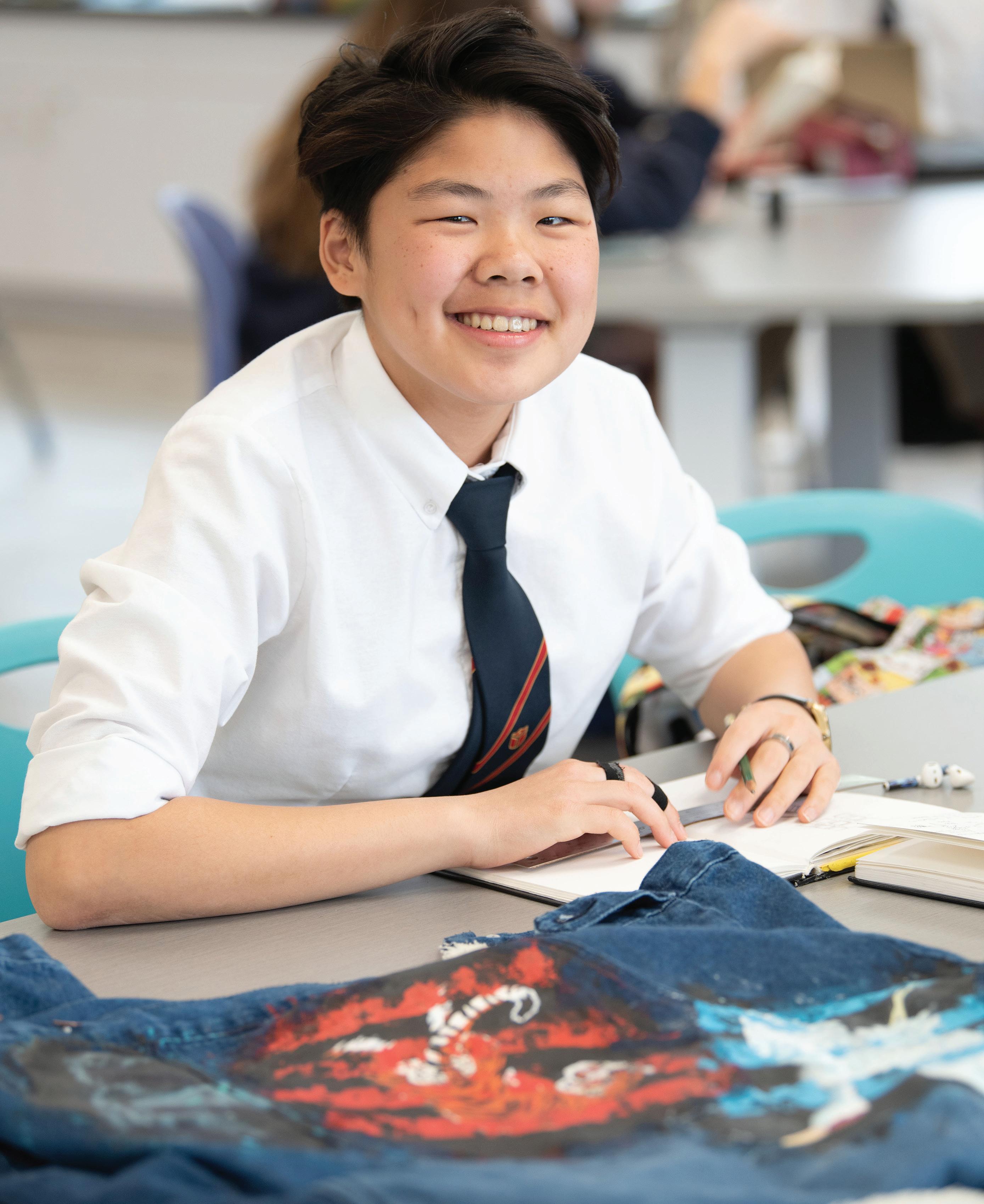
find something more.
Every independent school provides leadership skills, academic excellence and character development. To us, those are the basics. What sets HTS apart is our fundamental approach to education. We provide personalized, progressive learning experiences that nurture thoughtful citizens who are curious and well prepared for success in a changing world.


